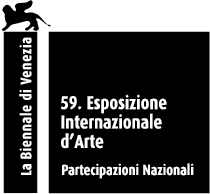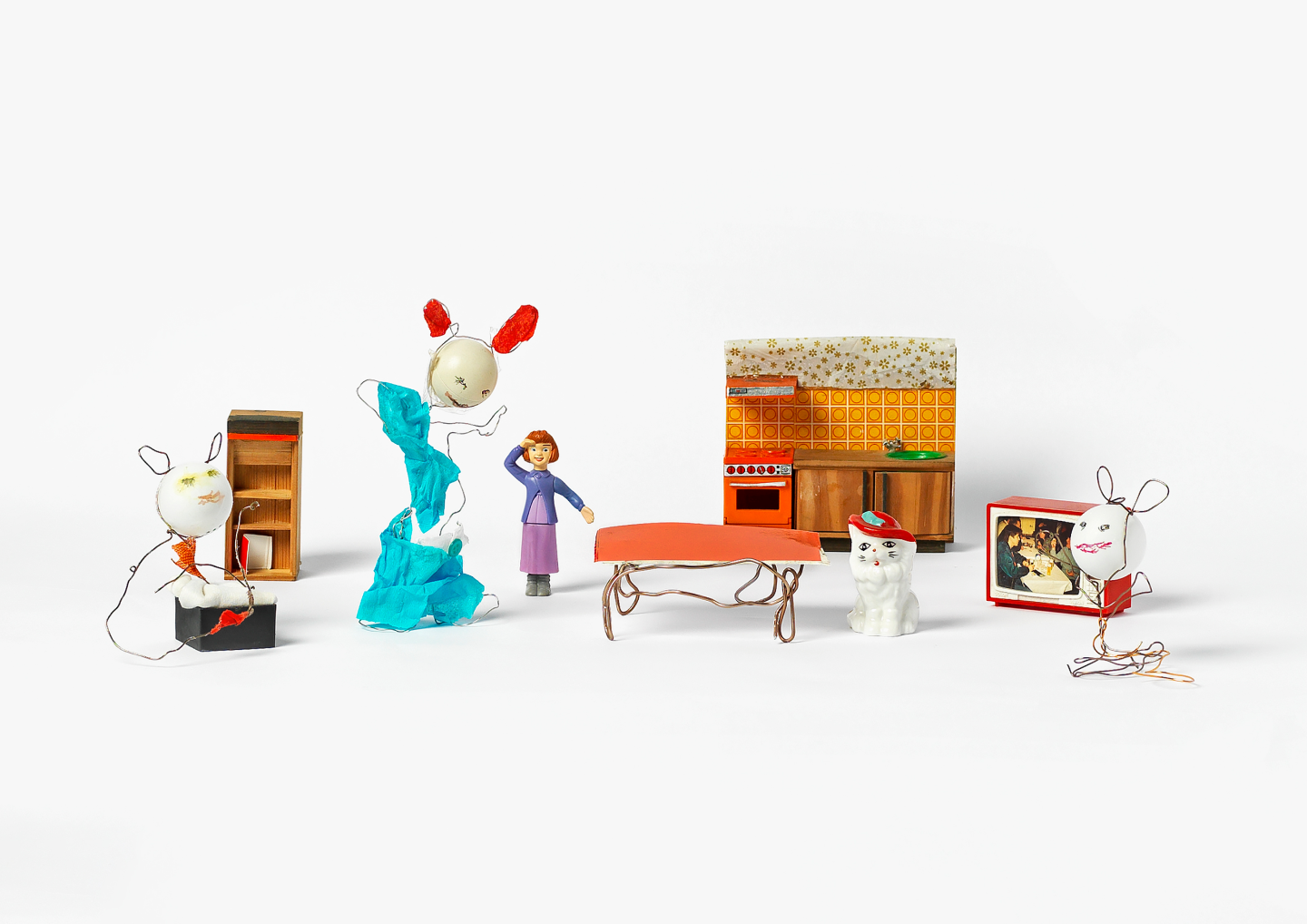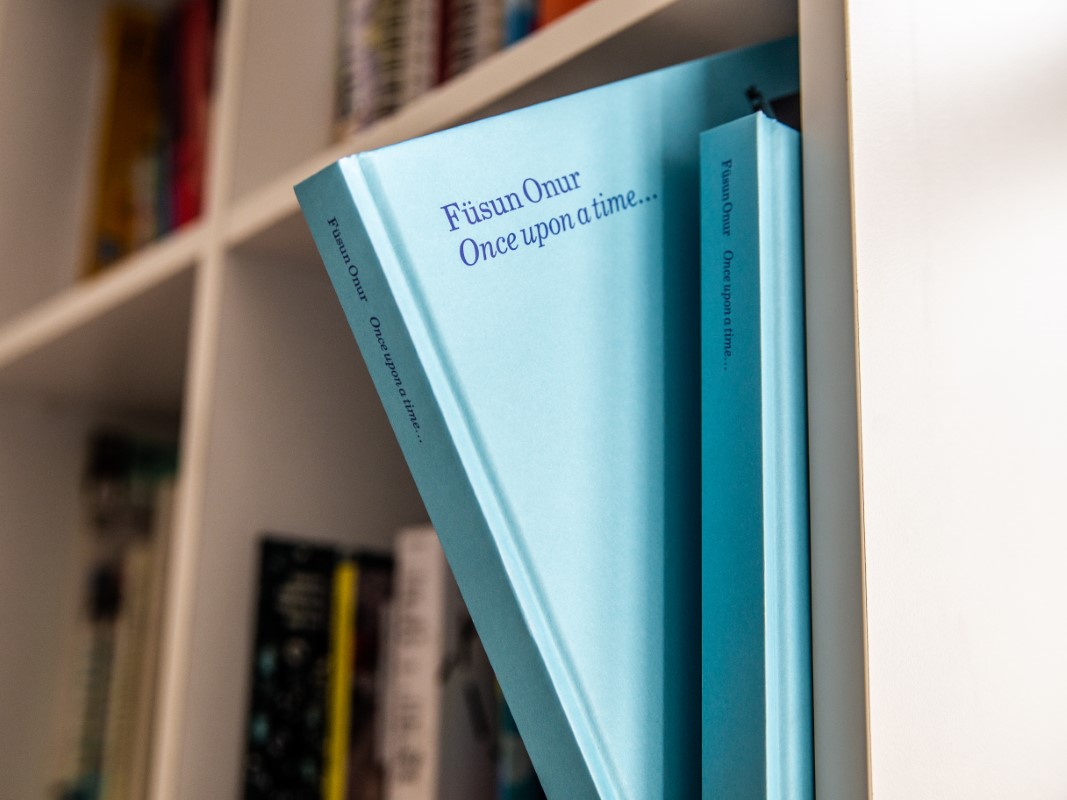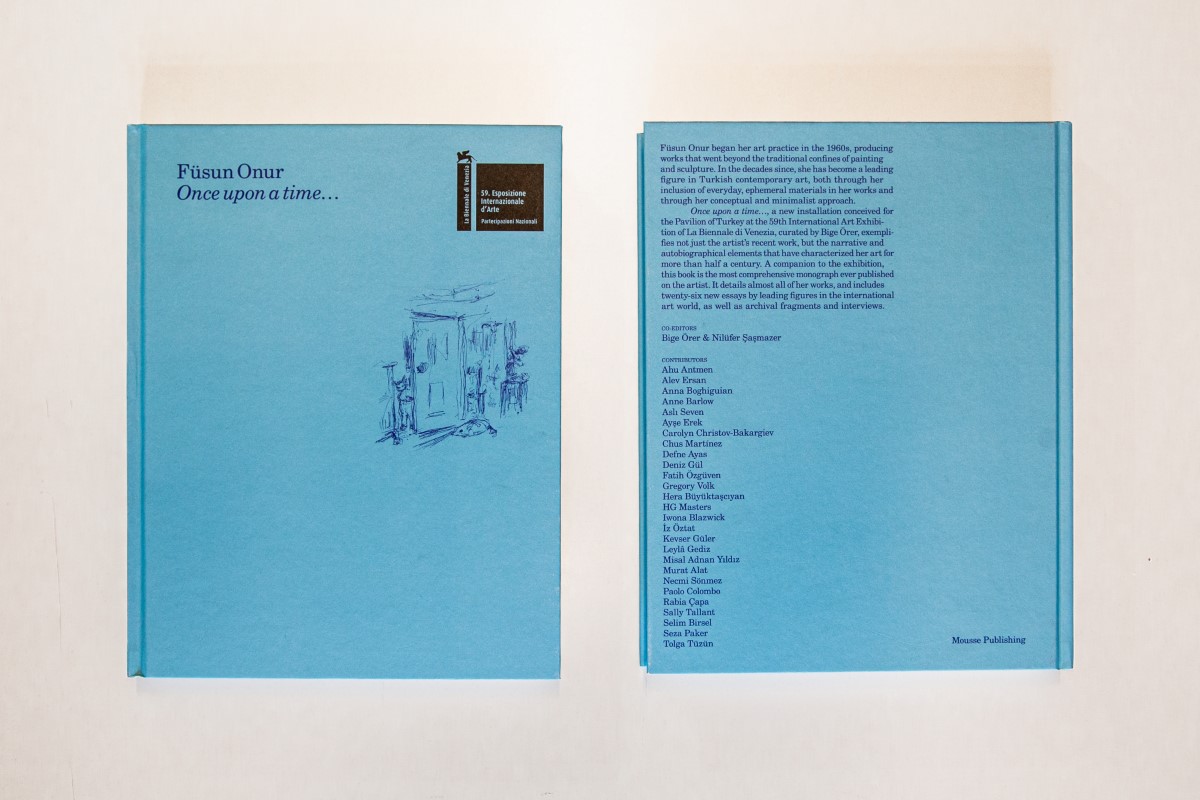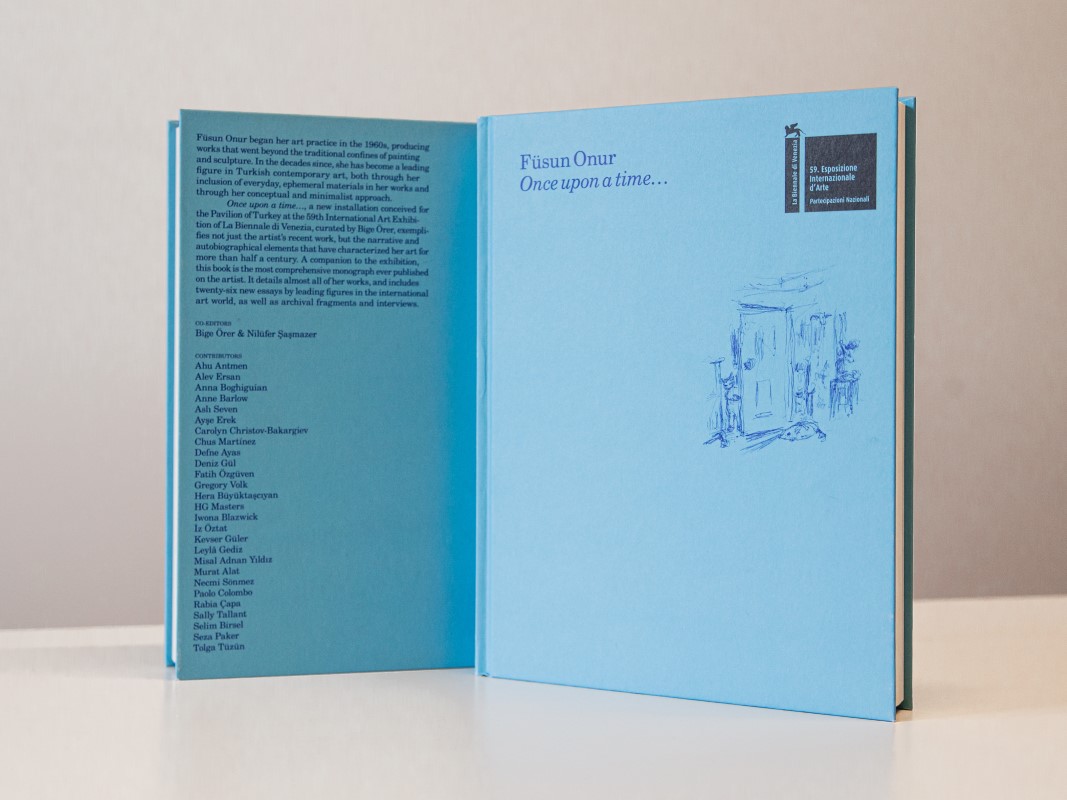The meaning of life also gives meaning to the world
it is only by giving meaning to the world
that life can have meaning
because the world and life are identical in their meaning:
your world is your life;
your meaningful life, your world.
—Oruç Aruoba, Long Since¹
Over more than half a century of artistic practice, Füsun Onur has become a leading name in Turkish contemporary and conceptual art, commanding a language beyond time. Since the 1970s, she has pushed the limits of sculpture and even painting by transforming how they are understood; at every opportunity she invites renewed reflection on and discussion of their fundamental elements. Through her reinterpretations of forms and concepts, she has ensured that terms like ‘installation’ and ‘assemblage’ have entered into the local lexicon, becoming in the process a preeminent figure in the art history of Turkey. One of the artist’s most significant interventions has been to offer new forms that remove sculpture from its static position and spatialise it in order to interactively incorporate the viewer.
Onur reconstructs and transforms her own world in every work. Rather than choosing the permanent materials of traditional sculptural works, she prefers to use provisional readymade objects that come from everyday life and are easy to procure. In some of her pieces she leaves these objects as they are, building relationships among them; in others she will intervene by altering them. For Onur, their forms are as important as their meanings. Similarly, the geometry of the spaces and objects is as important as their spirit. By staging relationships between different objects, and by creating contrasts and repetitions among them, she calls attention to their mathematical, poetic and musical rhythms. An indispensable feature in her works is the way in which they conjure silent rhythms and melodies, equating to musical notes.
Amongst the first generation to test, through her own subjectivity, the limits of the modern, Onur was part of a group of artists considered to be leaders in conceptual art in the 1970s, including Altan Gürman, Sarkis, Nil Yalter, Cengiz Çekil, İsmail Saray and The Definition of Art Group (Sanat Tanımı Topluluğu, or STT). Though this era might not have provided an environment for radical art, each of these artists nonetheless produced works that interrogated what was present and that generated alternative languages, forms and discourses. Onur’s works in the 1970s called into question the Minimalist art that came to prominence across the world at that time by combining abstractionism with narrative form.
Onur’s early works, made while still at primary school, were small clay objects based on scenes from films and concerts. She experimented with baking these objects, and remembers crying when some of them burst in the oven. She painted the intact ones to add to her collection. These pieces, which became a universe of miniatures, exhibit parallels with the fundamental elements of the installation she has produced for the Venice Biennale. Similar in size to trinkets made of porcelain, glass and other materials that ornament the home, all of these objects are imbued with life by Onur. Some of them are still hidden in a cabinet in the home in Kuzguncuk where she lived as a child and which she uses as her studio and home.
Along with her father, whom she lost at a young age, her mother was supportive of her desire to make art. When friends expressed their admiration for Onur’s figurines, her mother encouraged her to make new versions to give to them as gifts, and Onur did so to please her. But when she examined the copies, she saw a significant difference from her first figurines: the copies were lacking in spirit and emotion, she found, and she understood then that she would never make art to order or for money.
Onur’s sister İlhan, has been her constant companion since their childhood, and occupies a place all her own. She has searched for materials with Füsun, shared her ideas with her during production, helped to create some pieces, offered guidance in spaces during exhibitions, photographed works, produced an archive, and saved works from being tossed into the sea or thrown in the trash. In addition to her endless love for Füsun, the respect, care and dedication she feels for her sister’s work has allowed them both to lovingly embrace the world they have built together over the years. Ponpon, Tekir, Zorba and Lolita, their cats and dear companions who have joined them on this journey, frequently appear in Onur’s creations. Zorba, who forced himself on them by lurking for days outside their window before ensconcing himself in the house, has become one of the main characters in the work she produced for Venice. Onur’s relationship with creatures has shaped the animistic nature of her art, with cats, birds, elephants, and butterflies appearing in works such as From Outside In From Inside Out (1976), Stories for Grown-Ups (1977), Bird (1984), Impromptu (2003), Elegy for Tekir (2009–12), Dance of the Crows (2012), and Miracle (2013).
At the 59th Venice Biennale, Onur exhibits a new installation titled Once upon a time…, in which she has created different characters and scenes by bending and shaping metal wire. Once upon a time… is the story of an artist who gives meaning to the world. It is as much a portrait of a time filled with anxiety, fear, and ambivalence as it is of the feelings of solidarity, love and the joy of life that Onur has harboured over the course of her career.
The tale unravels over clouds spread throughout the space. Each scene can be interpreted on its own, but when they come together, they form a narrative on which Onur has worked for the past two years, never leaving the house due to the pandemic. The main characters of this fable, which looks back on the present from several centuries in the future, are mice and cats. When the mice learn about the pandemic from newspapers delivered by children outside of a school, they discuss what they can do to overcome the plague, which threatens the future of the world. They decide to join forces with cats in a common struggle against the manmade disaster. This solidarity between animals will protect the world from the disastrous human-driven approach that the pandemic makes visible. When the cats and mice begin working together, one mouse embarks on a journey to Venice, his curiosity piqued by the praise his artist friends in Istanbul have given to the city. The home of the friend receiving him there is in the exhibition space, and the following morning, they go exploring the city together. Encountering a festival in Venice, the mouse gets carried away by the magic of silent music and falls in love there. As the musicians perform their lively concert, the audience joins in by dancing around them. The transformative and dizzying power of the mouse’s love – love not just for another mouse, but for art, life, and the city in which he lives – sets the course of the story.
For each scene, Onur gives straightforward notes that concisely narrate the story with poetic language. Narrative does not supersede the world experienced in the exhibition space; it merely accompanies the viewer, offering keys to enter into the fable. The ending is left to the viewer; it invites many possibilities and encourages us to imagine different narratives, adding new meanings to the exhibition by viewing it through our own relationship to the world, to art, and to Venice.
‘Wherever I go, I take Istanbul with me,’ Onur has said, and in this work she imagines the first part of the story in Istanbul where she was born and raised, an Istanbul present in many of her works. She allows unexpected encounters and coincidences to shape her work; for instance, when she turns on the radio in the evening and hears the lyrics ‘If the heart doesn’t love Istanbul, what does it know of love, what does it know of love?’ from Münir Nurettin Selçuk’s song We Come to Kalamış for a Little Peace of Mind, she brings those lyrics silently into her work as a reflection of her relationship with the world. The love she has for the world and for the city in which she lives reveals its presence in the character who finds love in Venice after the most difficult of times. Once again, Onur points us to the strength of art to give hope, to open up another perspective on the world, to access our emotions and instincts.
One of the signature features of Onur’s artistic practice is her choice of materials. Working with those that best suit what she wants to express, she incorporates everyday
things such as paper, cardboard, rope, cloth, sponge, plastic, beads and lace into her work. By selecting fragile, rippable, destructible materials, she embraces the ephemerality of art. She devised her story by drawing designs in the margins of newspapers and other papers that have passed through her hands. She then transformed them into three-dimensional forms. With the easily procurable thin metal wires she has bent and shaped by hand in this work, she was able to give the characters many different movements and feelings. The delicateness and permeability of the wires converges with the fragility of our own bodies. The wires vary in thickness and colour, and have been embellished with ping-pong balls and coloured crepe paper. Ordinary objects like pillows, blankets, chairs, books, rugs and curtains, musical instruments, and the vehicles like boats and cars that accompany the characters on their journey, are amongst the many elements that feature in this miniature world.
Space itself is a crucial aspect of this work. As the basic elements of the narrative, the small-scale objects stand in contrast to the emptiness of the exhibition room. Onur has mostly preferred to remain close to the ground when installing her works, without taking a vertical relationship to the gallery, without trying to occupy it, but rather, punctuating it with empty spaces and stopping points. In this exhibition, the sequential scenes of the story have been placed on clouds at different heights, strengthening the works’ relationship with the floor and allowing the viewer to enter into a performative relationship with them. By removing sculpture from its pedestal, Onur opens up an arena of freedom for her objects, introducing lightness and transparency. Sometimes the clouds rise up in the space; sometimes they invite the viewer to kneel or sit down in order to look closely. The rhythm they create ignites a synesthetic experience in which spatial compositions and colour turn into music.
Onur has strived for the development of conceptual art in Turkey, and has served as a highly influential reference point for subsequent generations. In addition to her solo exhibitions in Turkey, and five editions of the Istanbul Biennale, she has exhibited works in international group exhibitions. But despite this international presence, she has been underrecognised in the global art world. Never separating her private life from her practice and using traditional and domestic forms such as weaving and textiles, she can be considered in the context of feminist art history. It is of great significance that her current work is exhibited in the Pavilion of Turkey at the 59th Venice Biennale, and that her creative practice, along with her poetic and candid language, will be followed, reread, reinterpreted and circulated in the international art world. Casting aside all expectations of large scale exhibitions such as the Venice Biennale, however, one of the most important meeting points for the art world, she sets her own rules by taking a stance that avoids monumentalism.
In a critical time like ours, in which art practices and forms of working are being interrogated and undergoing radical transformation, questions regarding what art is, and why making art matters are more important than ever. The fabulous world that Onur creates with her boundless imagination and creativity, nurtured by philosophy, literature and music, stages a poetic relationship between life and art that characterises not just her works, but her lifestyle and creative preferences. Once upon a time… is a masterwork that has meaningful things to say for the age in which we live, opening the door for careful eyes to see into a new and exciting world, producing new languages, and learning from nonhumans, loving and living together.
Bige Örer
1. Oruç Aruoba, Olmayalı [Long Since],
(Istanbul: Metis Publications, 2003), 75.
BIOGRAPHIES
BİGE ÖRER
Bige Örer is the Director of Istanbul Biennial and İKSV Contemporary Art Projects. Örer’s breadth of activity embraces both the artistic and the academic fields. Her curatorial projects include the exhibitions Flaneuses, Istanbul (2017), Linear Transcendency, Amman (2016), and Agoraphobia, Berlin (2013, co-curated with Fulya Erdemci). She has participated in curatorial residency programmes at Whitechapel Gallery (2016) and Palais de Tokyo (2018). Her contributions to various publications include the research she co-conducted on the financing of international contemporary art biennials. She co-wrote the children’s book A Colourful Journey in a Time Machine: Istanbul Biennials for Children with Süreyyya Evren, Haz / Cızzz, with İz Öztat. Örer has written extensively about biennials and taught courses on the subject. She is one of the founding members of the Curatorial Studies programme at Kadir Has University. She has been a consultant and jury member for numerous arts institutions and has been the vice-president of the International Biennial Association since its foundation in March 2013. She is also on the editorial board of the association that conceptualised and edited the inaugural issue of its journal, Pass.
FÜSUN ONUR
One of Turkey's pioneering contemporary artists, Füsun Onur creates works exploring the potentials of space, time, rhythm and form that are inherent in simple, everyday materials charged with narrative and oblique autobiographical references. In her prolific career that spans over half a century, Onur has defied boundaries between painting and sculpture, becoming a pivotal figure in introducing avant-garde art to the canon in Turkish contemporary art in the early 1970s. She has participated in solo and group exhibitions at the Yapı Kredi Culture and Arts (2007), Augarten Contemporary, Vienna (2010), Istanbul Modern (2011, 2014), Maçka Art Gallery, Istanbul (1987, 1991, 1995, 2001, 2012, 2016), and Arter, Istanbul (2014). Her works have been featured at the Staatliche Kunsthalle Baden-Baden (2001), ZKM, Karlsruhe (2004) and Van Abbemuseum, Eindhoven (2005), as well as in the Istanbul Biennials (1987, 1995, 1999, 2011, 2015), the 2nd Moscow Biennale (2007), and dOCUMENTA(13), Kassel (2012).
A graduate of Üsküdar American Academy for Girls, Onur studied sculpture at the Academy of Fine Arts in Istanbul at Ali Hadi Bara Atelier and moved on to her post-graduate studies in sculpture at the Maryland Institute College of Art with a Fulbright scholarship between 1964 and 1966. The artist’s first solo exhibition was presented by Taksim Art Gallery in 1970, which was followed by her participation in many other exhibitions such as the 7th Biennial of Young Artists in Paris (1971) and Open Air Exhibitions organised by the Istanbul Archaeology Museums (1974, 1975, 1976 and 1977) and the 13th Middelheim Biennial in Antwerpen, Belgium (1975). Onur lives and works in Istanbul.
1937 Born in Istanbul
1949–1956 Üsküdar American Academy for Girls
1956–1960 Istanbul State Academy of Fine Arts, Sculpture Department
1962 Fulbright Scholarship, American University, Washington D.C., USA
1964–1966 Maryland Institute College of Arts, USA
1972 Milliyet Art Magazine, Sculpture Artist of the Year Award
1974 35th State Painting and Sculpture Exhibition, Achievement Award
1974 Hadi Bara Competition, Second Prize
1975 Archaeology Museums Open Air Exhibition, Silver Medal
1976 Archaeology Museums Open Air Exhibition, Silver Medal
1981 New Trends Exhibition, Istanbul Art Festival, Silver Medal
2004 International Association of Art Critics (AICA) Turkey 50th Anniversary, Artist of Honour Award
SOLO SHOWS
1970 Taksim Art Gallery, Istanbul
1972 Drawing in Space, Taksim Art Gallery, Istanbul
1974 American Cultural Centre, Istanbul
1975 Taksim Art Gallery, Istanbul
1978 From Outside In From Inside Out, Taksim Art Gallery, Istanbul
1980 Associations from a Shiny Circle on the Floor, Taksim Art Gallery, Istanbul
1982 Counterpoint with Flower, Taksim Art Gallery, Istanbul
1985 Dream of Old Furniture, Taksim Art Gallery, Istanbul
1987 Sign of Sign, Maçka Art Gallery, Istanbul
1990 Icons of Time, Garanti Art Gallery, Istanbul
1991 Gallery Lights, Maçka Art Gallery, Istanbul
1995 Cadence, Maçka Art Gallery, Istanbul
2000 Prelude, Maçka Art Gallery, Istanbul
2007 Erratum Musicale, Yapı Kredi Kazım Taşkent Gallery, Istanbul
2012 Variations, Maçka Art Gallery, Istanbul
2012 Elegy for Tekir, Pilevneli Project, Istanbul
2014 Through the Looking Glass, Arter, Istanbul
2016 As You Know, Maçka Art Gallery, Istanbul
2019 Chamber Music, Galeri Nev Istanbul, Istanbul
2021 Opus II – Fantasia, Arter, Istanbul
2021 This story will continue, ChertLüdde Gallery, Berlin
GROUP SHOWS
1971 7th Biennial of Young Artists, Paris, FR
1973 50 Sculptures for Istanbul in the 50th Anniversary of the Republic, Fındıklı Park, Istanbul
1974 Nude, Taksim Art Gallery, Istanbul
1974 Istanbul Archaeology Museums Open Air Exhibitions
1974 35th State Painting and Sculpture Exhibition, Ankara
1975 13th Middelheim Biennial, Antwerpen, BE
1975 Istanbul Archaeology Museums Open Air Exhibitions
1976 Istanbul Archaeology Museums Open Air Exhibitions
1976 Tarabya Art Gallery, Istanbul
1977 Istanbul Archaeology Museums Open Air Exhibitions
1977 1st New Trends, Istanbul Art Festival
1978 Özar Art Gallery, Istanbul
1978 AKM (Atatürk Cultural Centre), Istanbul
1978 Turkish Association for the Conservation of Nature Exhibition, Istanbul
1979 Turkish Association for the Conservation of Nature Exhibition, Istanbul
1979 International Year of the Child Exhibition, Istanbul
1980 Turkish Association for the Conservation of Nature Exhibition, Istanbul
1980 Özar Art Gallery, Istanbul
1981 Realisation, Seramar Gallery, Istanbul
1981 3rd New Trends, Istanbul Art Festival, Istanbul State Academy of Fine Arts
1981 Pangaltı Fine Arts Gallery, Istanbul
1982 BBC 50th Year Exhibition, Bush House, London, UK
1983 Anatolian Civilizations, Council of Europe 18th European Art Exhibition, Istanbul Archaeology Museums
1983 Six Women Six Behaviours, Seramar Gallery, Istanbul
1983 4th New Trends, Istanbul Art Festival State Academy of Fine Arts
1983 Turkish Painting and Sculpture Art in the 100th Anniversary, Istanbul Painting and Sculpture Museum
1983 Galleries ‘83 – Contemporary Turkish Art Exhibition, 4th Istanbul Art Festival, AKM
1984 A Section of Avantgarde Turkish Art, AKM, Istanbul
1985 A Section of Avantgarde Turkish Art II, Yıldız Technical University, Istanbul
1985 A Section of Contemporary Women Artists, Istasyon Art House, Istanbul
1985 6th Contemporary Artists Istanbul Exhibition, Istanbul Painting and Sculpture Museum
1985 5th New Trends, Istanbul Art Festival
1986 Contemporary Turkish Plastic Arts Exhibition, Hacettepe Fine Arts Faculty, Ankara
1986 Contemporary Dimensions Painting and Sculpture Exhibition, Artnet Gallery, Istanbul
1986 1st International Asian-European Art Biennial, Ankara Türkocağı Painting and Sculpture Museum
1986 Another Art Collective Exhibition in Memory of Joseph Beuys, Izmir German Cultural Centre
1986 A Section of Avantgarde Turkish Art III, AKM, Istanbul
1987 6th New Trends, Mimar Sinan Fine Arts University, Istanbul
1987 Military Museum, 1st International Istanbul Contemporary Art Exhibition
1987 Joint Exhibit, Izmir Turkish American Association
1987 A Section of Avantgarde Turkish Art IV, AKM, Istanbul
1987 Inspirations from Creative Turkish Women, AKM, Istanbul
1988 Üsküdar American Academy for Girls alumni show, Soyak Art Gallery, Istanbul
1988 Joint Exhibit, Izmir Turkish American Association
1988 A Section of Avantgarde Turkish Art V, Hareket Köşkü, Istanbul
1989 10 Artists 10 Works: A, AKM, Istanbul
1989 Untitled, Derimod Art Centre, Istanbul
1990 References, Maçka Art Gallery, Istanbul
1990 Great Exhibition II, Istanbul Painting and Sculpture Museum and Ministry of Culture, AKM, Ankara
1990 8 Artists 8 Works: B, AKM, Istanbul
1991 Eurodialogue 13 Female Artists from Istanbul, Yıldız Palace
1992 Art-Texnh – Fourteen Turkish and Greek Artists, Istanbul Painting and Sculpture Museum and Dolmabahçe Palace
1992 9th International Prilep Biennial, MK
1992 10 Artists 10 Works: C, AKM, Istanbul
1993 10 Artists 10 Works: D, Koleksiyon Mobilya and Maçka Art Gallery, Istanbul
1993 Exhibition Dresses, Maçka Art Gallery, Istanbul
1993 Women in Anatolia Through the Ages: Women Artists from the Republic to the Present, Istanbul Archaeology Museums
1993 Istanbul, AKM, Istanbul
1994 7th New Trends, Mimar Sinan Fine Arts University, Istanbul
1994 İskele (Turkish Art Today), ifa-Galerie Berlin and ifa Galerie Stuttgart, DE
1994 Alumni exhibition, Maryland Institute College of Art, USA
1994 Artists from Turkey: Tomur Atagök & Füsun Onur, Art Gallery Skopje, Davut Pasha Hammam, Skopje, MK
1995 Traces, Yıldız Technical University, Yüksel Sabancı Art Centre, Istanbul
1995 Intolerance, Yıldız Palace Armoury Building, Istanbul
1995 Train Station, TCDD Art Gallery and train station venues, Ankara
1995 Orient/ation – The Vision of Art in a Paradoxical World, Hagia Irene, 4th Istanbul Biennial
1995 Suddenly, The Turks, Parvi Paris, FR
1995 Meeting, Derimod Art Centre, Istanbul
1995 1st Uludağ University International Sculptors Symposium, Bursa
1997 Under My Coat, Galerie Thaddaeus Ropac, Paris, FR
1998 Cartographers: geo-gnostic projection for the 21st century, Zagreb, HR; Warsaw, PL; Budapest, HU; Maribor, SI
1998 İskorpit: Contemporary Art from Istanbul, Haus der Kulturen der Welt, Berlin, DE
1998 Mediterranea – Contemporary Art of Mediterranean Countries, Le Botanique, Brussels, BE
1998 Kır4b1r: 41 Years 41 Artists 41 Works, Marmara University Fine Arts Faculty, Istanbul
1999 The Passion and The Wave, Hagia Irene, 6th Istanbul Biennial
2000 The Song of the Earth, Museum Fridericianum, Kassel, DE
2000 strange home, Historische Museum, Kestner Museum, DE
2000 Feature Presentation/Coming Attractions, Yapı Kredi Culture and Arts, Hacopulo Passage, Istanbul
2001 From Far Away So Close – Four Female Artists from Turkey, Kunsthalle Baden- Baden, DE
2001 Regrets, Reveries, Changing Skies, Karşı Sanat, Istanbul
2001 Modern Turk: Turkish Art in the Second Half of the 20th Century, Topkapi Museum Stables, Istanbul
2002 From Far Away So Close, Govett-Brewster Art Gallery, New Plymouth, NZ
2002 Between the Waterfronts (Contemporary Art from Istanbul and Rotterdam), Las Palmas, Rotterdam, NL
2003 Füsun Onur, Hale Tenger, Aydan Murtezaoğlu, Lunds Konsthall, SE
2003 Turkish Art Today: Where? Here?, Museum of Modern Art Saitama, JP
2003 Organized Conflict, Proje 4L, Istanbul
2004 Kunst Stoff, Galerie nachst St. Stephan, Vienna, AT
2004 Call me ISTANBUL Is My Name, ZKM, Karlsruhe, DE
2004 Shaman’s Diary, Proje 4L, Istanbul
2004 From Bosphorus to Moine: Aspects of contemporary art from Turkey in France, Art and History Museum of Cholet, FR
2005 EindhovenIstanbul – Contemporary Art Selection from Turkey, Van Abbemuseum, Eindhoven, NL
2006 Paper Works, Galerist, Istanbul
2006 Nested in Kuzguncuk – 45 Artist Portraits, Kuzguncuk, Istanbul
2007 Nested in Kuzguncuk, Kuzguncuk, Istanbul
2007 X times I, Stadtische Galerie Fruchthalle Rastatt, Rastatt, DE
2007 FOOTNOTES on Geopolitics, Market and Amnesia, State Schusev Museum of Architecture, 2nd Moscow Biennial, RU
2007 Modern and Beyond, santralistanbul, Istanbul
2007 Recalls-Reminders, Galerist, Istanbul
2008 Time to Love and Return Home, Şefik Bursalı Art Gallery, Bursa
2008 Women of Light, Galerie Davide Gallo, Berlin, DE
2008 Who Killed the Painting?, Neues Museum Nürnberg, DE
2009 Who Killed the Painting?, Neues Museum Weserburg, DE
2009 Continued Variations, Centre d’art contemporain d’Ivry, FR
2010 Silence / Storm, Port Izmir 2nd Contemporary Art Triennial
2010 Tanzimat, Augarten Contemporary, Vienna, AT
2010 Odd Time Beat, Rodeo Gallery, Istanbul
2010 Tactics of Invisibility, TBA Contemporary, Vienna, AT
2010 Tactics of Invisibility, Tanas, Berlin, DE
2011 Tactics of Invisibility, Arter, Istanbul
2011 Dream and Reality, Istanbul Modern, Istanbul
2011 Continued Variations, Akbank Sanat, Istanbul
2011 Untitled (Abstraction), 12th Istanbul Biennial, Warehouse no. 3 and 5
2012 dOCUMENTA (13), Neue Galerie, Kassel, DE
2012 all that shines ain’t no gold, Rodeo Gallery Istanbul
2013 Signs Taken in Wonder, MAK, Vienna, AT
2014 Plurivocality, Istanbul Modern, Istanbul
2014 Do it Moscow, Garage Centre for Contemporary Art, Moscow, RU
2015 SALT WATER: A Theory of Thought Forms, Istanbul Modern, 14th Istanbul Biennial
2017 Dark Deep Darkness and Splendor, Galerist, Istanbul
2017 Evolve, Gallery A, Port Izmir 4th Contemporary Art Triennial
2018 Border of Time, Neues Museum, Nürnberg, DE
2019 The I is Always In the Field of the Other: A Selection From the Agah Uğur Collection, Evliyagil Museum, Ankara
2019 Heartbreak, Ruya Maps, Venice, IT
2019 Light Like a Bird, Not Like a Feather, SIGNS, Istanbul
2020 For Eyes That Listen, Arter, Istanbul
2020 Fool’s Paradise, Galeri Nev Istanbul, Istanbul
2020 Constellation, Troya Museum, 7. Çanakkale Biennial
2021 Seventh Valley, Galeri Nev Istanbul, Istanbul
2021 THIS PLACE, Yapı Kredi Culture and Arts, Istanbul
2021 Arts of Islam. A Past for A Present, Roger- Quilliot Art Museum, Clermont-Ferrand, FR
2022 ThisPlay, Arter, Istanbul
EXHIBITION PLAN
Once upon a time, years ago, human beings thought they could govern everything in the world, and left no forest, no fauna, no clear water. They left all their waste in parks, seas, forests, consuming everything. Yet nature still had her rules…
1. Students leave their school.
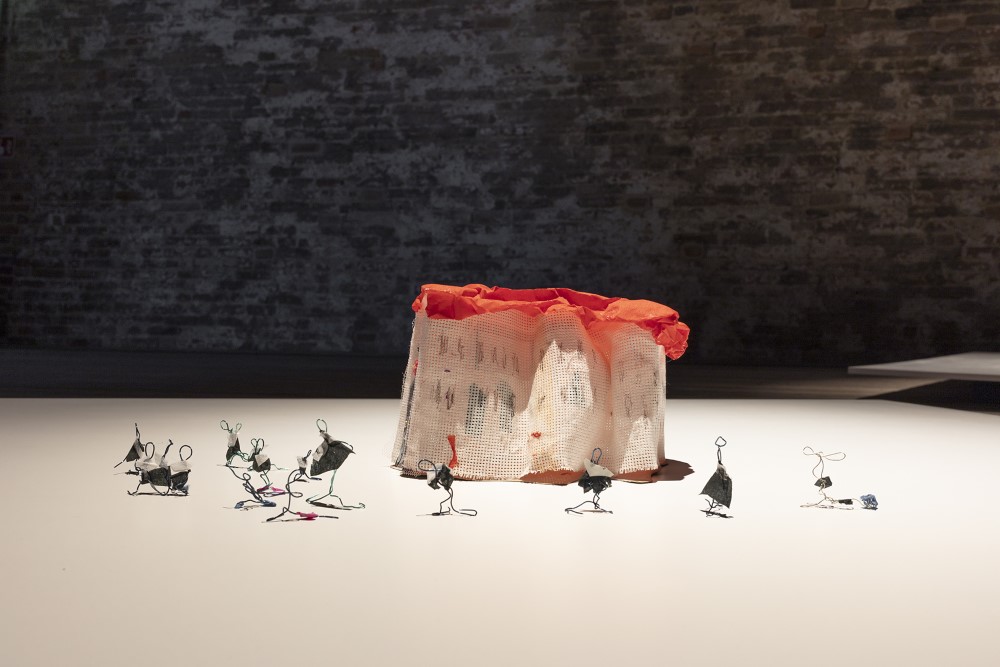
2. They spread news about the disasters affecting the future of the planet.
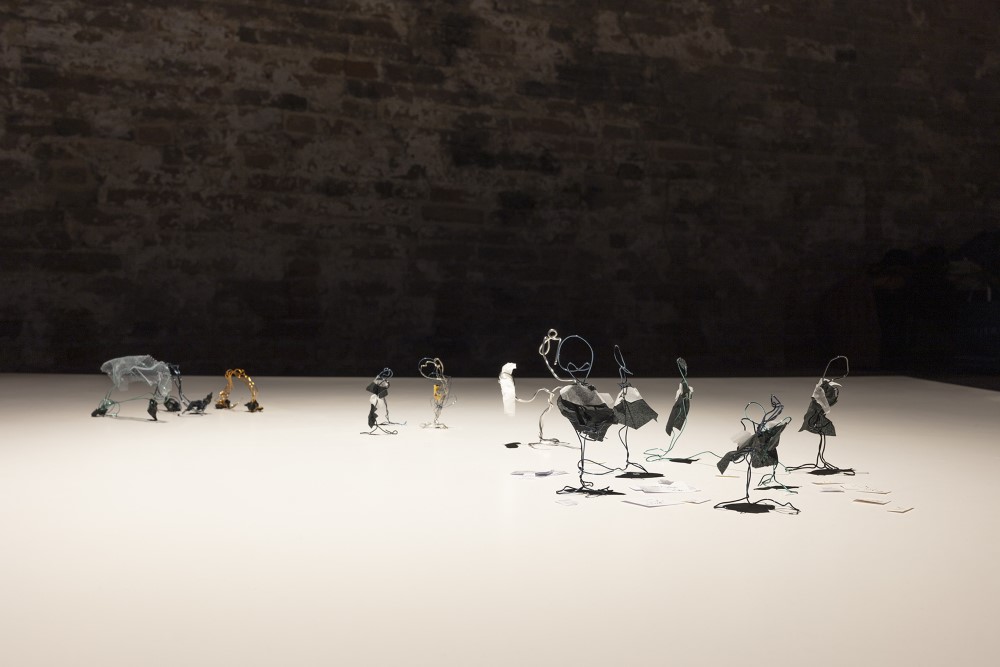
3. The mouse Cingöz cries for the planet in his dream. He sees deer and a large cat named Zorba.
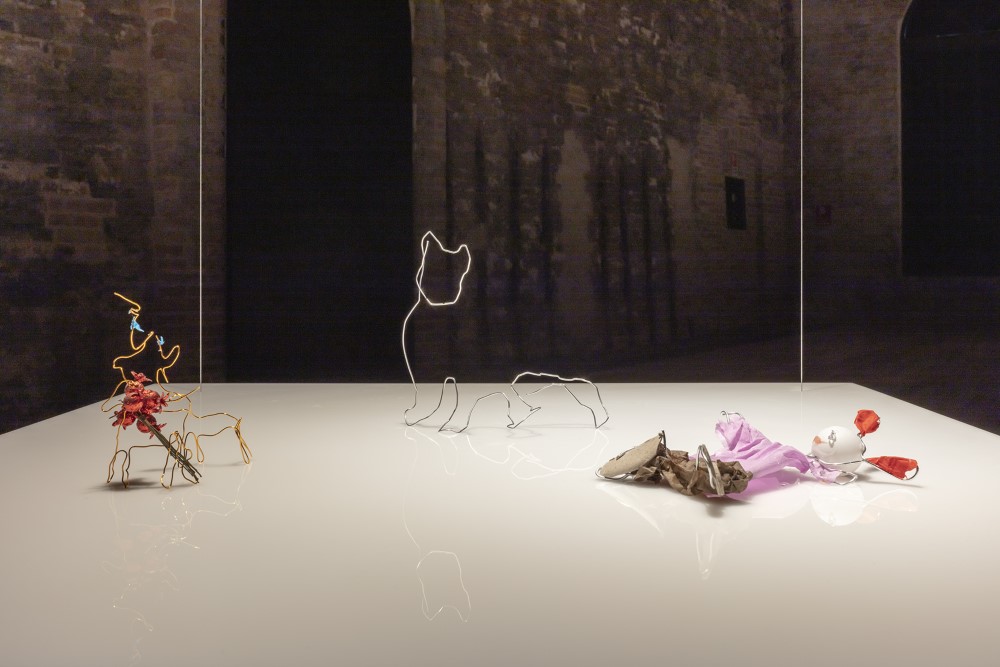
4. Cingöz meets Zorba and they decide that cats and mice should work together and create a team. They don’t have any leaders; they are all leaders.
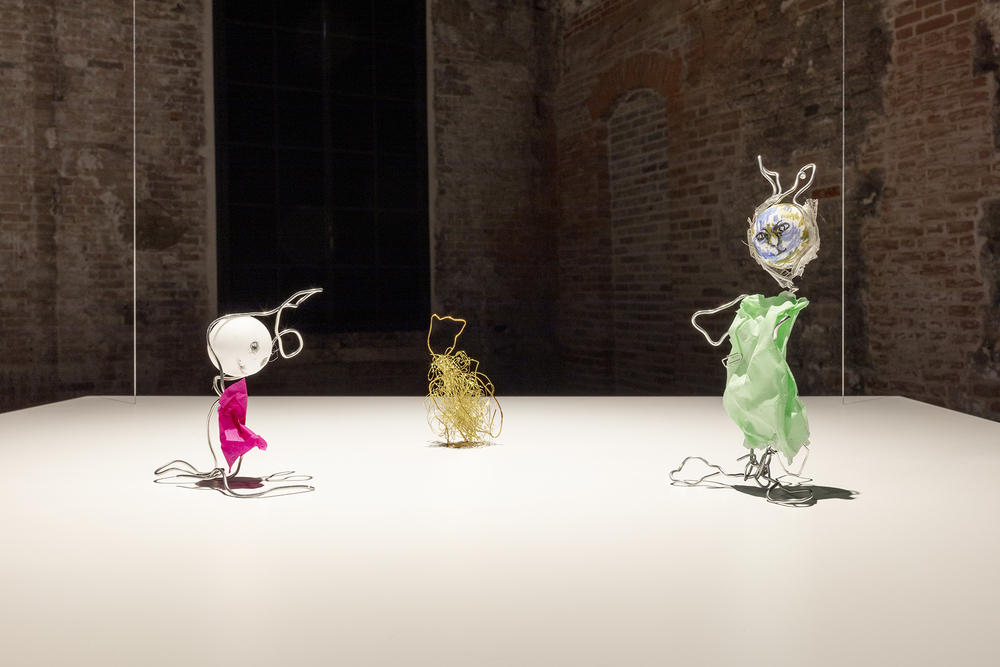
5. The mice come together and debate.
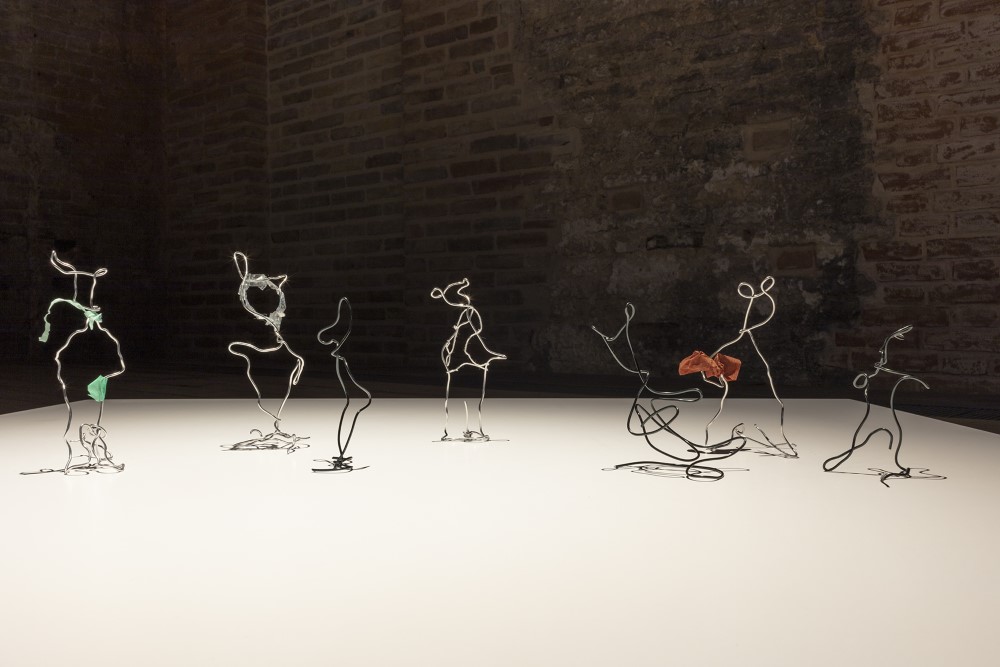
6. The cats come together and discuss.
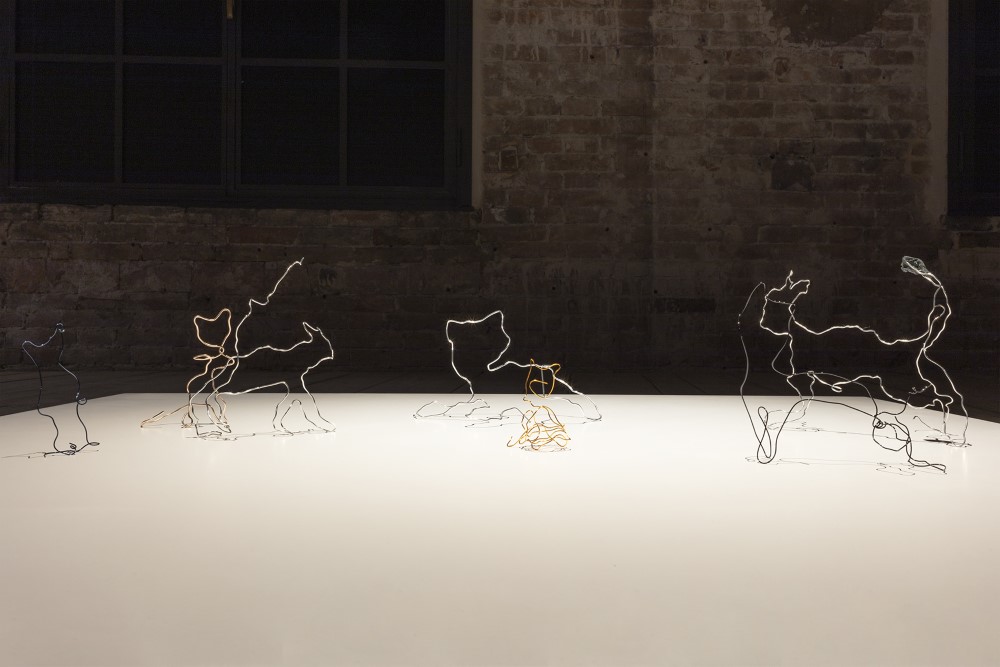
7. The cats and mice decide to work together, as the only way to save the world.
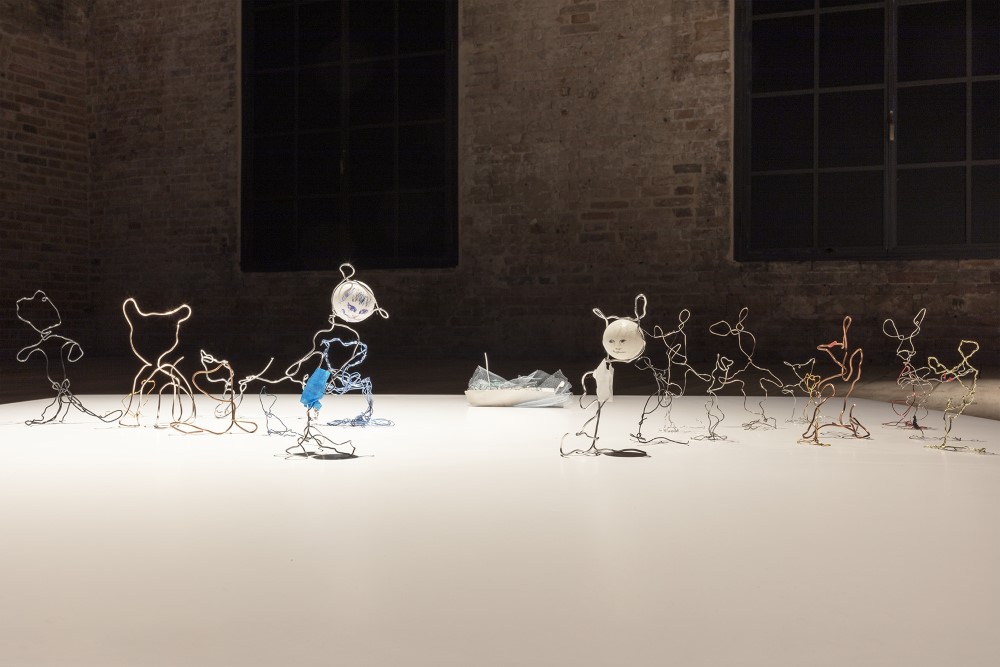
8. Happy Cingöz becomes gloomy and when he sees a ship bound for Venice, he decides to board it, since he has heard about this city from his artist friends.
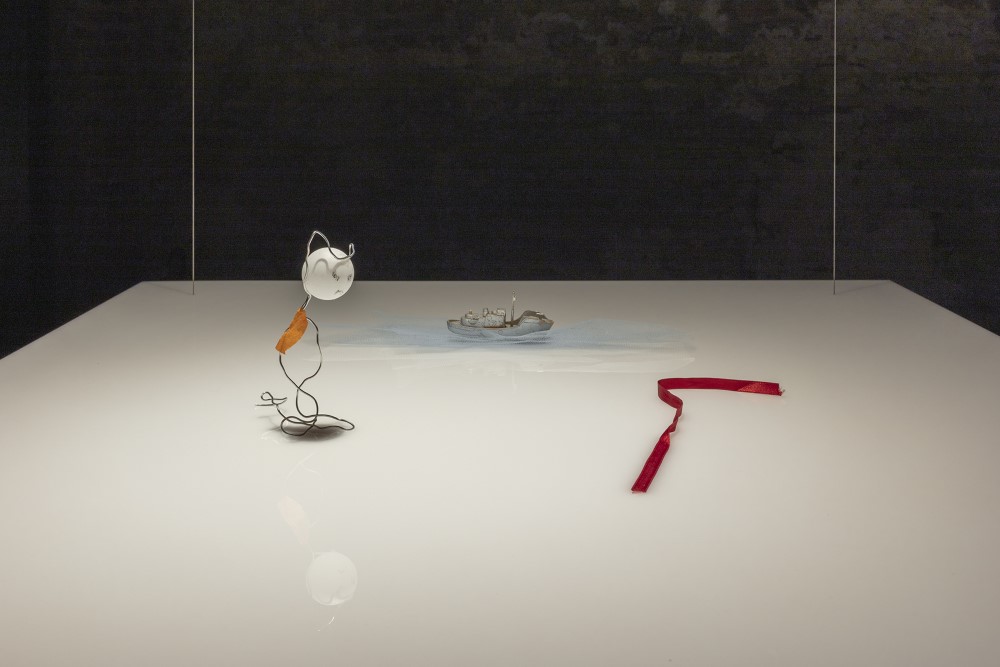
9. He travels from Istanbul to Venice.
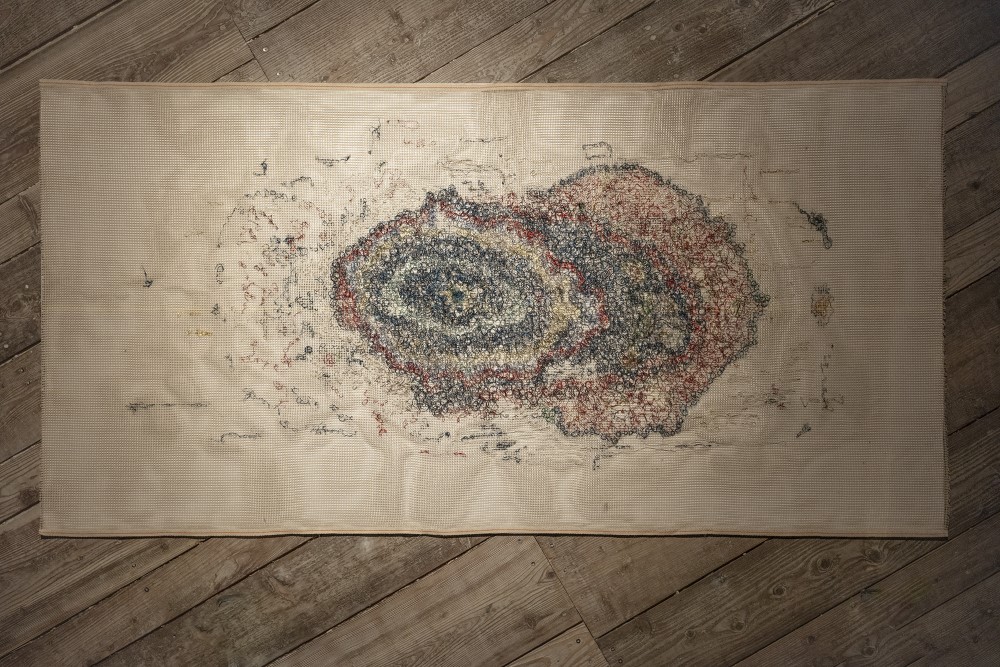
10. He arrives at the Arsenale, Pavilion of Turkey, where his friend has made a cosy nest with his children.
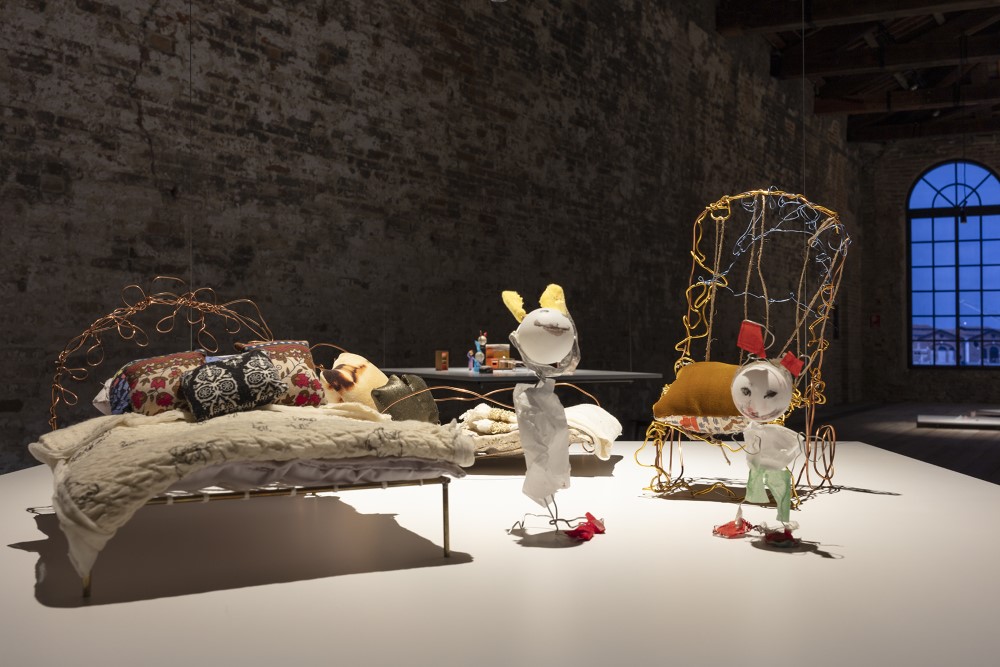
11. On his first night, he has a nightmare that COVID is there in the room. He finds himself on the floor, close to an angel.
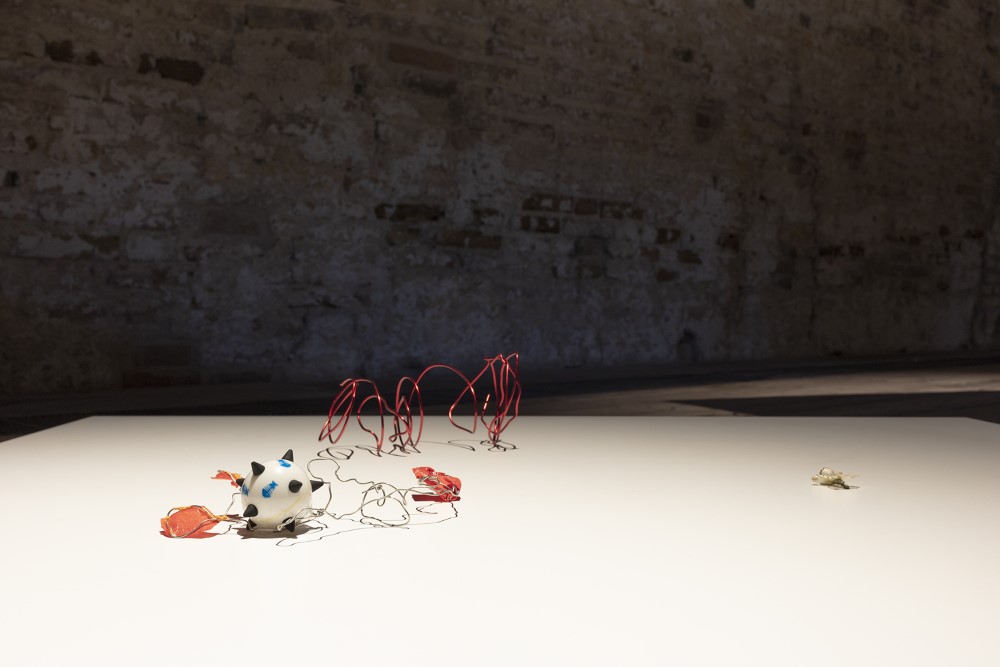
12. When he wakes up, he sees some friends looking at the objects in the house with curiosity. His room is cute and [strange/amusing?]. He enjoys being there.
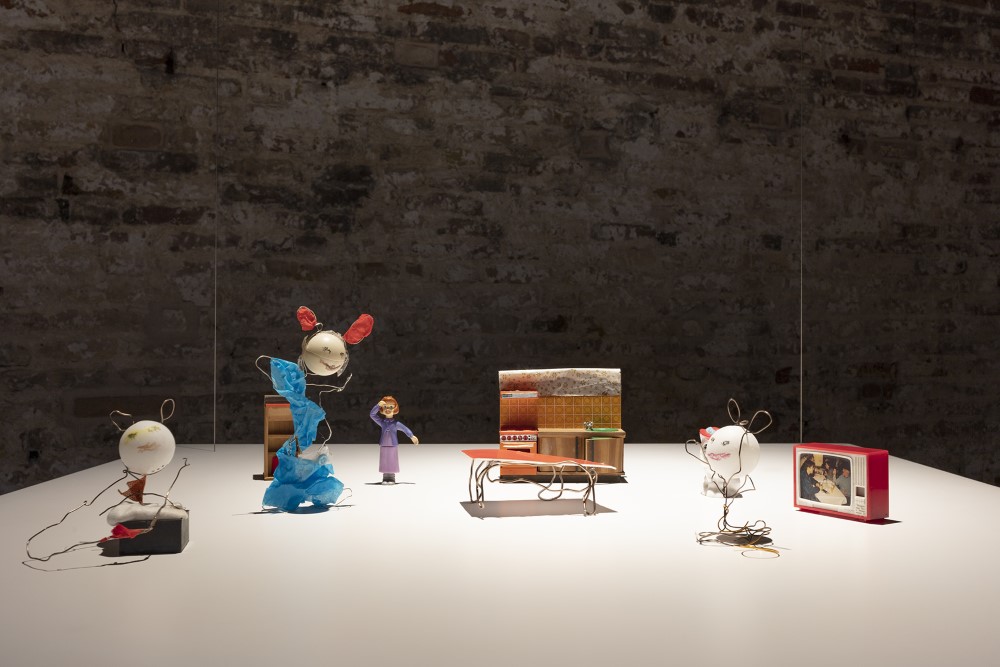
13. He is welcomed with flowers by his other friends in Venice.
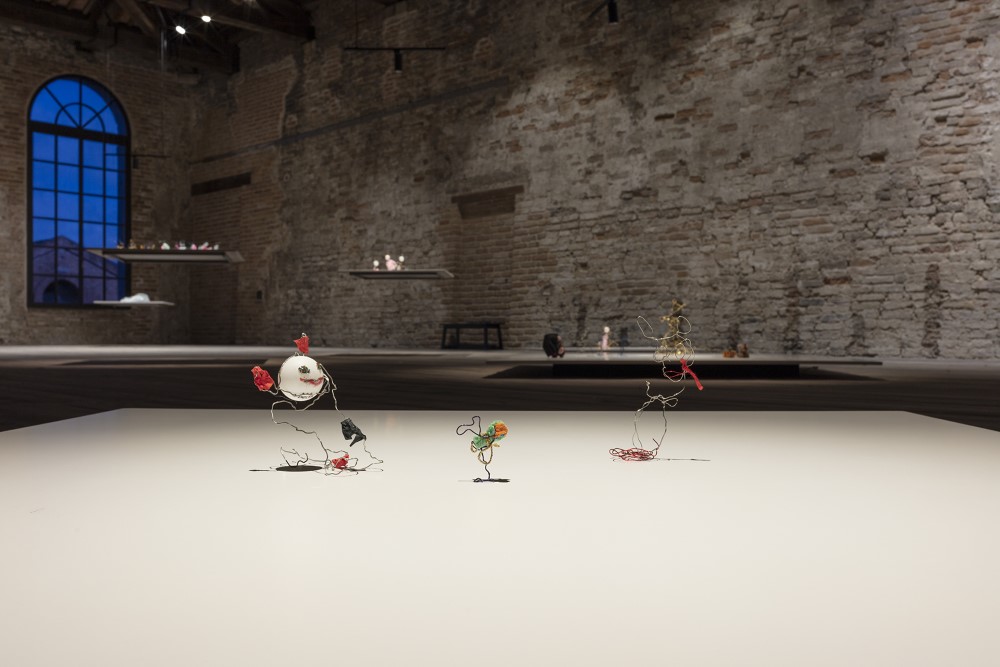
14. Among these friends there is a girl. Cingöz falls in love with her.
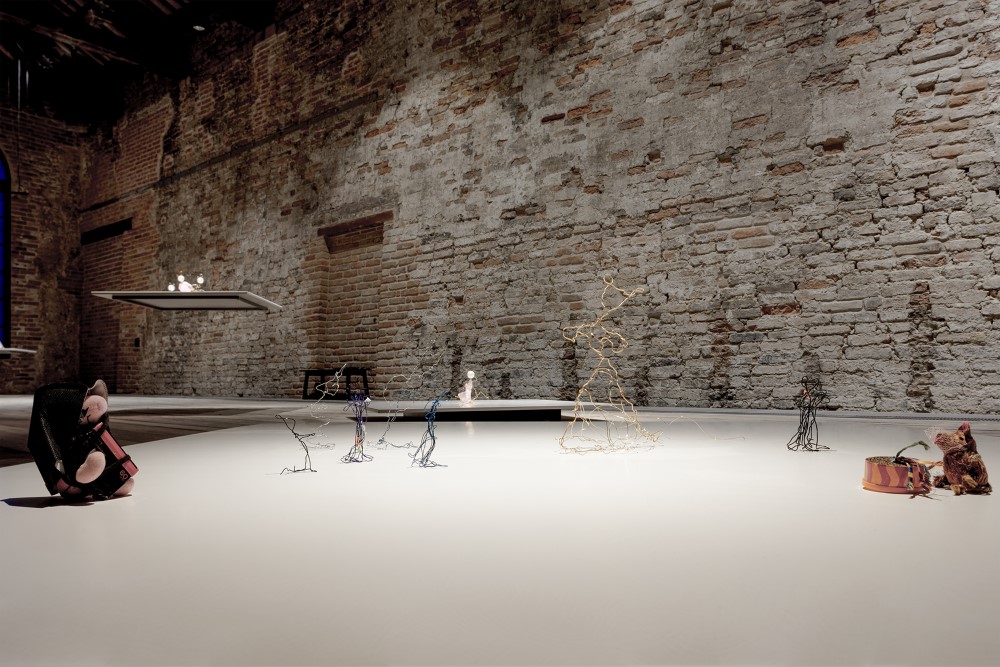
15. His friends organise a party for him.
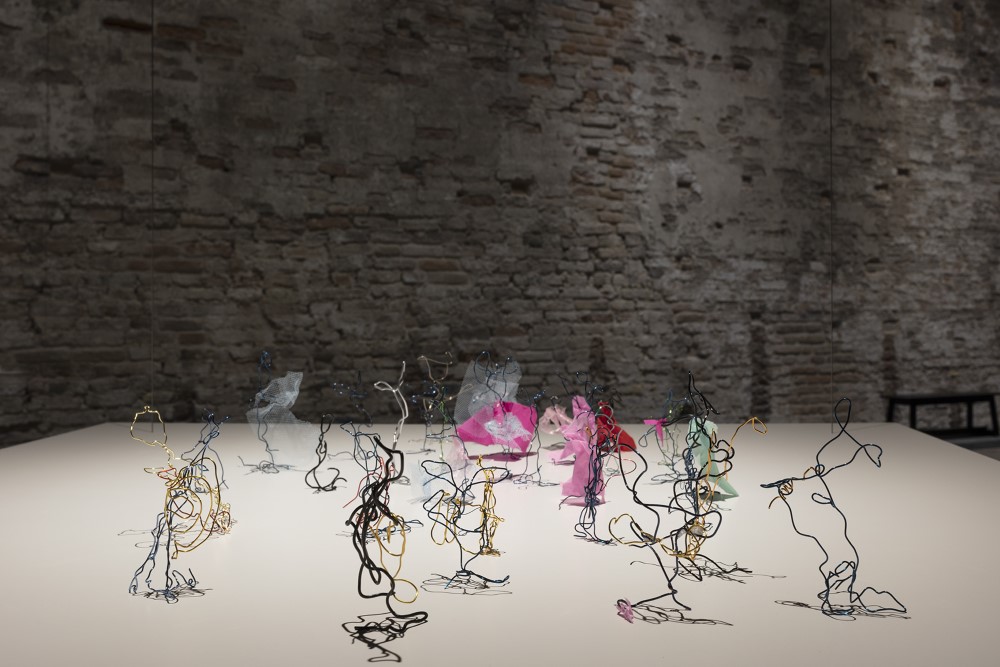
16. She dances in her pink dress.
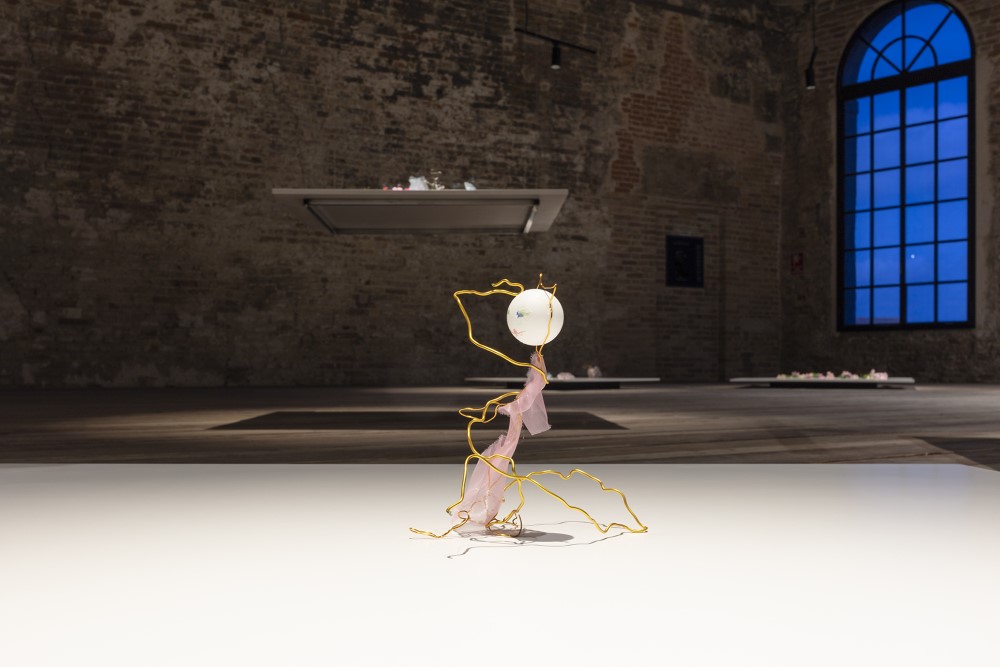
17. They enjoy being together and Zorba witnesses their happiness.
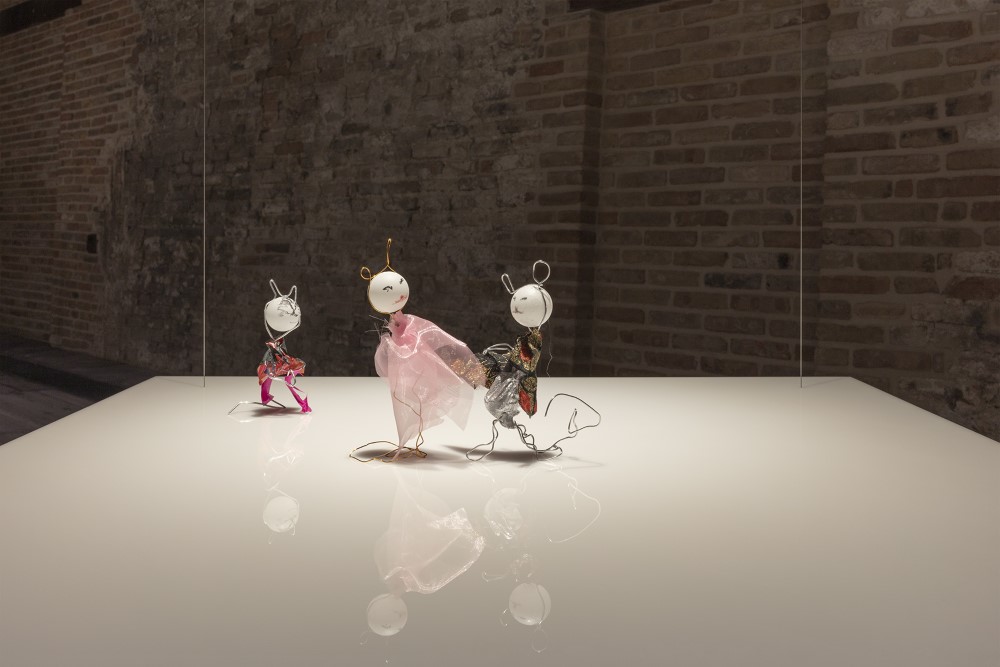
18. They dance and dance.
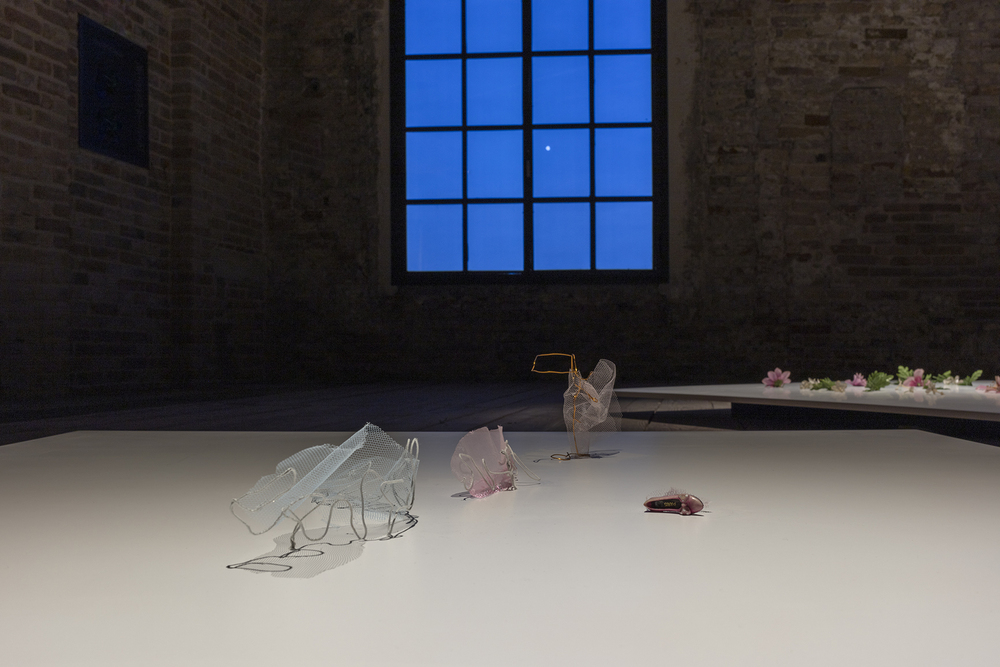
19. They walk on the grass.
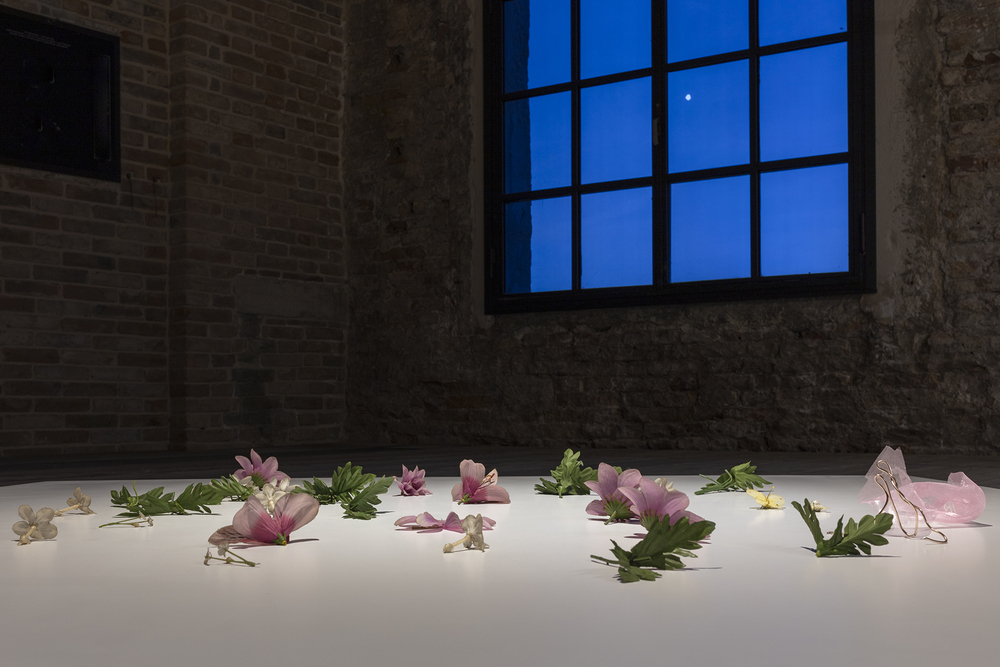
20. They sit down by the seashore.
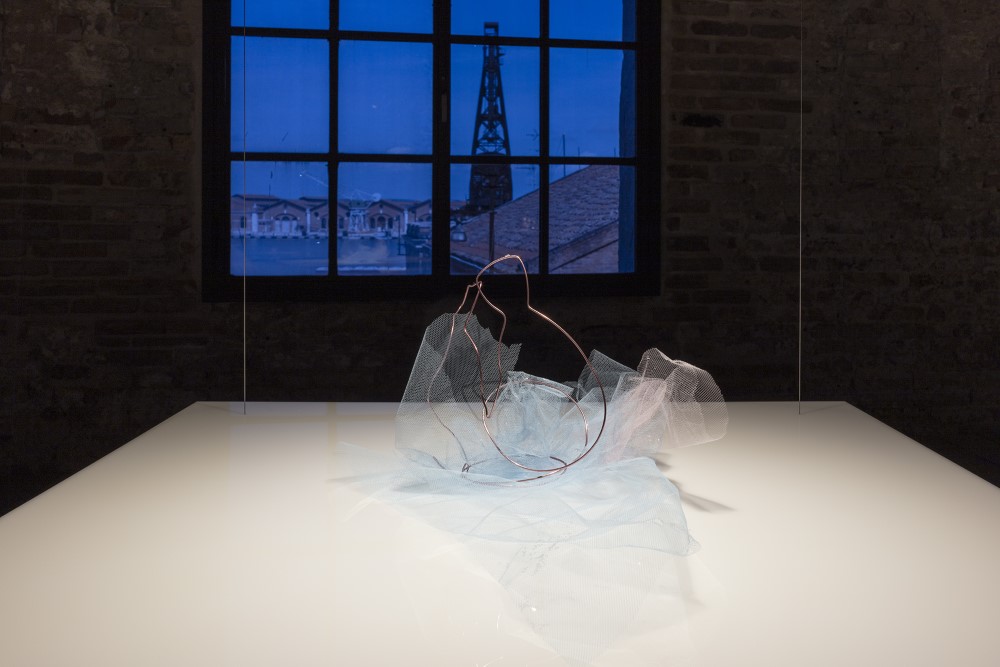
21. A decorated gondola is waiting there for them, but they are not there. The gondola is still waiting…
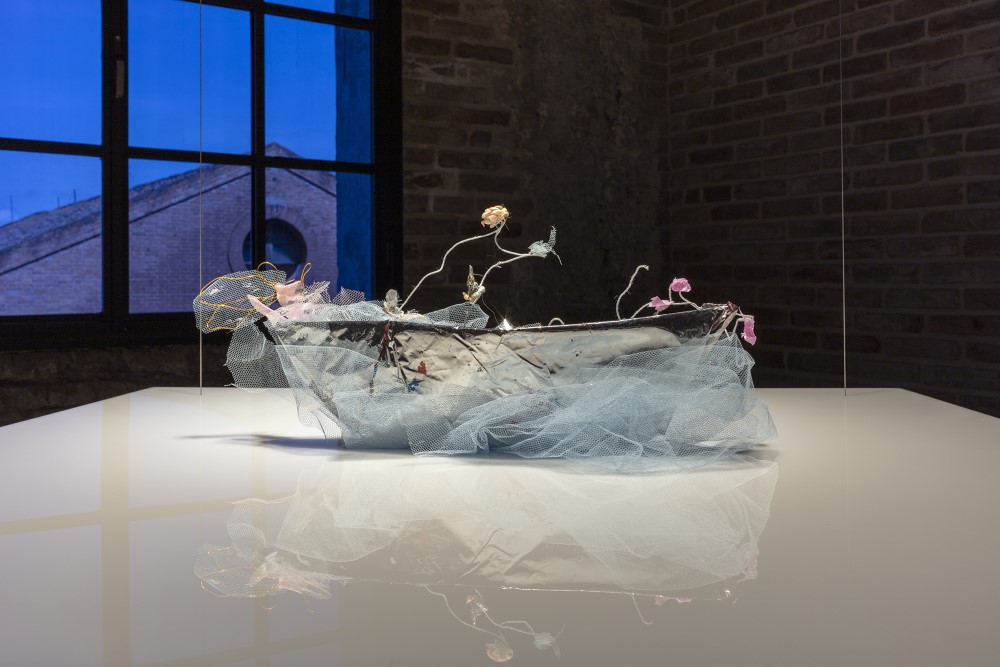
CHRONOLOGY
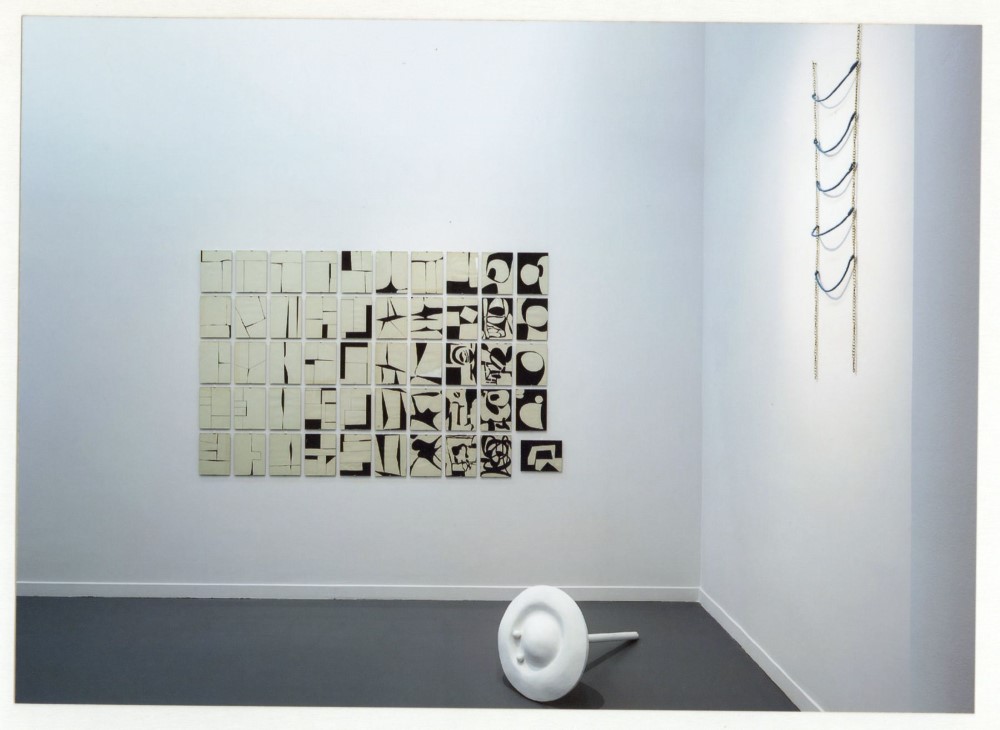
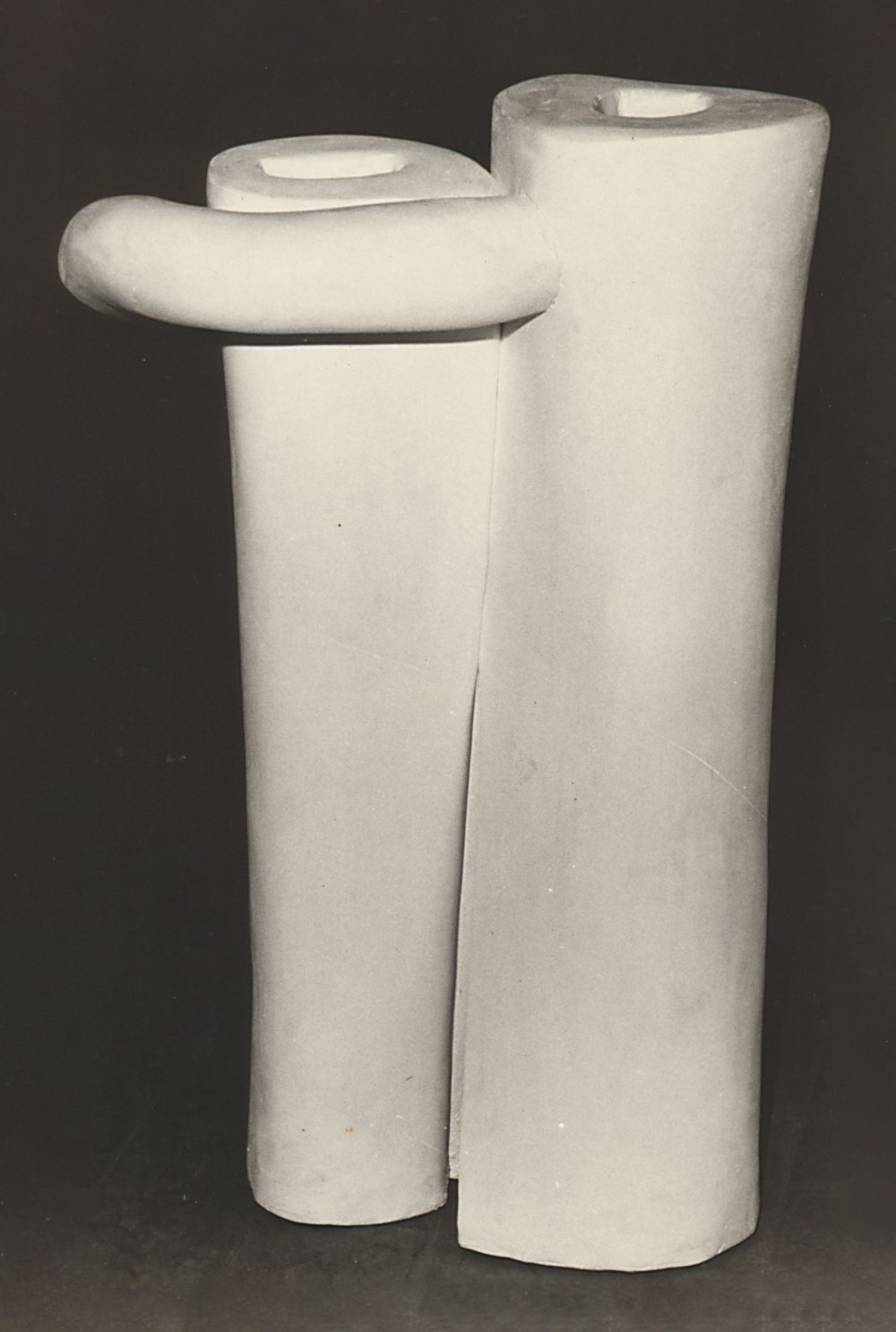
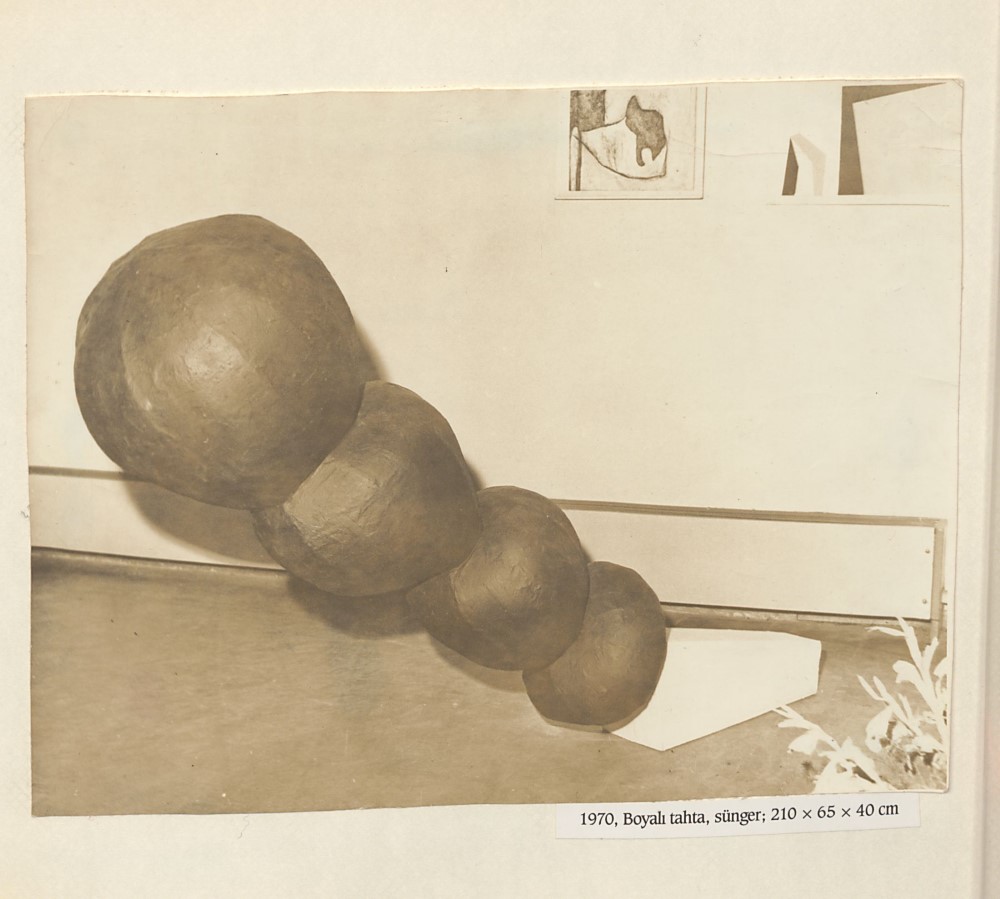
.jpg)
.jpg)
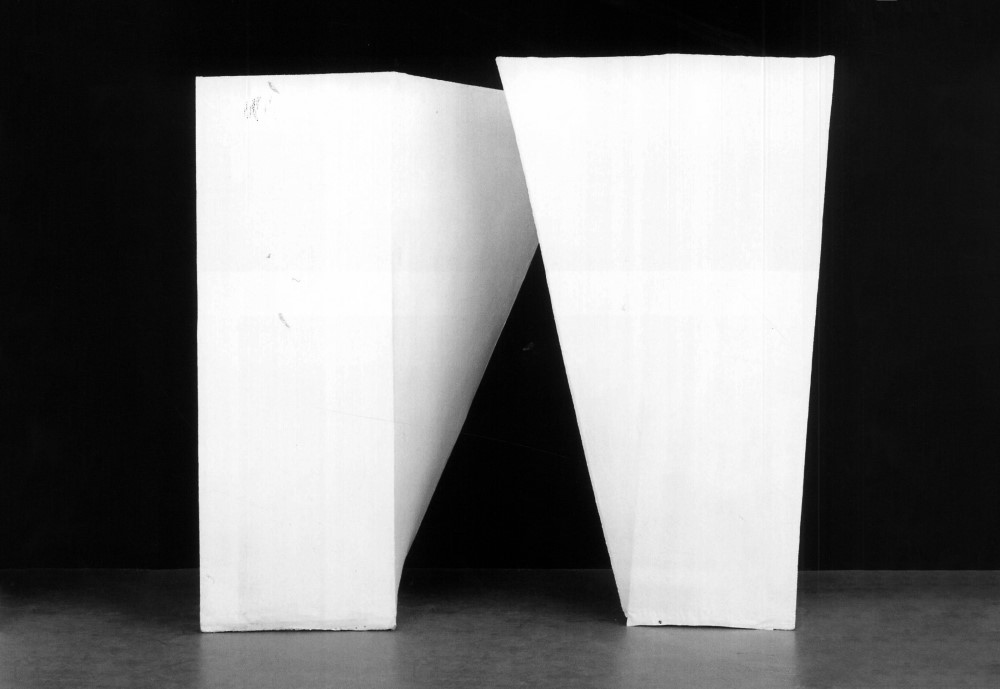
.jpg)
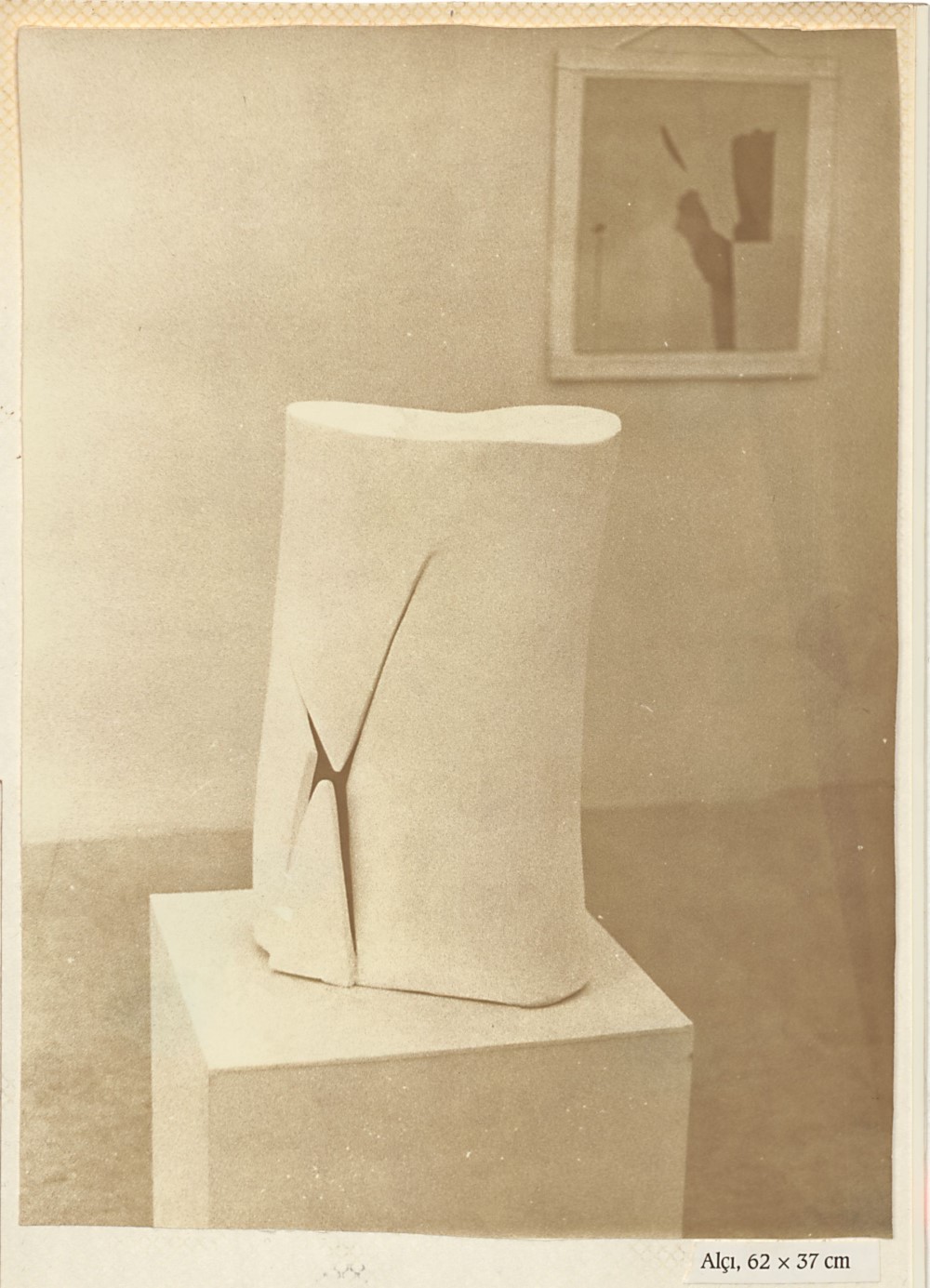

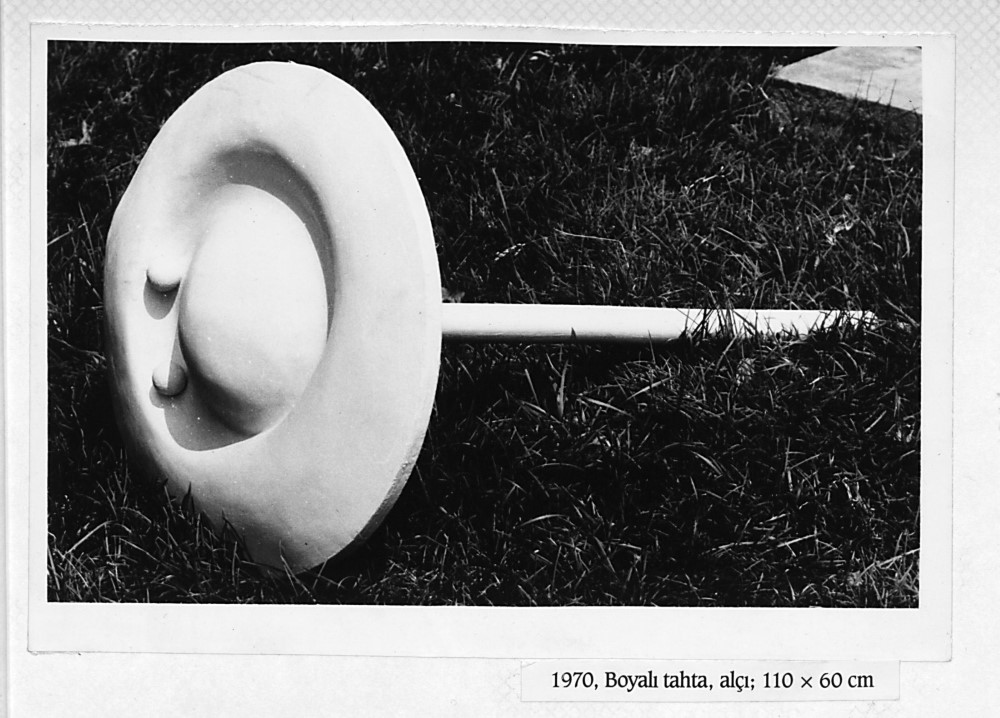
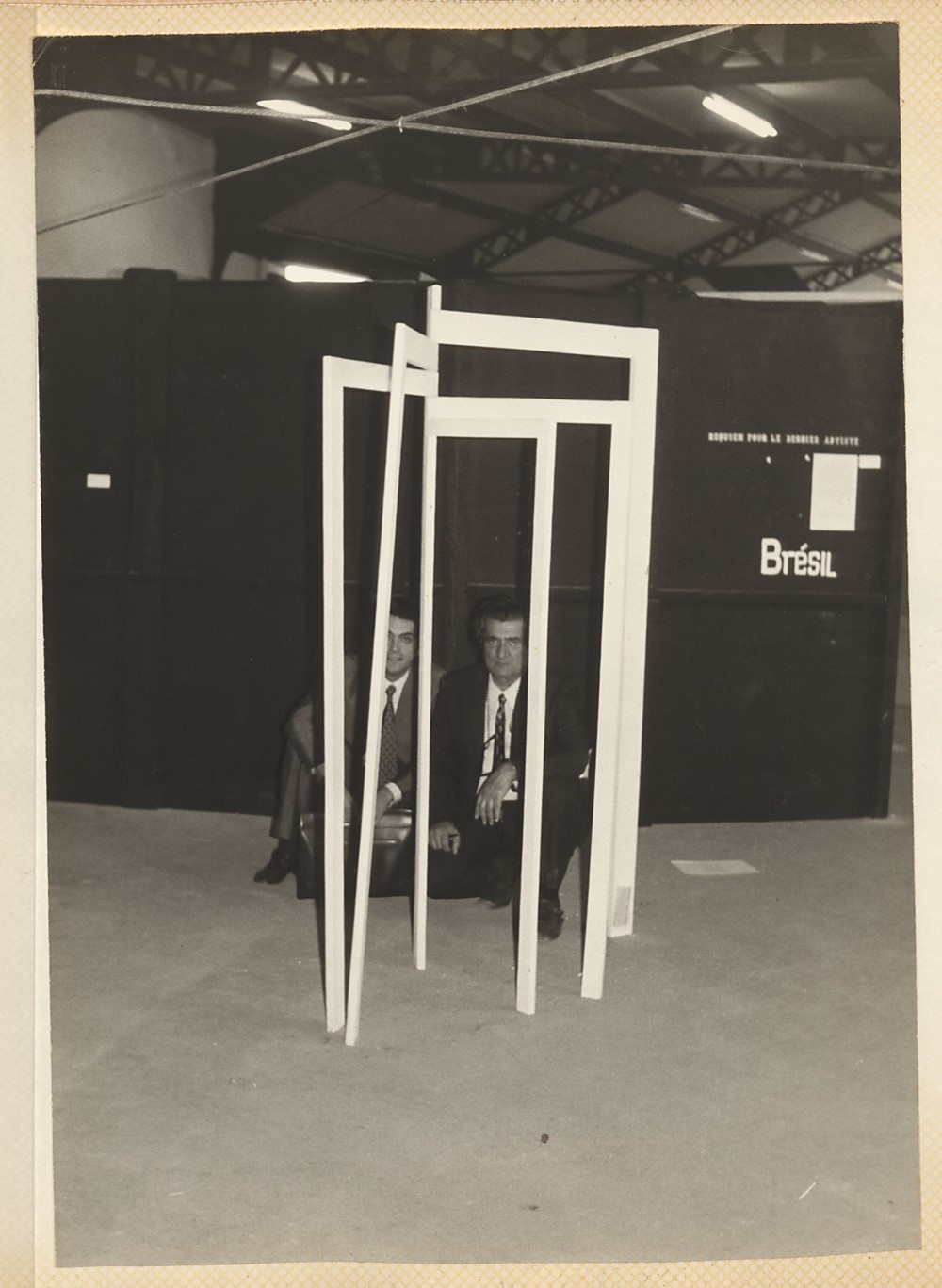
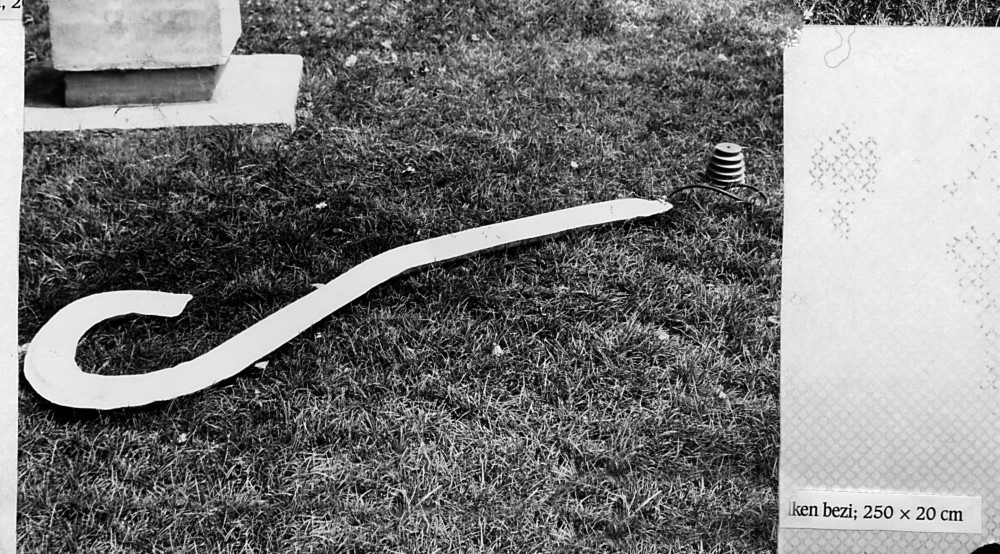
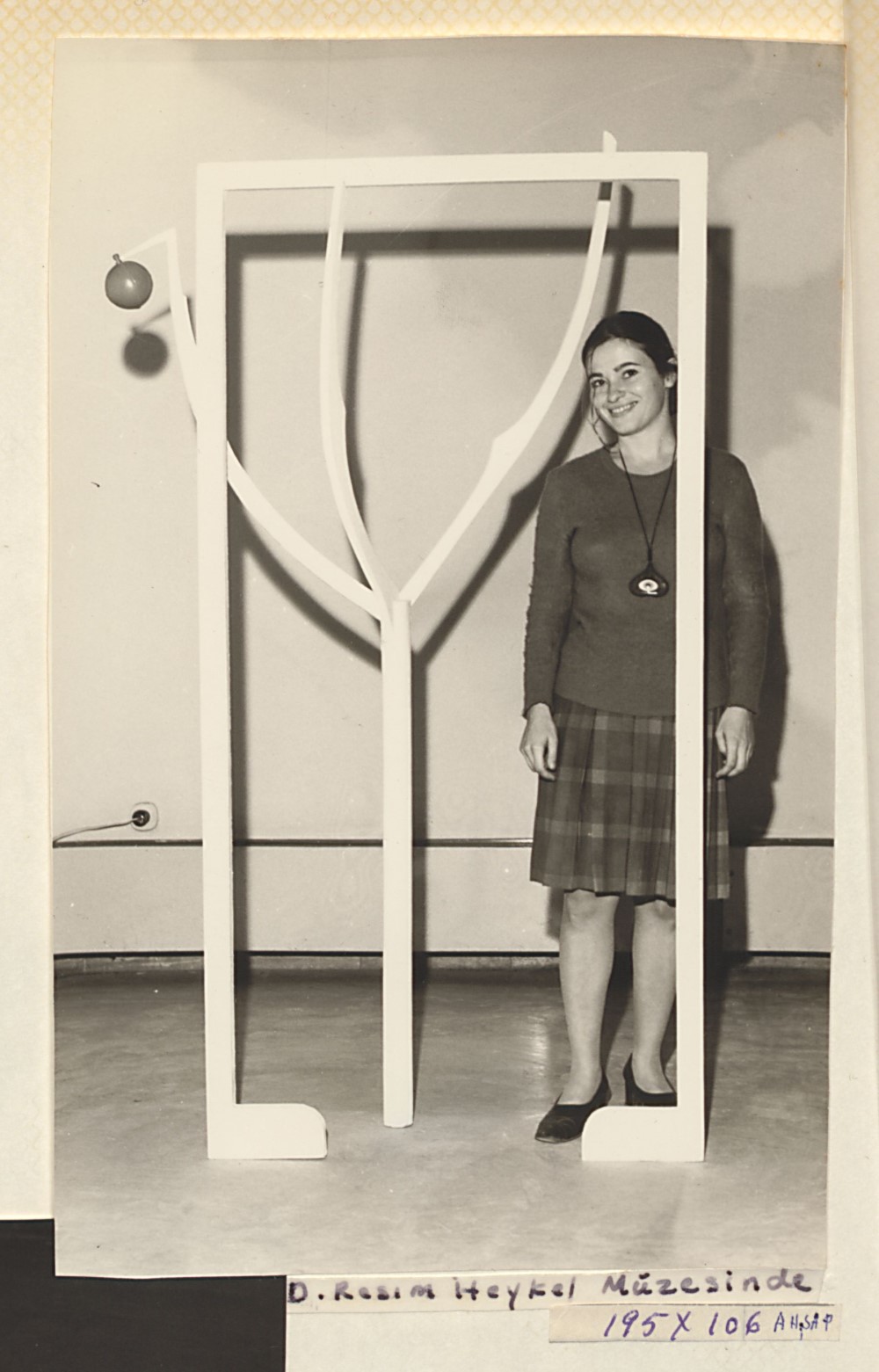
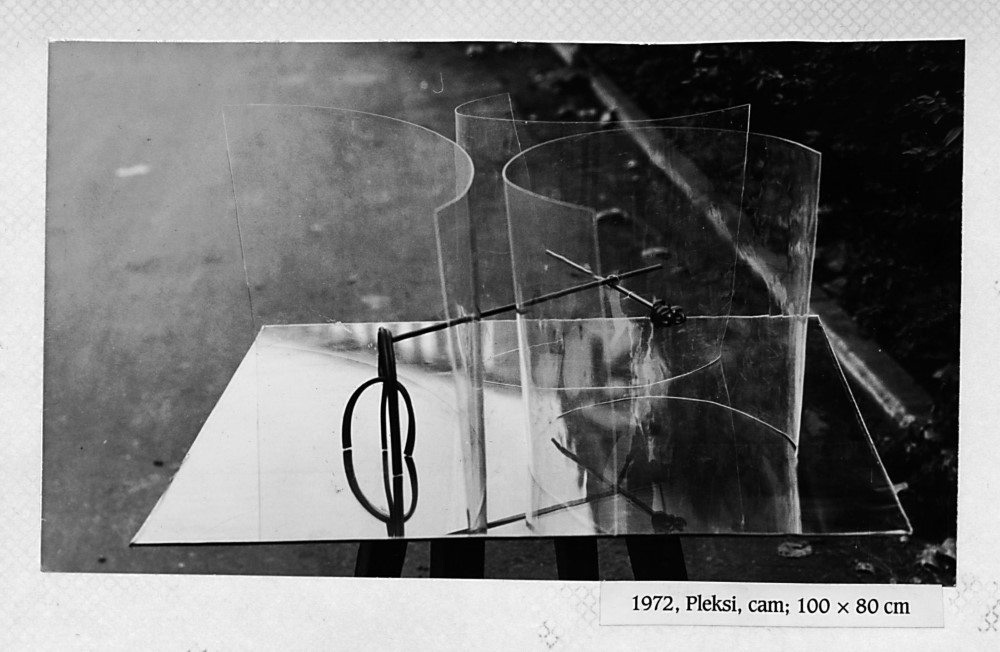
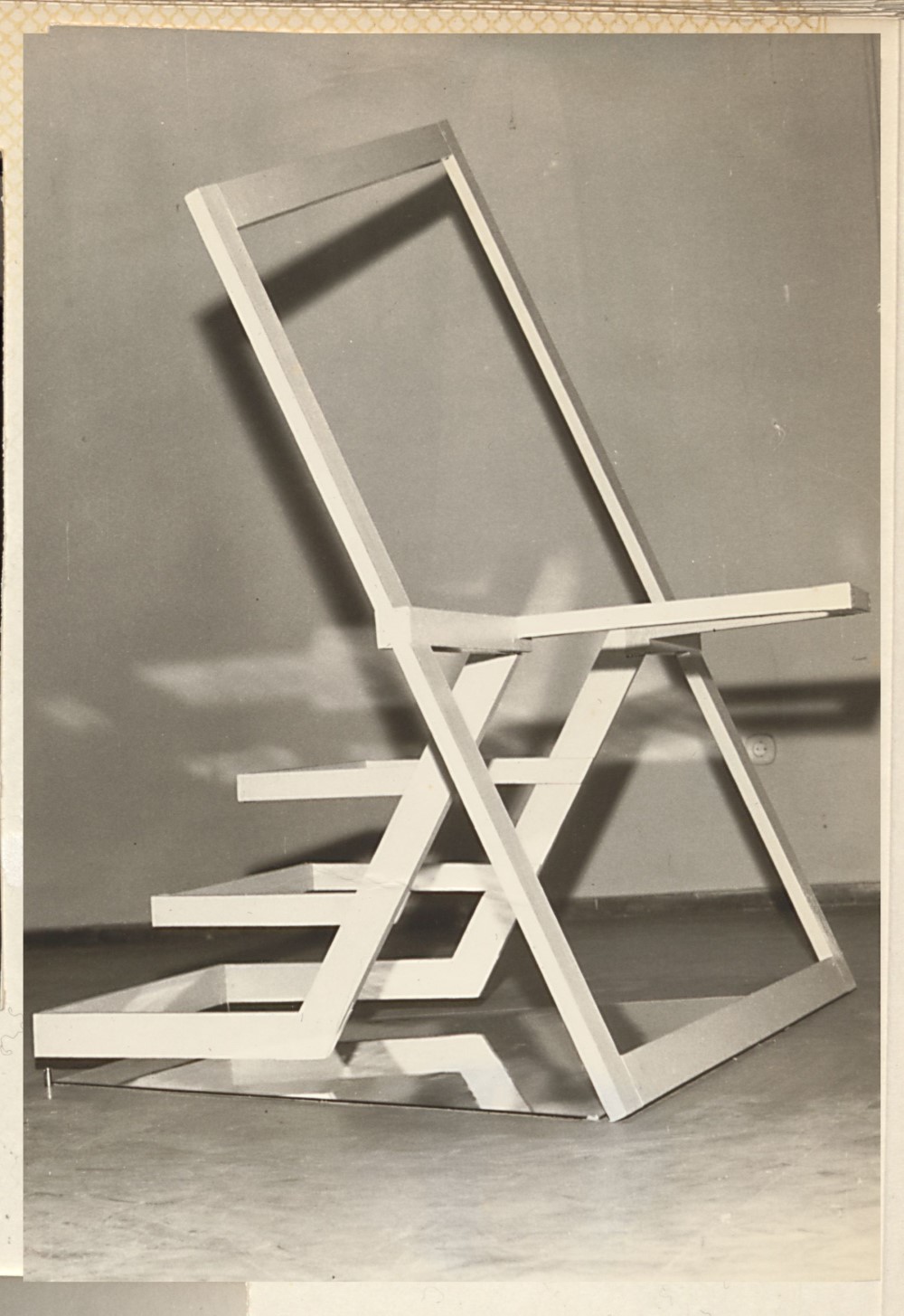
MirroredLabirynth_ArterizniyleFotomurat-germen.jpg)
Nude
by Chus Martinez
Nude: a woman’s body trapped in a box. Is it a cage, or rather a safe, where no one can touch her? Two mirrors project out strangely, reflecting the female nude. She is holding up her beautiful hair with her hands in a suggestive pose. She seems to be by herself, unaware of what is happening outside. Wait! Her body is sectioned into three parts. Her legs, her torso, her head appear like fragments of a body. Who cut her up? Is it painful? Is she aware? It is maybe our gaze that is the issue. We might not be ready to see her body as she does, at ease, absorbed in her morning rituals, coming to terms with the day ahead… Yes, we are outside of her world. She is innocent. We are not. Our mental habits so deeply affect our social behaviour, our perception of gender, that we hurt the body with our thoughts. Luckily she doesn’t seem to know. She is a doll. Or is she? She seems to be real, a real woman, a youthful being, coming to life. Her calmness says: no context is inescapable, it only seems so in a moment of history, from the outside of innocence, but this box speaks about a secret, the secret hope it holds.
.jpg)
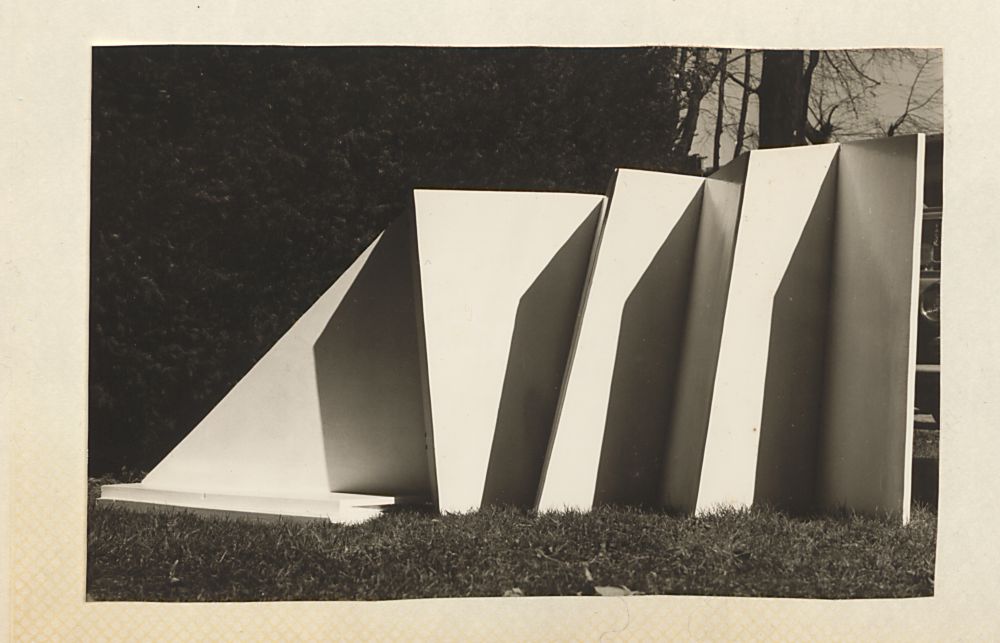
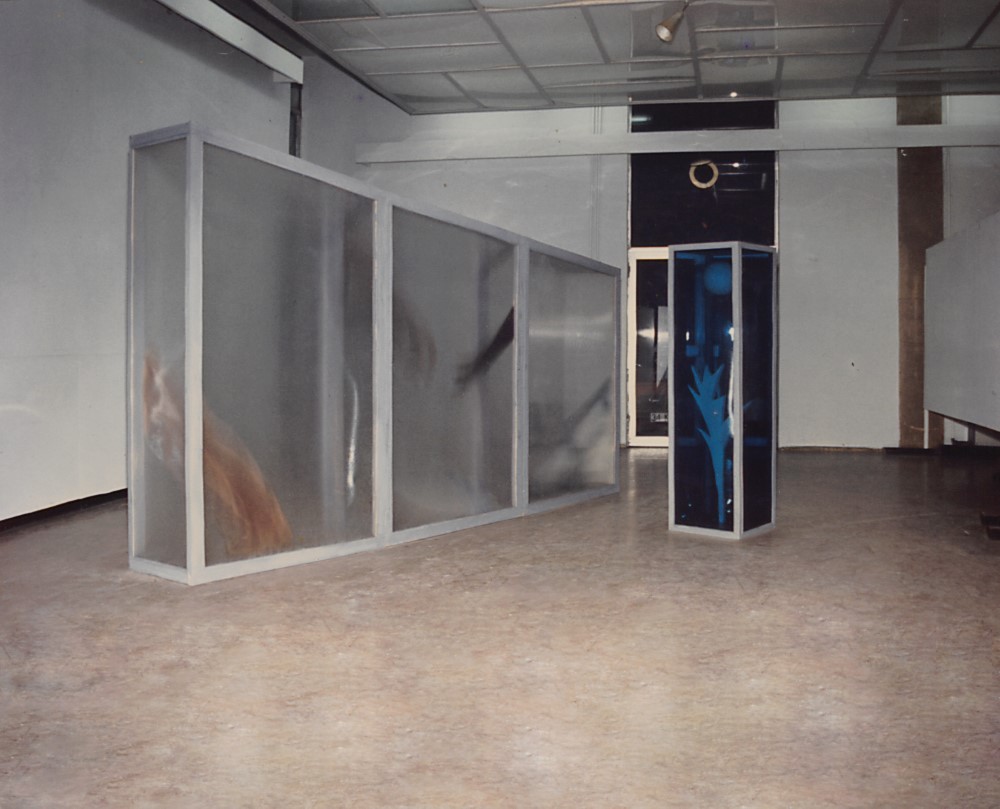
_1.jpg)
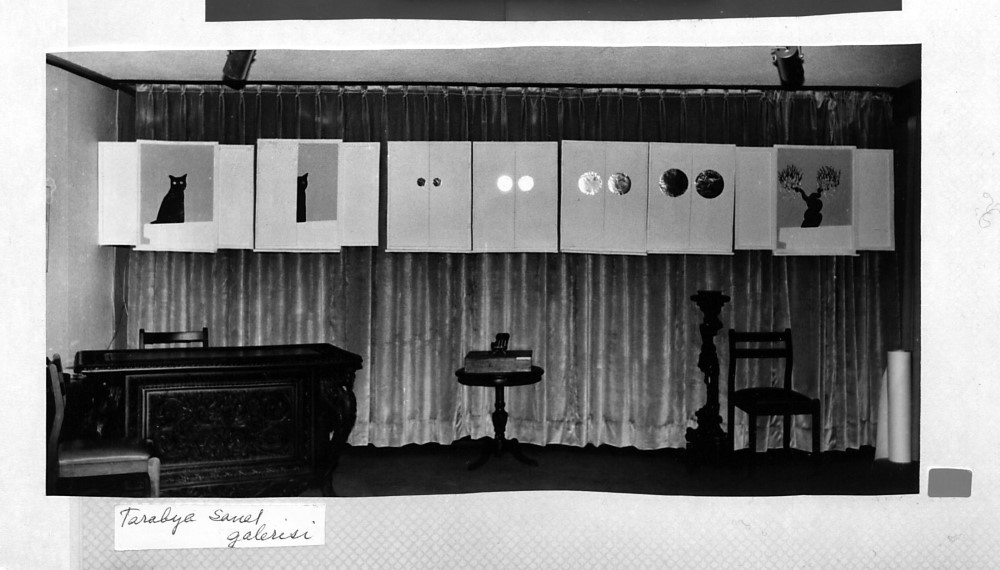
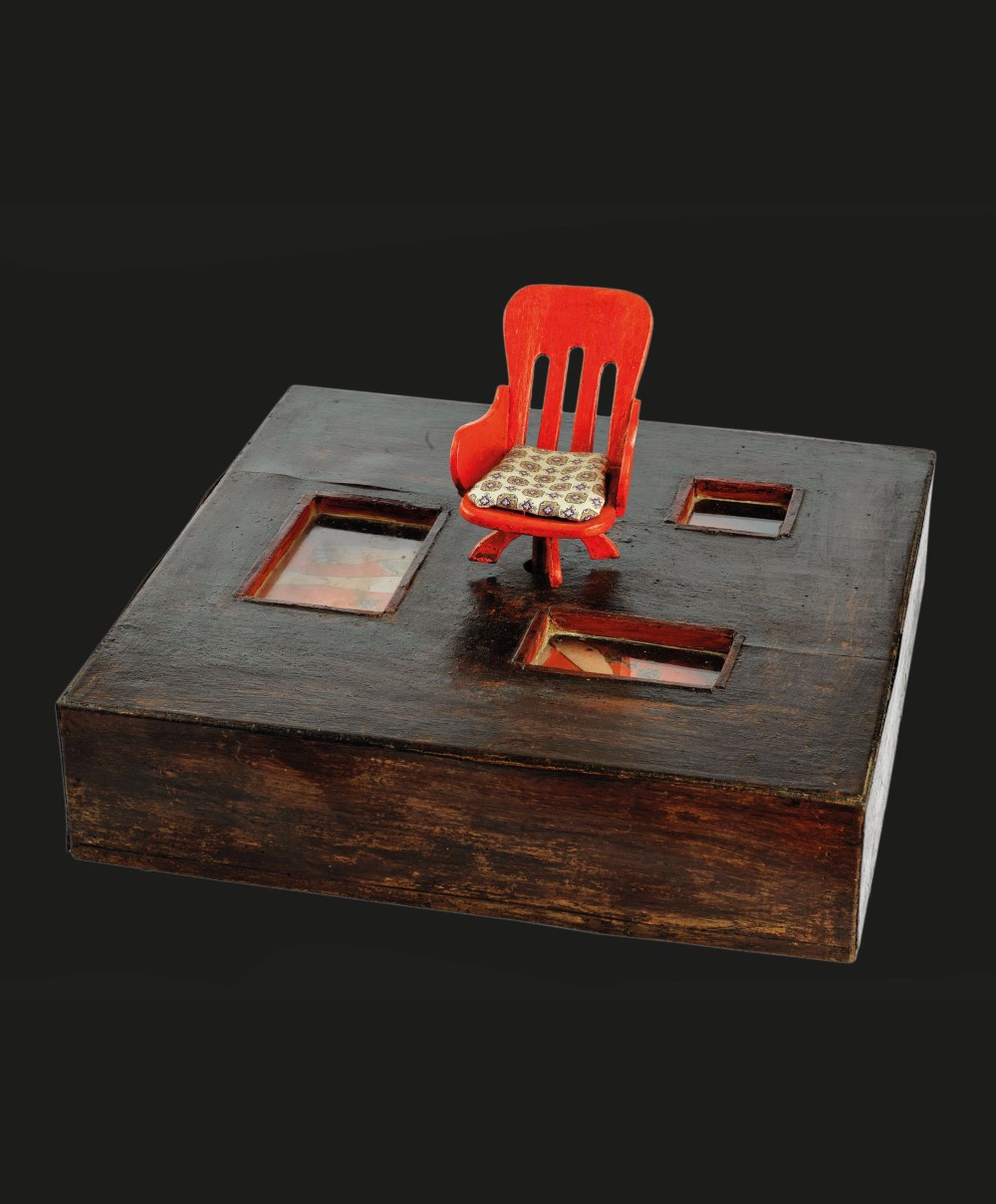
Untitled
by Anne Barlow
Füsun Onur’s Untitled was created for the 1977 Open Air Exhibition at Istanbul Archaeology Museums. Acting as a kind of intervention in the grounds of the museum, the work responded not to historic contexts or narratives but rather to the physical nature of the site itself. Using pieces of sandstone and earth, Onur emulated the patterns of the pathway, creating a ‘surface on a surface’ – in essence, another version of that reality. An embedded plant disrupted the layer of stones, its shape from certain perspectives resembling a small figure: an unlikely protagonist in balletic pose. As an ephemeral element of organic life whose form would inevitably change and deteriorate, its presence also introduced the dimension of time. An antique gilt frame defined the border of this composition, communicating that it was an artwork. Yet in being viewed from above, it created an experience of looking that was far from the typical gaze at artworks on a Museum or gallery wall. This was a construction that was clearly artificial: art, life and nature co-existed in this poetic, playful gesture.
Untitled (1977) reflected Onur’s increasing experimentation with forms in sculpture through her conceptual installations that began in the early to mid-1970s, as evidenced in the use of found or ready-made objects, and a shift away from more conventional sculptural materials. It also encapsulated elements of what would become key preoccupations for Onur in subsequent years, from her interest in the position of the viewer to her preoccupation with the relationship between image and frame, art and daily life, and the constructed and the real. As such, Untitled was a poignant precursor of what was to follow.
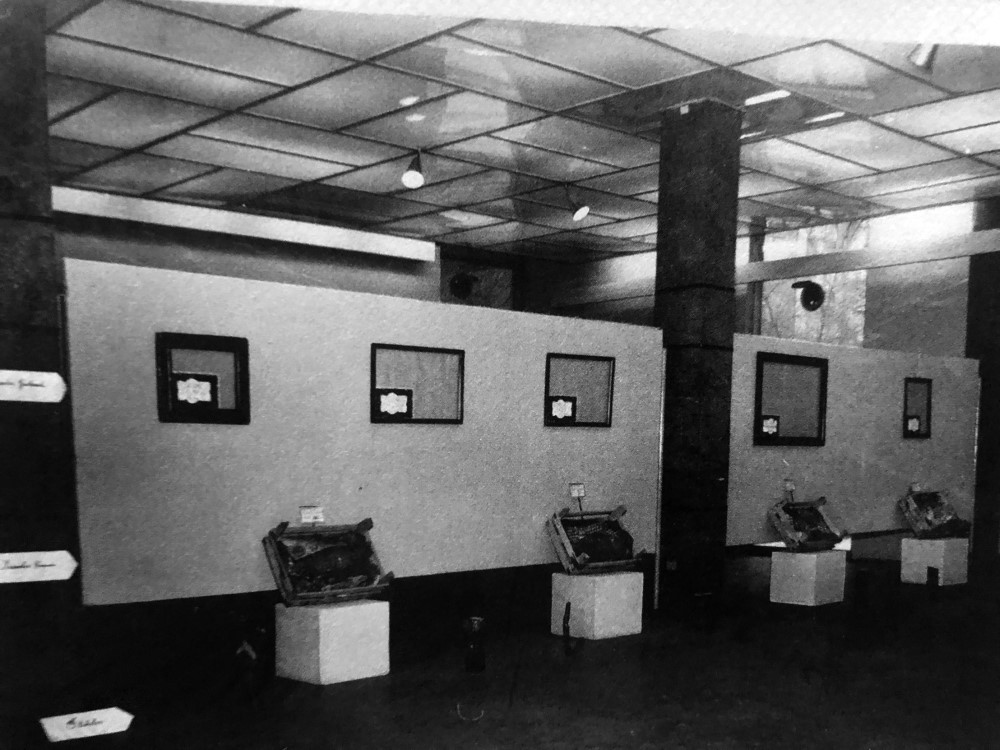

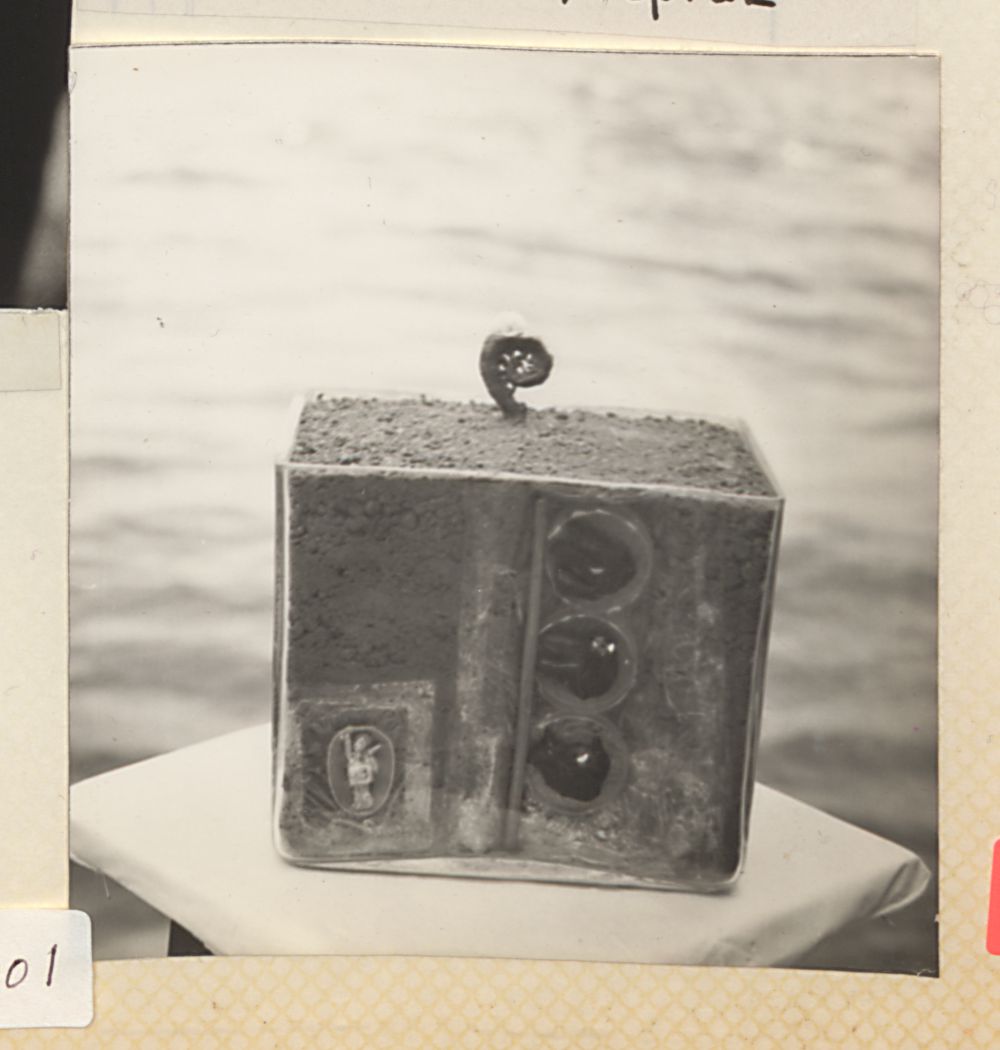
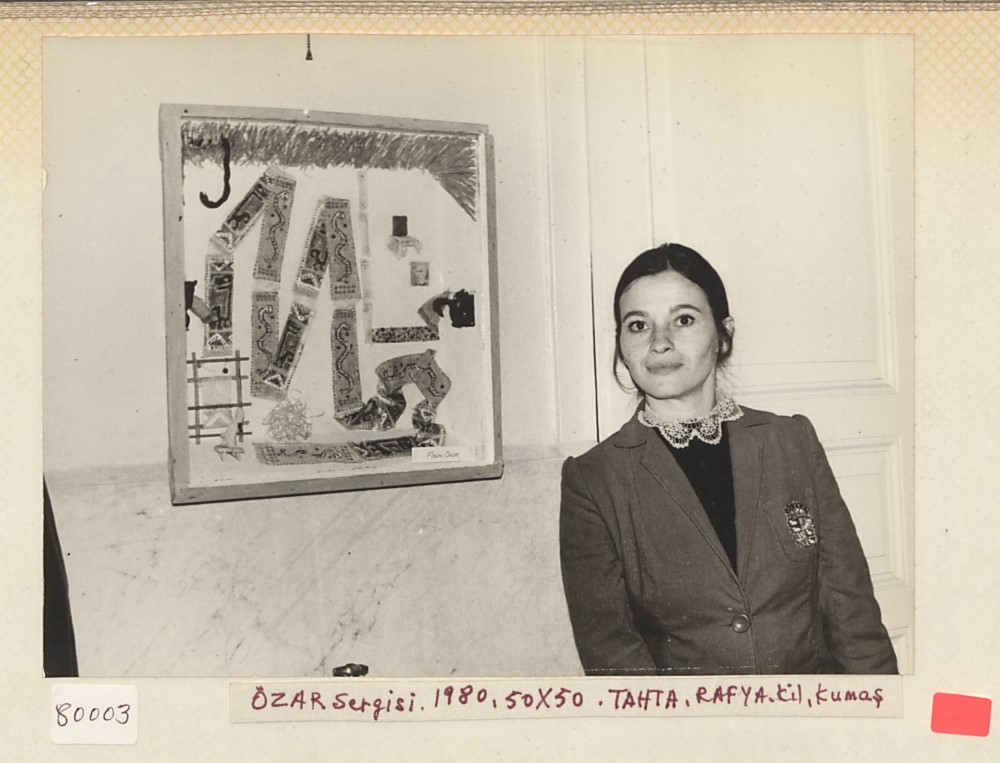
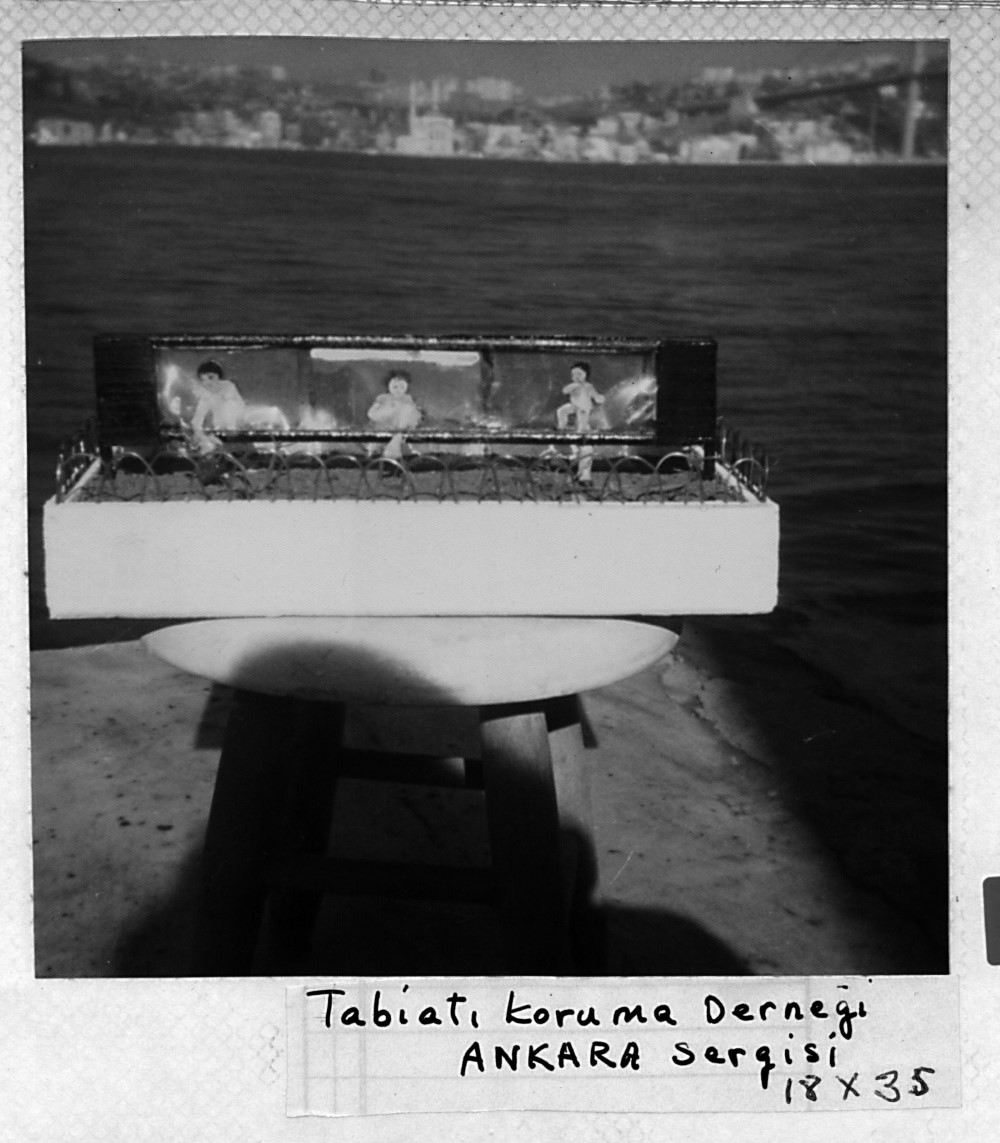
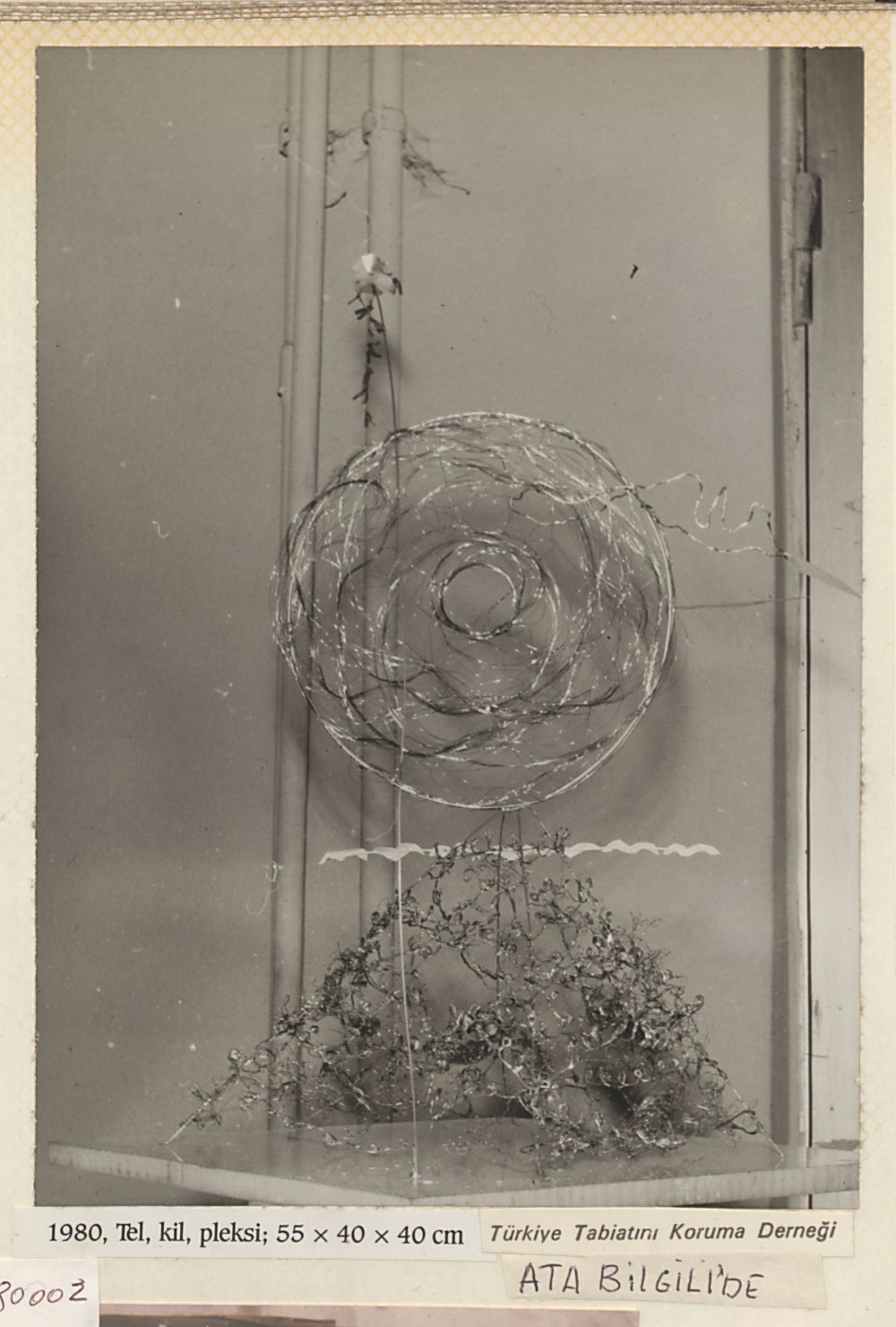
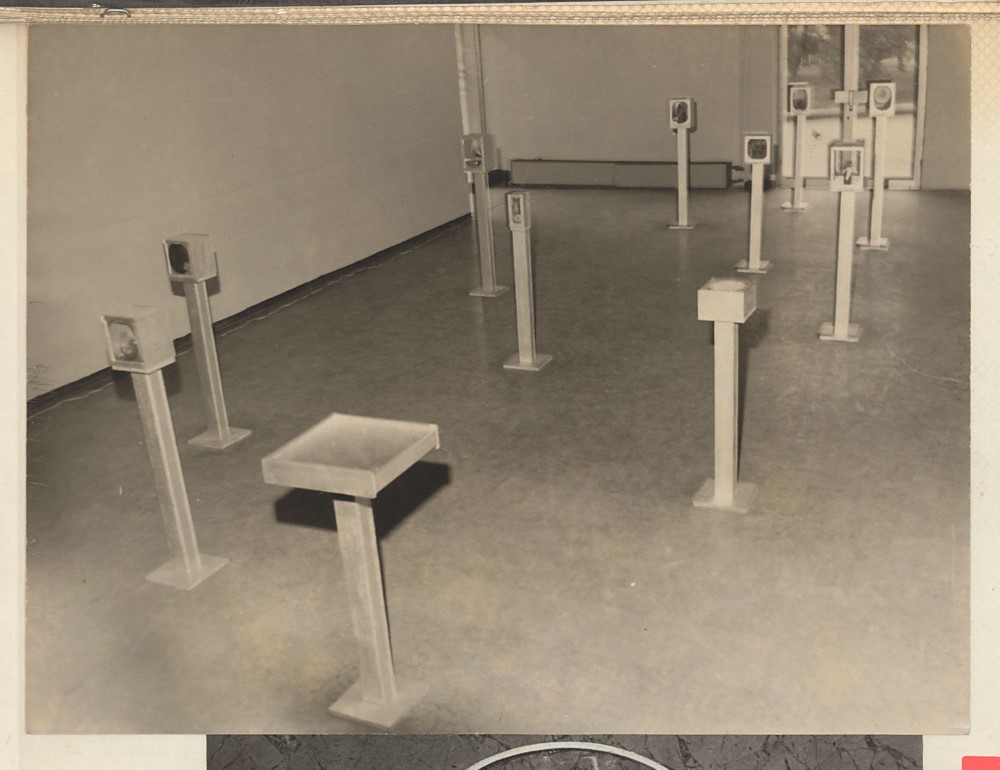
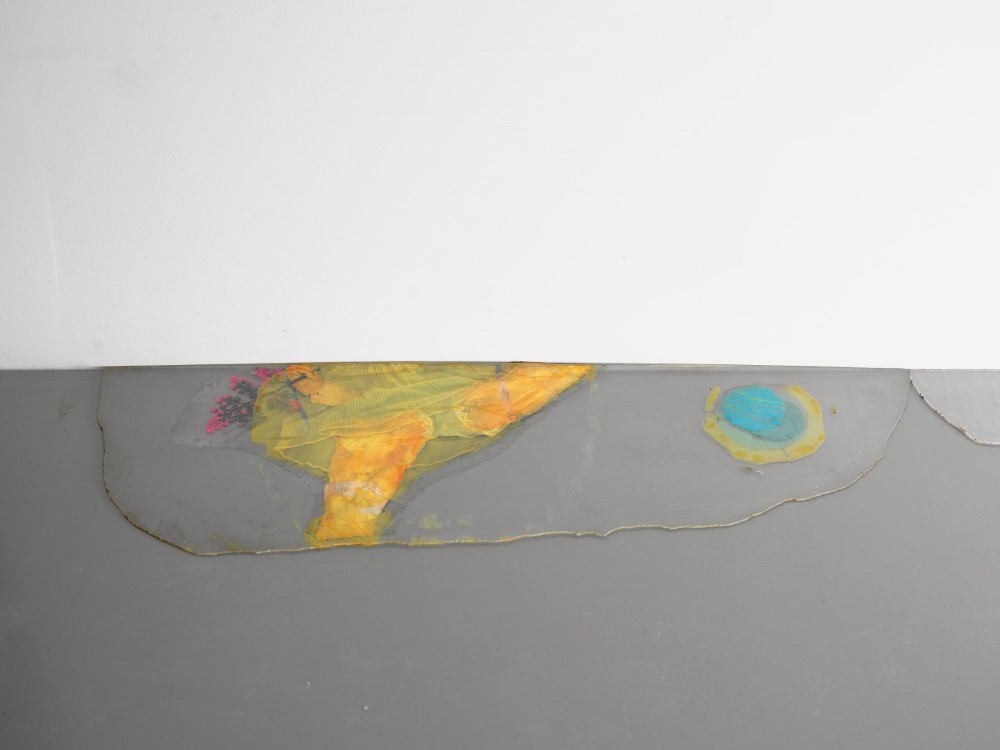
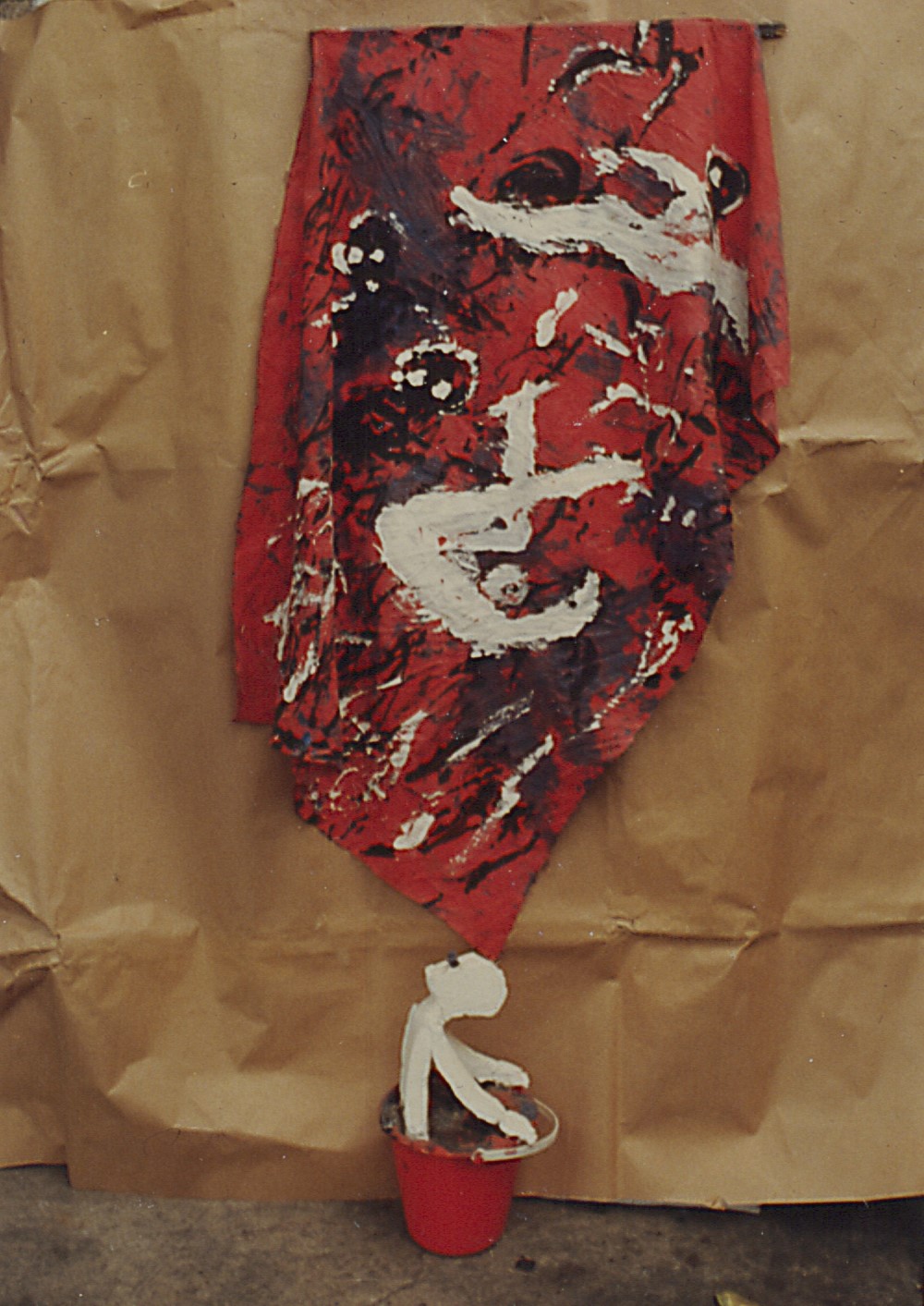
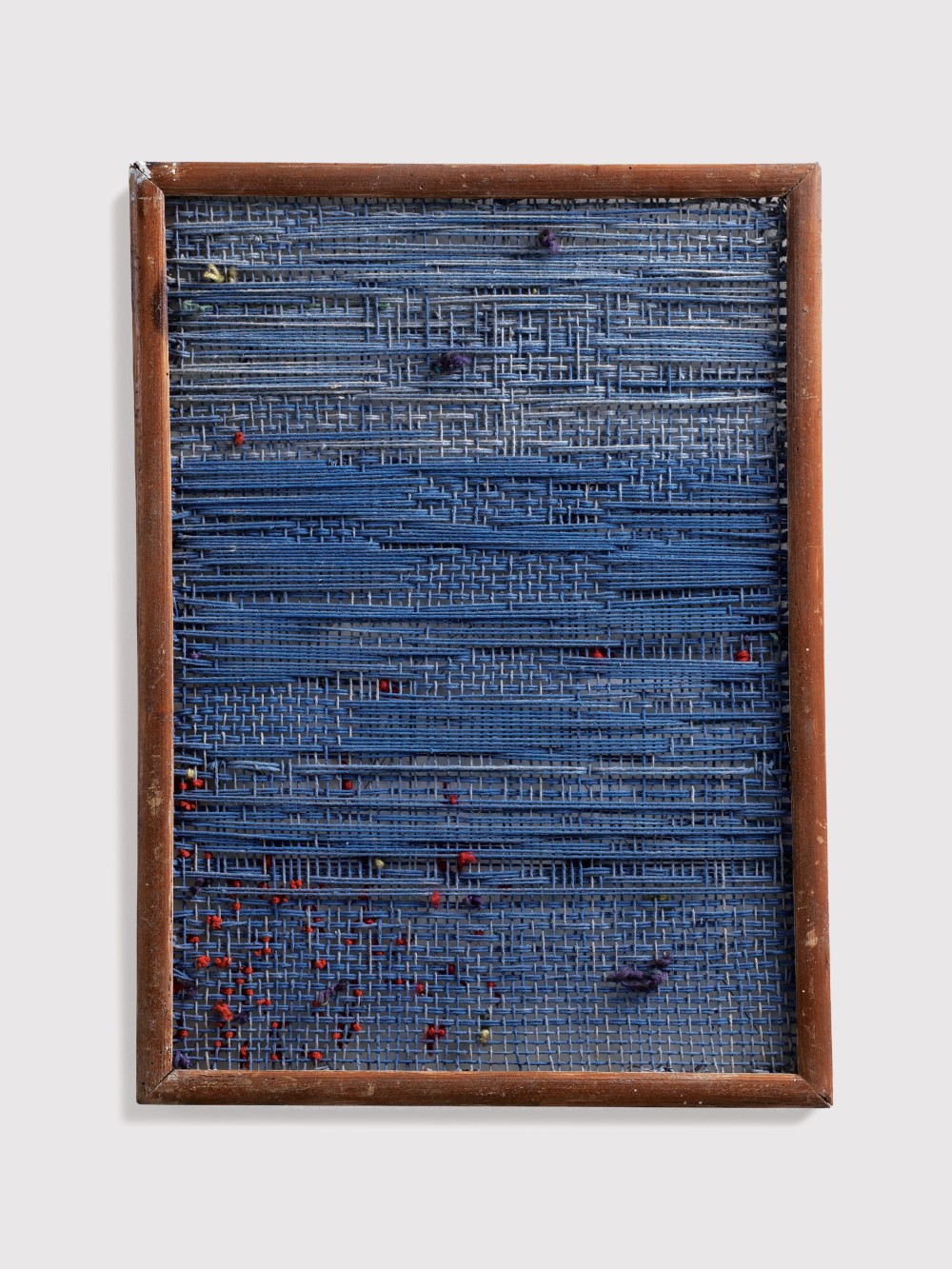
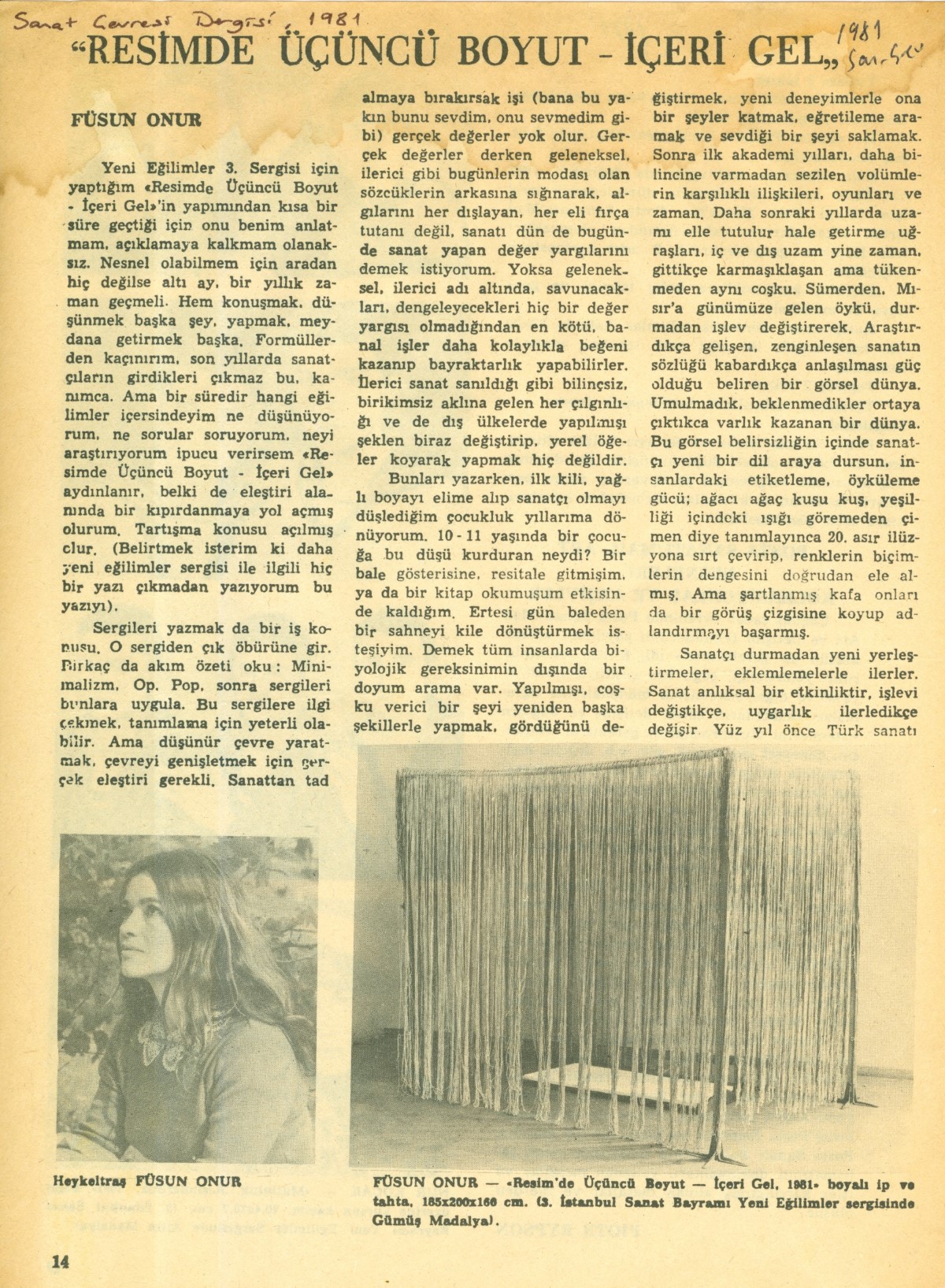
In the Beginning…
by Iwona Blazwick
If we try to imagine how freeform jazz might look as a work of art, the early geometric abstractions of Füsun Onur come to mind. Her hard-edged compositions are rhythmic improvisations in line and shape. Blocks of pure black jive with white voids. Like a saxophonist improvising on a single note, Onur elongates, repeats and doubles back on her rectangles and circles to release their vibrancy in forms that dance before our eyes. There is also something of nature invading the space of culture: solid monochromes split and fissure as if on geological lines; the Euclidean perfection of geometry is bent and fractured as if by some elemental force. The kinaesthetic movement of these black and white images gives equal valence to presence and absence, the seen and the invisible, silence and sound. Over the years, the graphic lines that once contained solids and voids escaped from the surfaces of Onur’s modestly scaled, minimalist compositions to embark on a series of adventures. They metamorphosed into the fibres of a textile or into a thread connecting found objects in poetic lines of association. The two-dimensional diagram walked out of the image and into real space and time to become an architectonic form. Intimations of rhythm and movement became fully fledged sound installations. These early works are, in a way, prototypes, the foundations of an epic journey that came to absorb a life and its histories into its gyrating geometries.
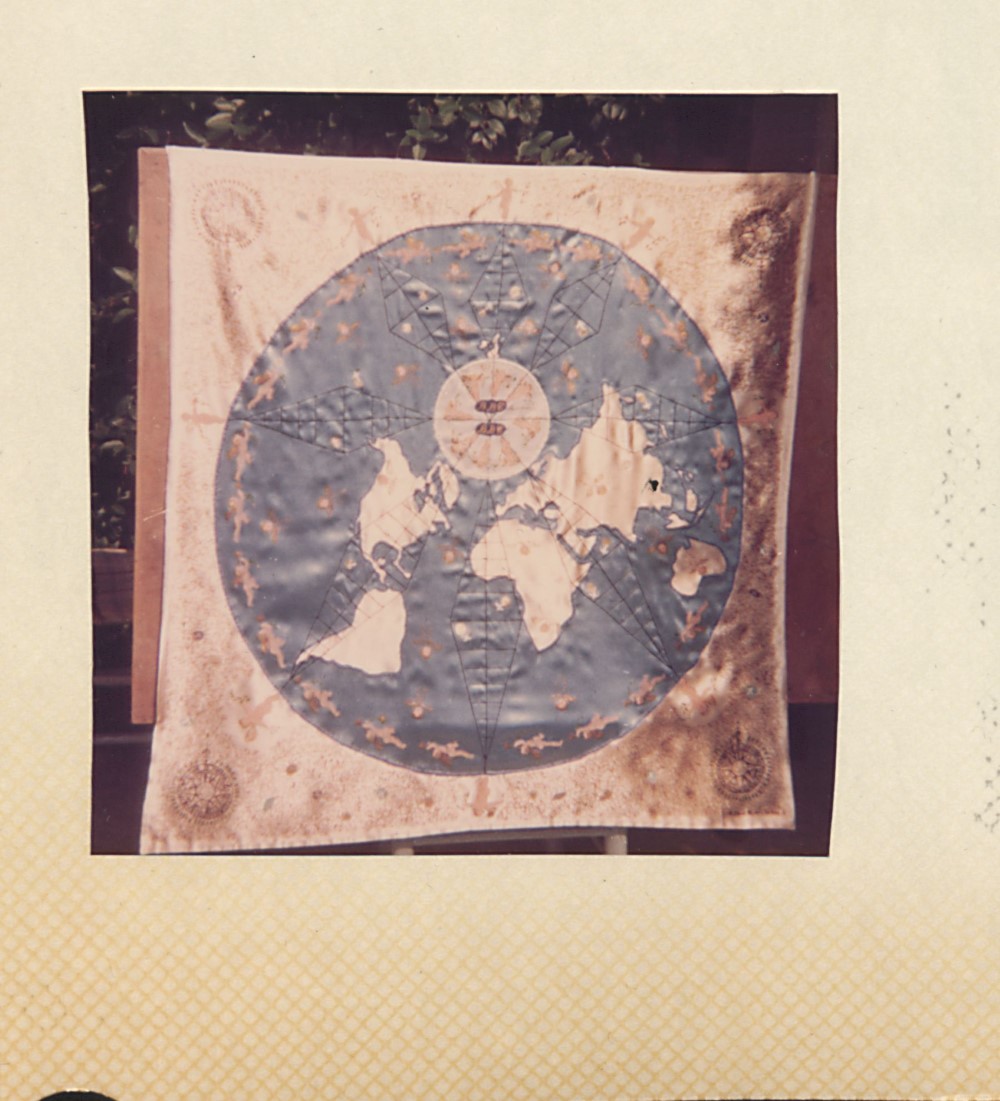
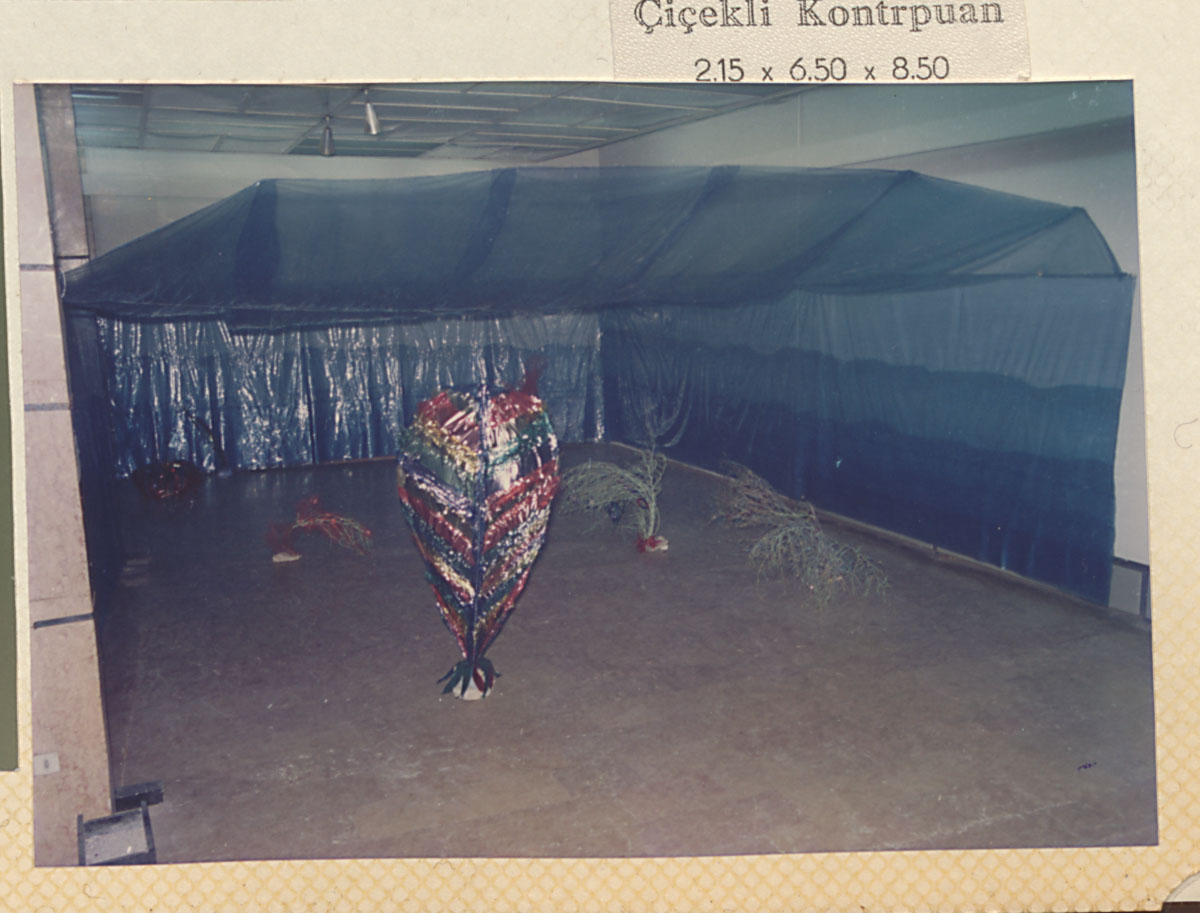
Counterpoint with Flower
by Sally Tallant
We are emerging from over a year of isolation and loss, due to the global pandemic. Processing and coming to terms with what we’ve experienced, we struggle to find a language to speak about the intolerable uncertainty and grief that we’re collectively facing, and it is art and artists that provide us with a way through.
So to enter a world drenched in blue light, a place filled with poetry, is a relief from the chaotic and confusing world we navigate. This magical, dreamlike place exists inside the silent and joyful world of
Füsun Onur’s Counterpoint with Flower (1982).
This installation punctures the everyday and offers shelter. We find ourselves immersed in a spatial and temporal experience. Imagine sitting in a volume of water or at the bottom of a pool holding your breath and taking a profoundly silent moment to listen and to experience a visual counterpoint. This calm environment creates a space for us to rest and make sense of the world. It transforms everyday materials into magic and poetry, tree branches and rocks into bright red flowers and leaves. The dreamlike scene seems to unfold in a hopeful, silent musical pause.
This work requires time. It rewards those who are open to the possibility of making and experiencing a new world – it is a gift to those who can allow themselves to experience it.
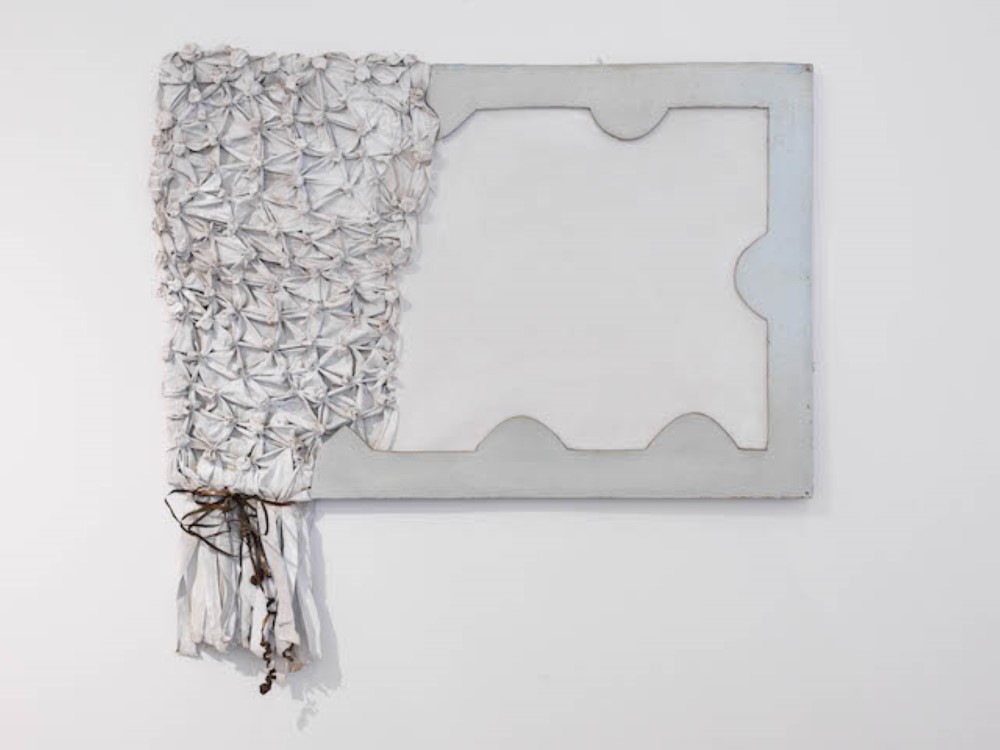
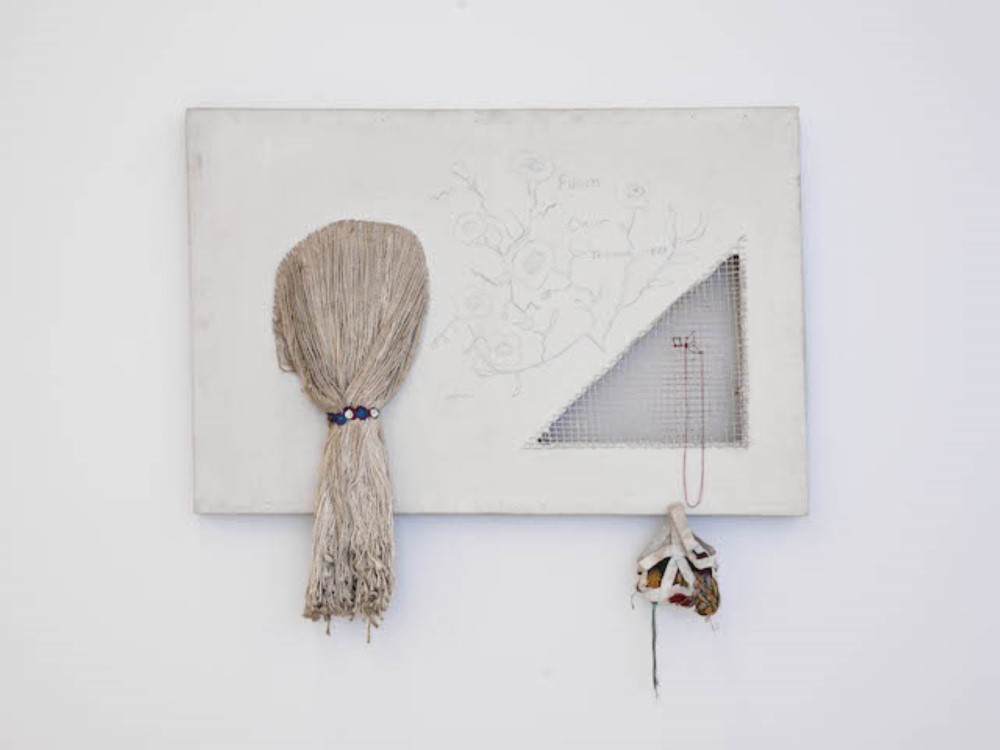
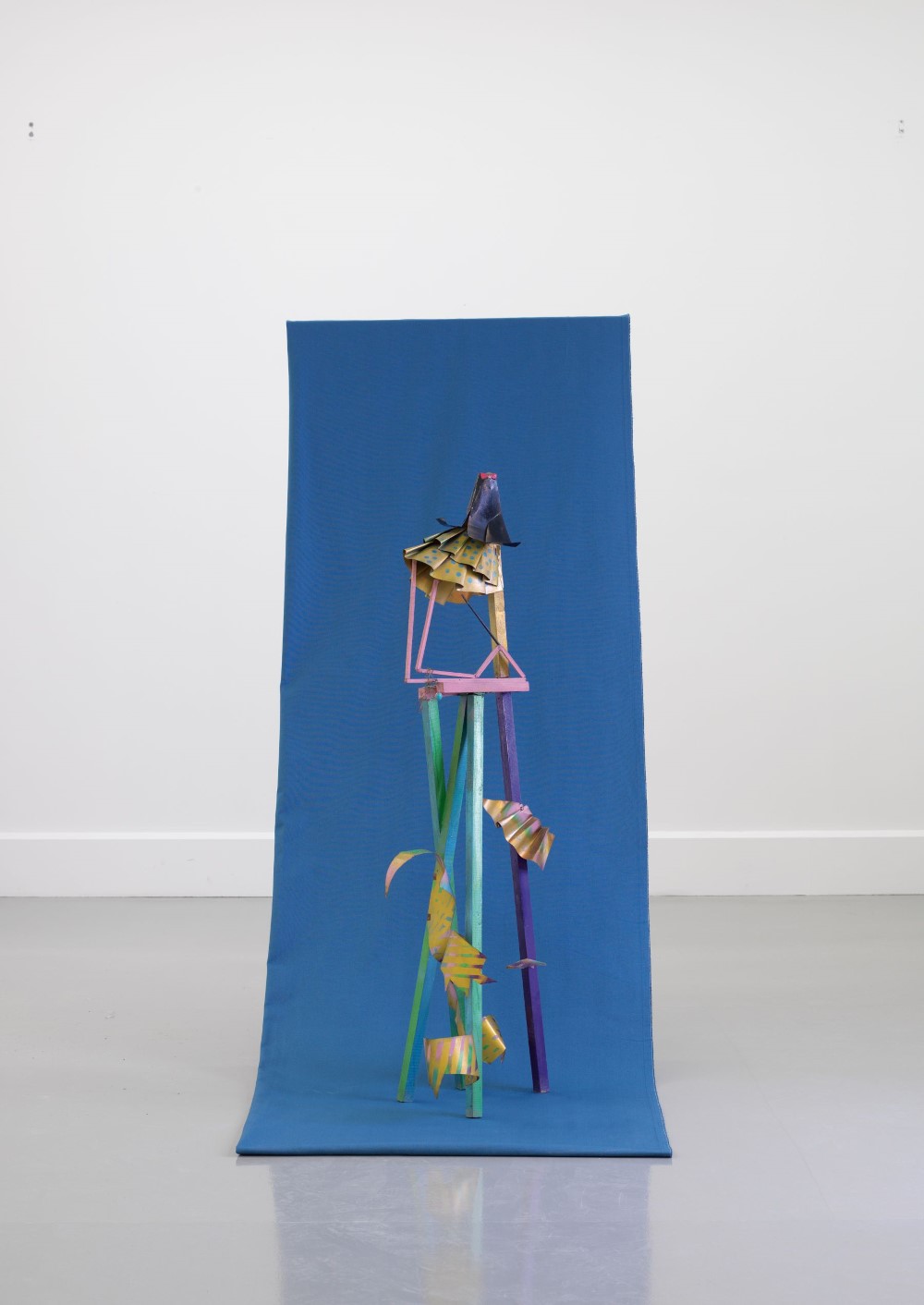
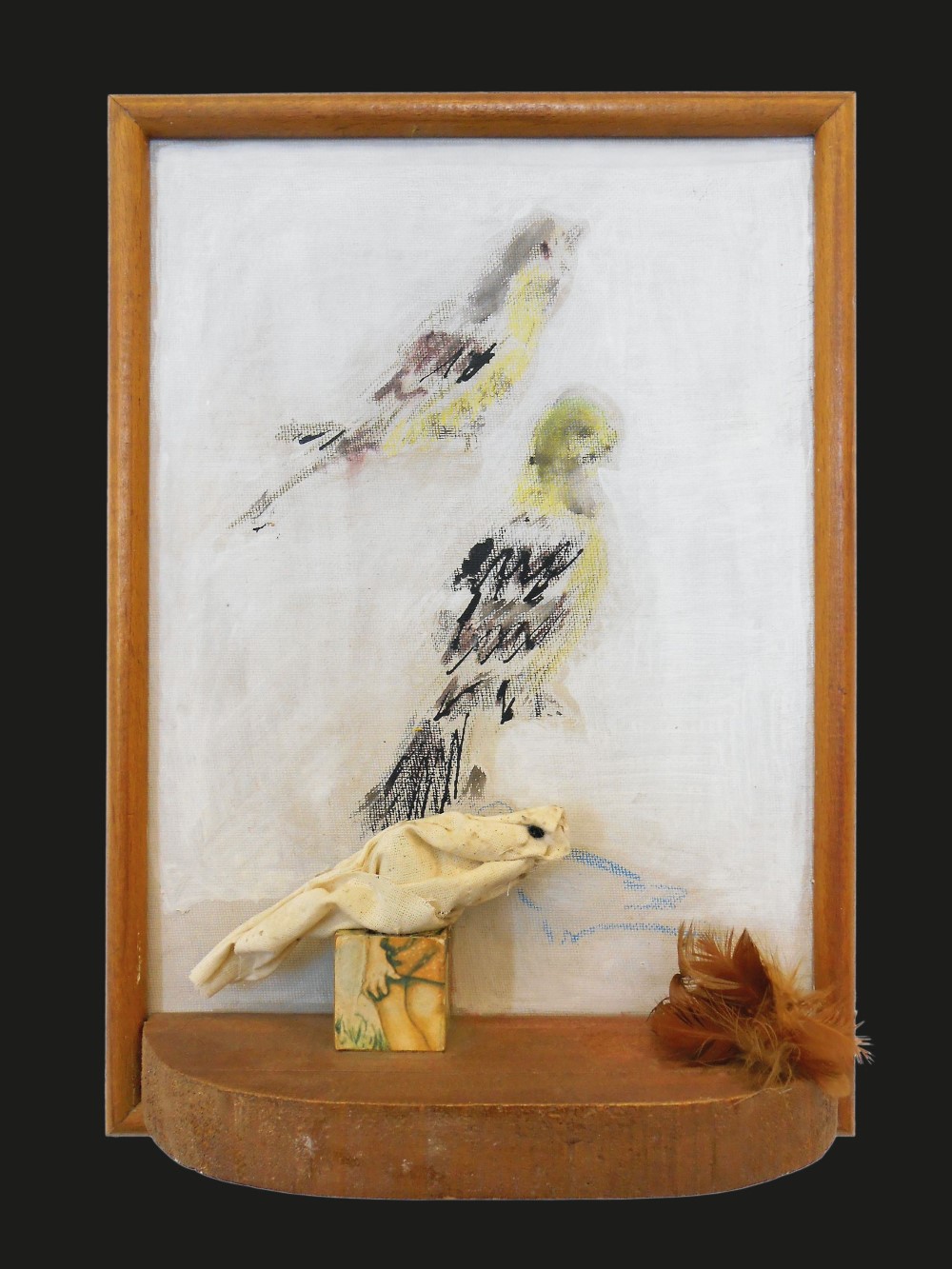

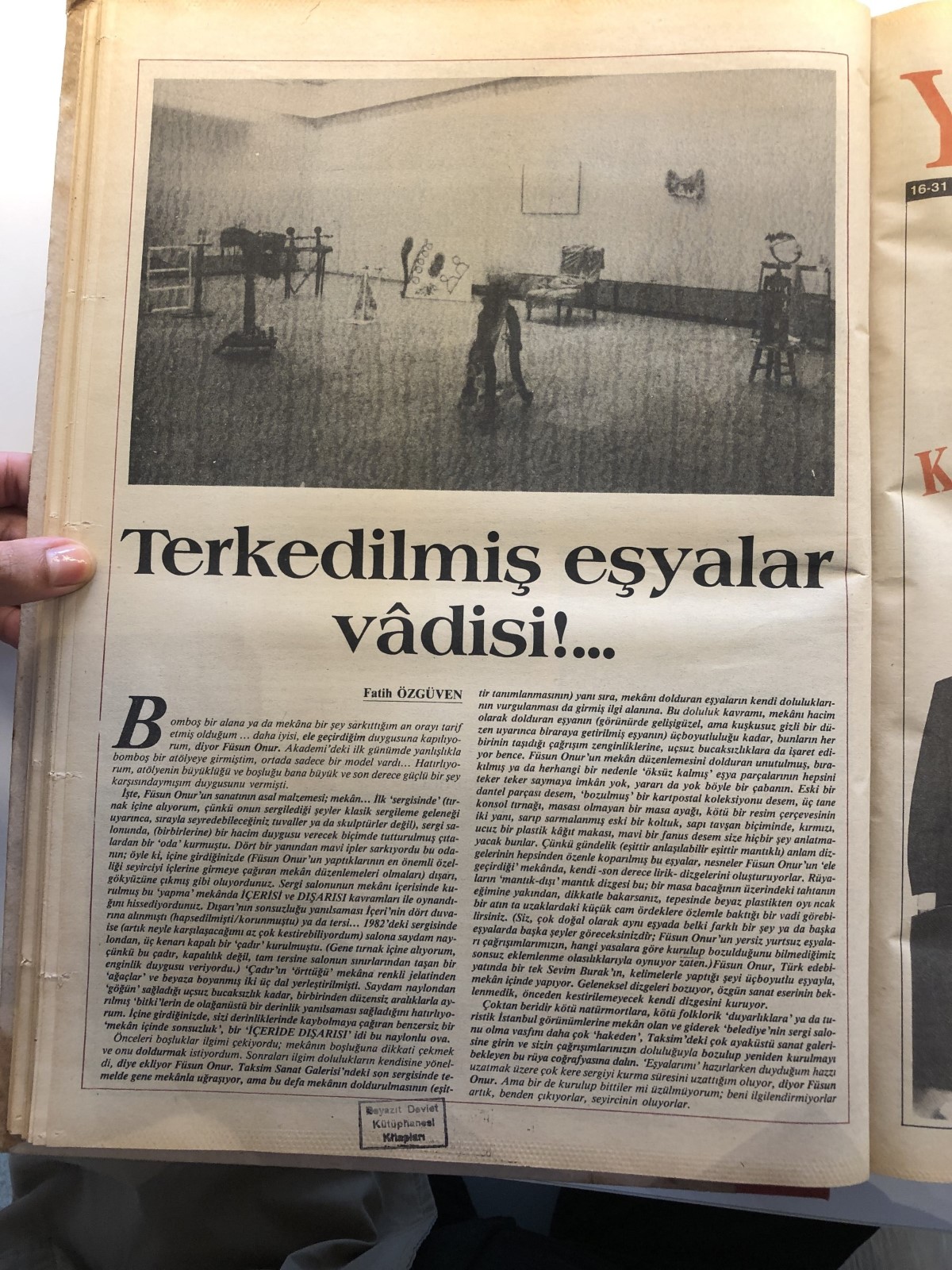
An Interior for an Interior
by H.G. Masters
Füsun Onur’s artistic practice and conceptual art are like distant relatives – we might not discern any resemblance at first. Her creations draw from things of daily life and their haptic evocations within us. An assembly of domestic objects, Dream of Old Furniture (1985) brings with it the materials – their appearance, their threads, their dust, their scent – of a home, and creates an uncanny space within the purported neutrality of the white cube. The dynamic is deliriously awkward – the objects are intensely familiar, but appear disturbed and dislocated. The pair of doll’s legs, draped with a strand of common lace, stands on a wooden pedestal, but the rest of the figure has vanished. The cover of an ungainly armchair is stitched and bunched like a figure in confinement. A family portrait appears embroidered on a tabletop, along with two larger busts and their five little loved ones, but the table is disassembled, lying on its side with a wooden leg next to it. On the other side of the room, a lectern has wrapped itself in blankets and a tasseled woven net, as if it is trying to disappear. These are odd objects, each seeming to be playing and simultaneously refusing a role in this domestic arrangement. There’s a surfeit of personality and absence of functionality. What Onur’s installation reminds us of, in the objects’ displacement into this carpet-less, evenly lit, temperature-controlled art venue, is that we inhabit our possessions to such an extent that we become inseparable from them. And they also remind us that the white cube is life’s mausoleum, shattering any illusions we might carry into the museum, just as any good member of the conceptual art family would.
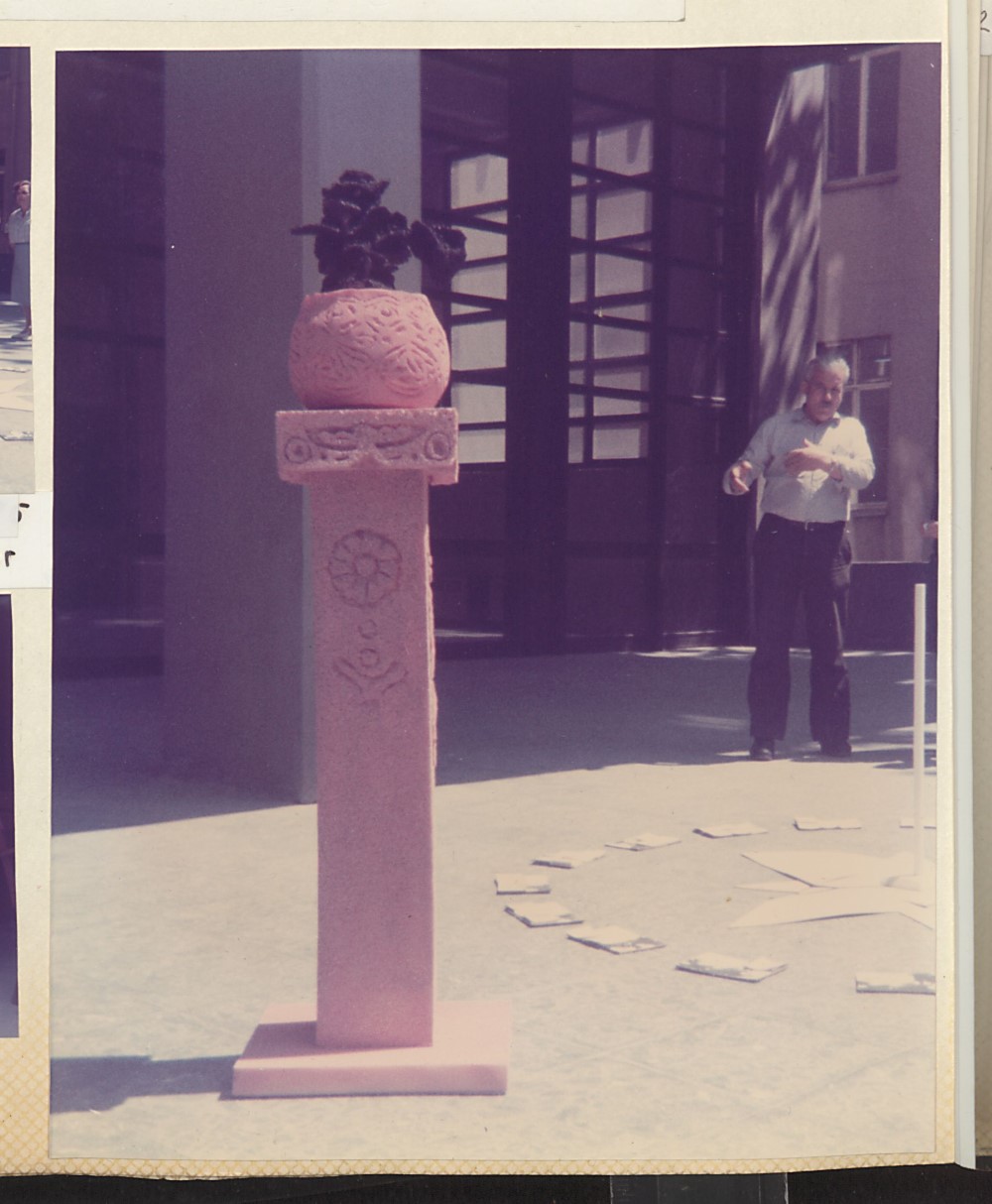
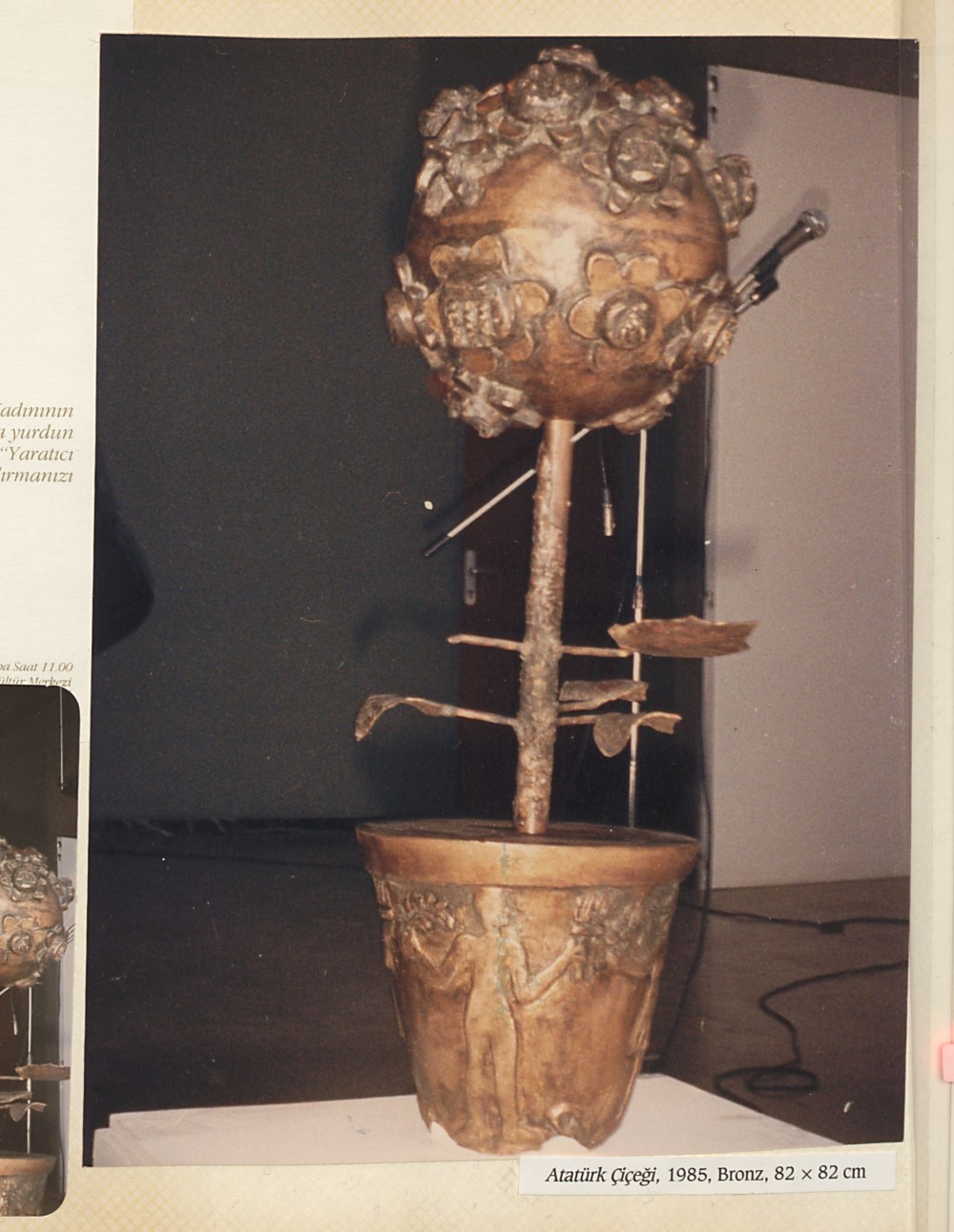
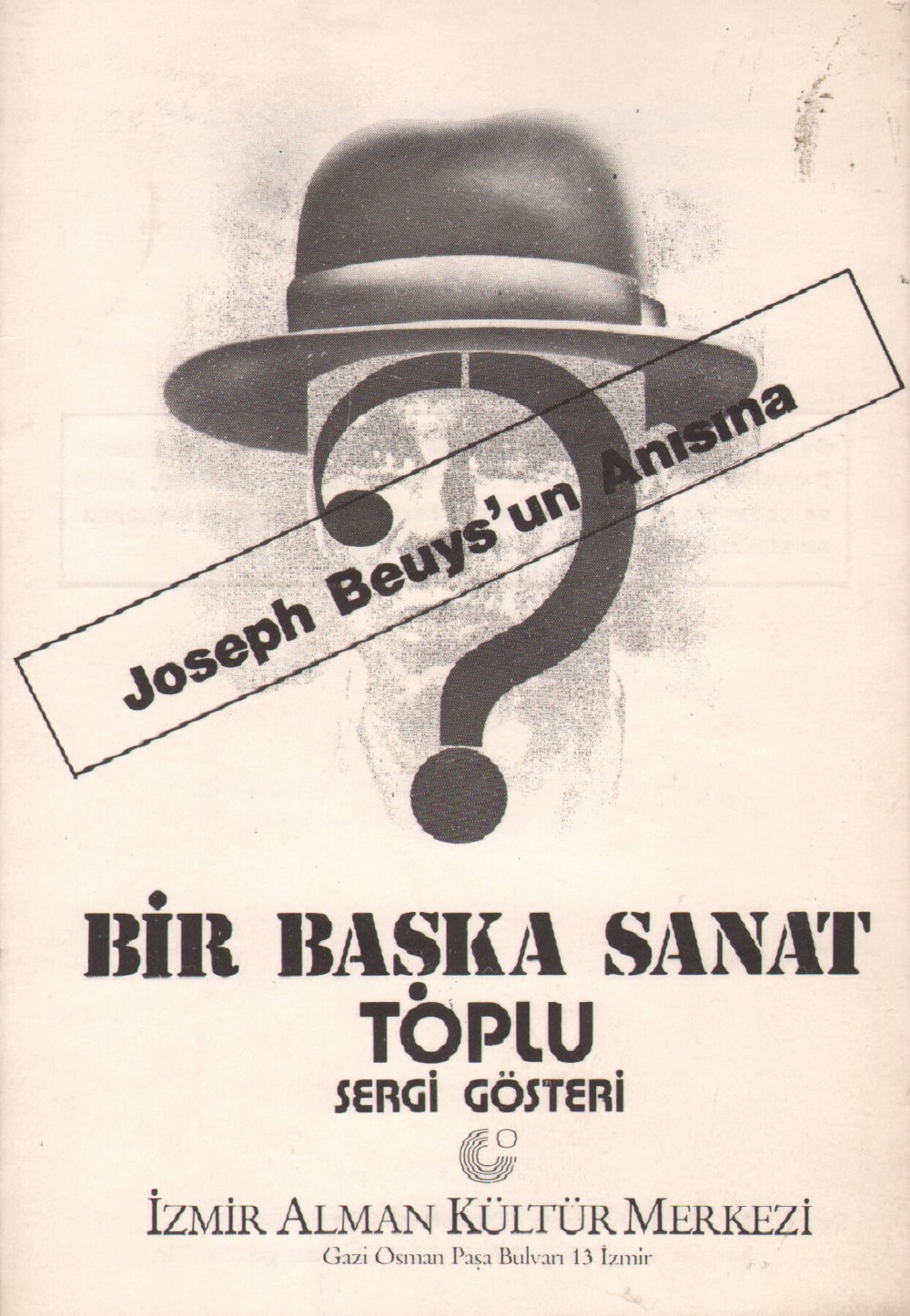
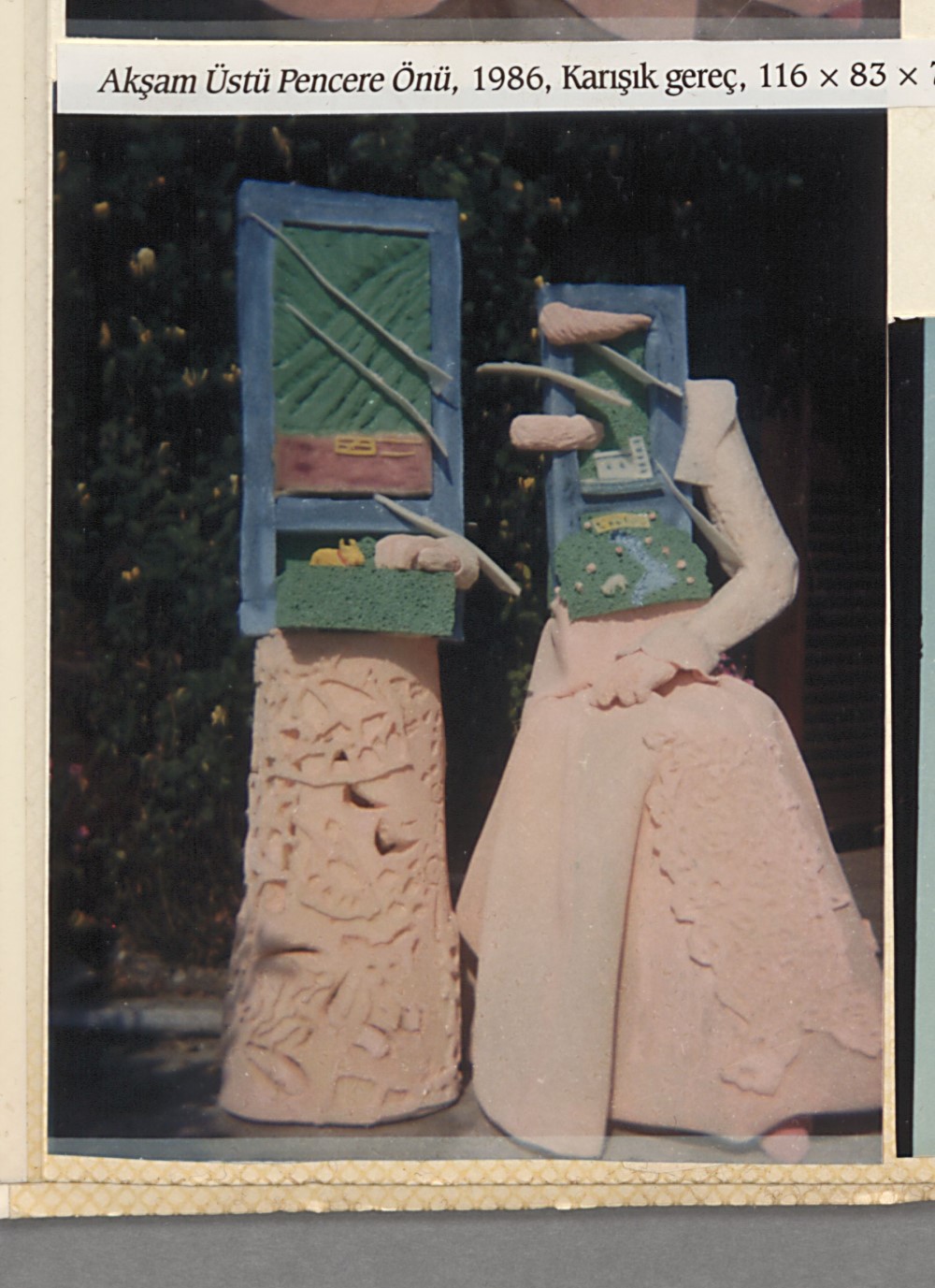
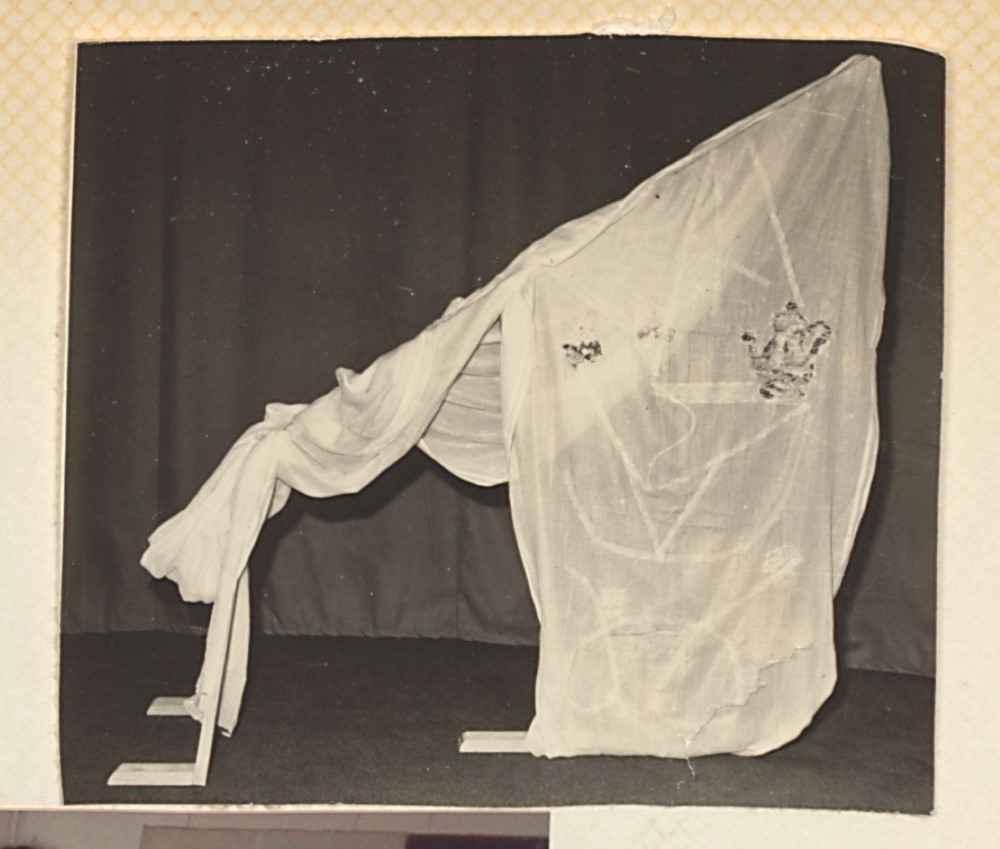
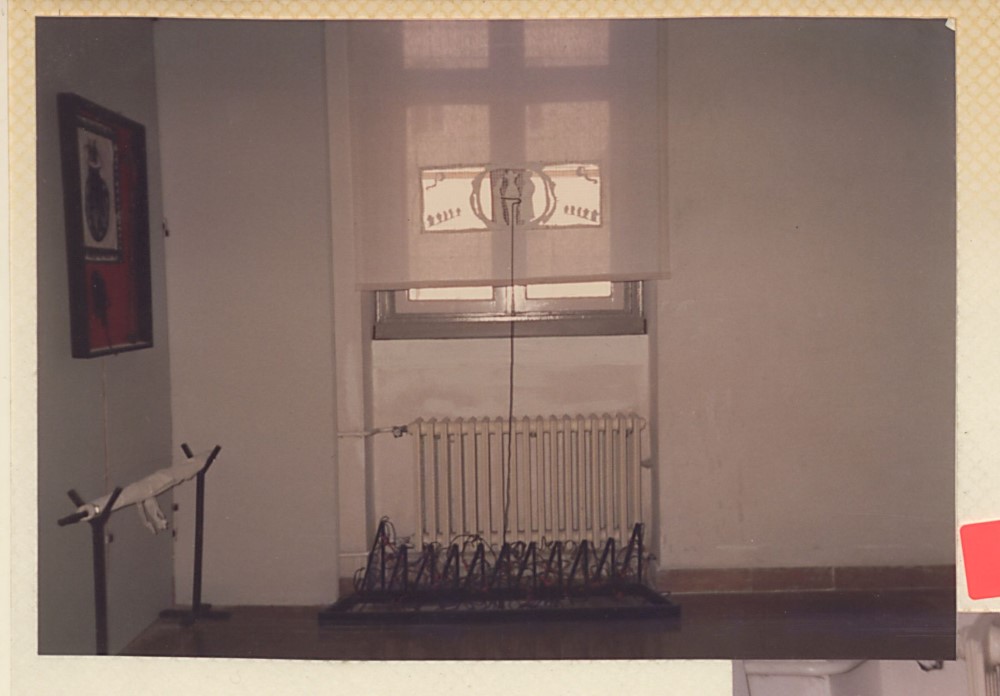
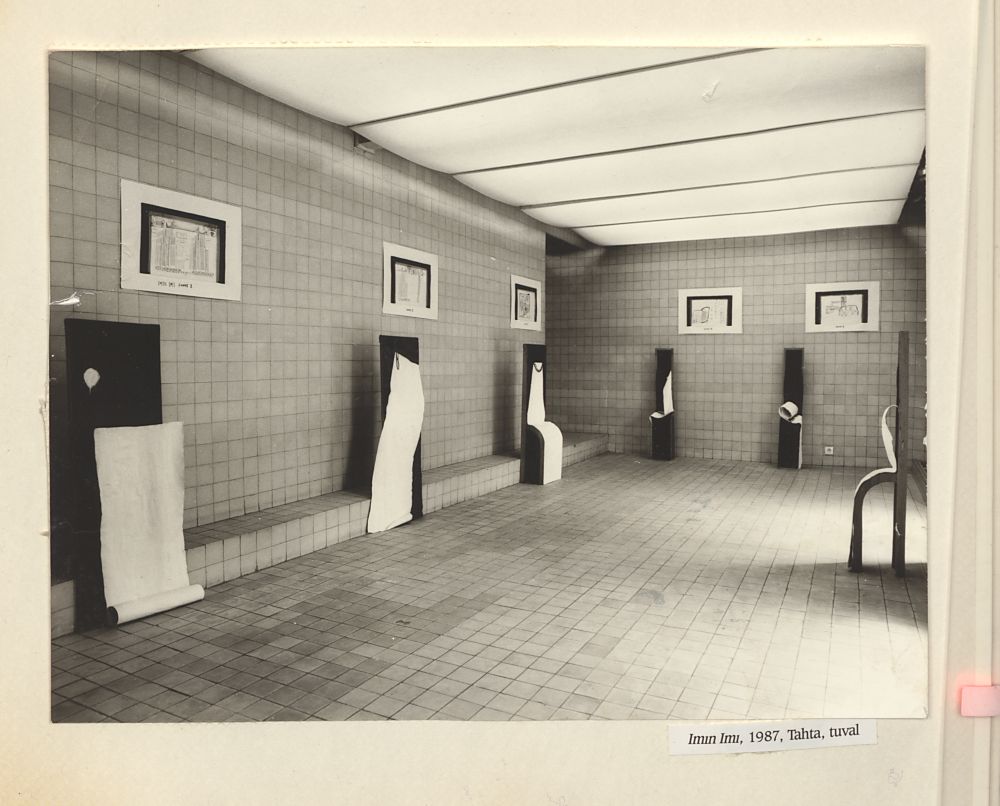
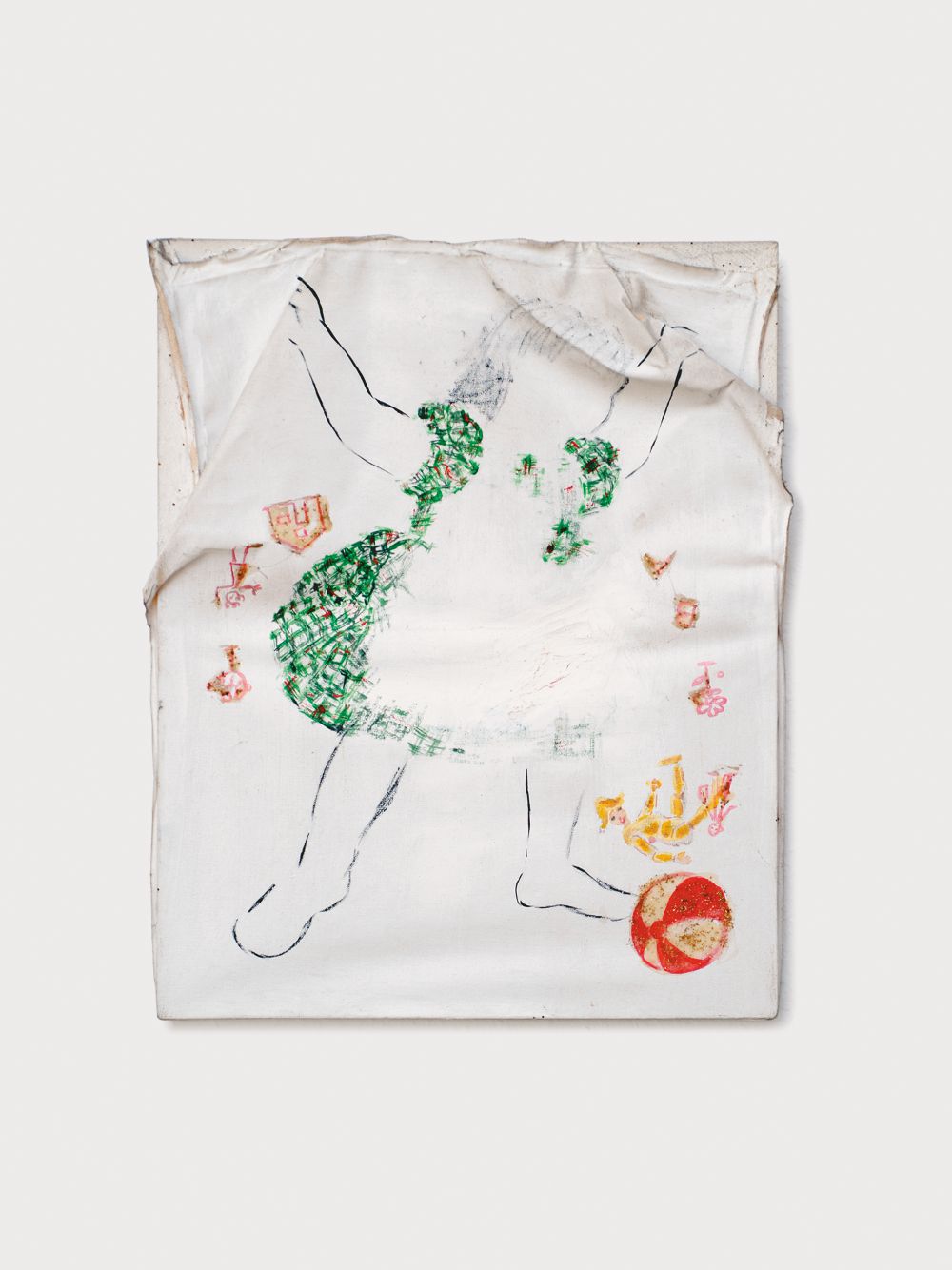
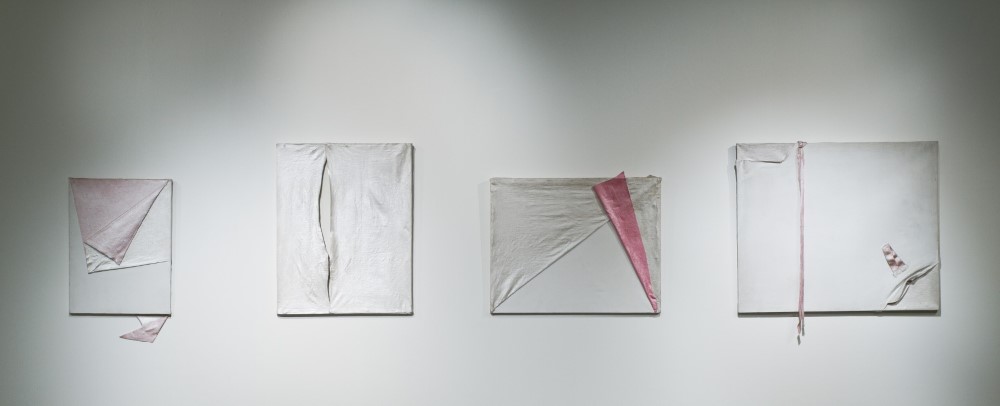

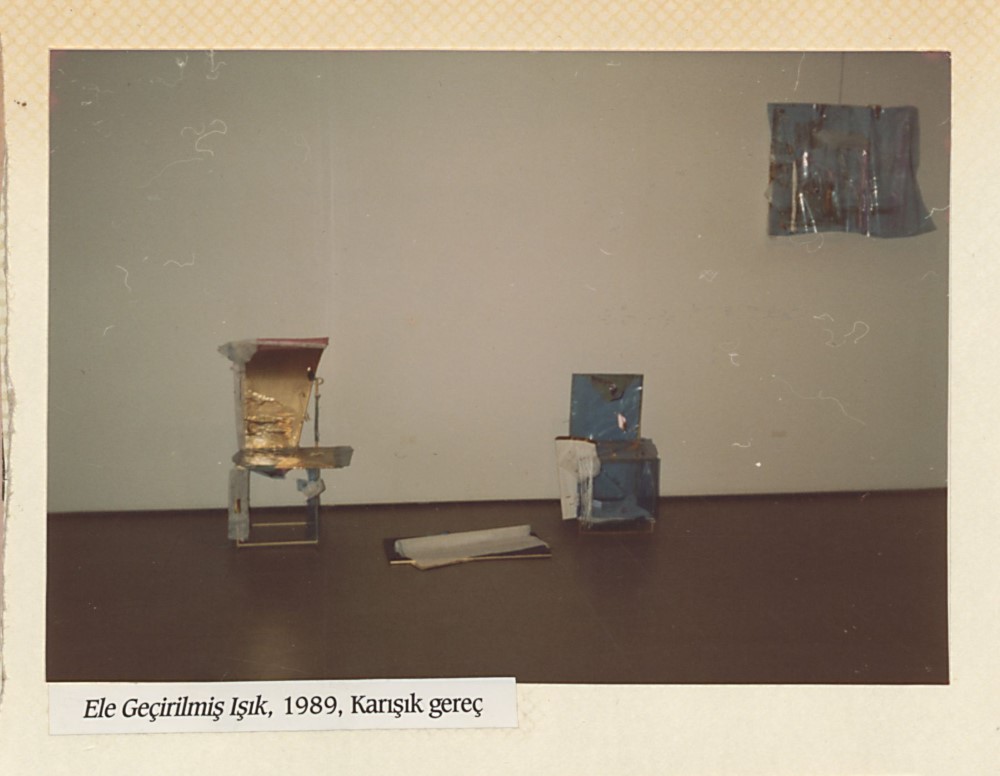
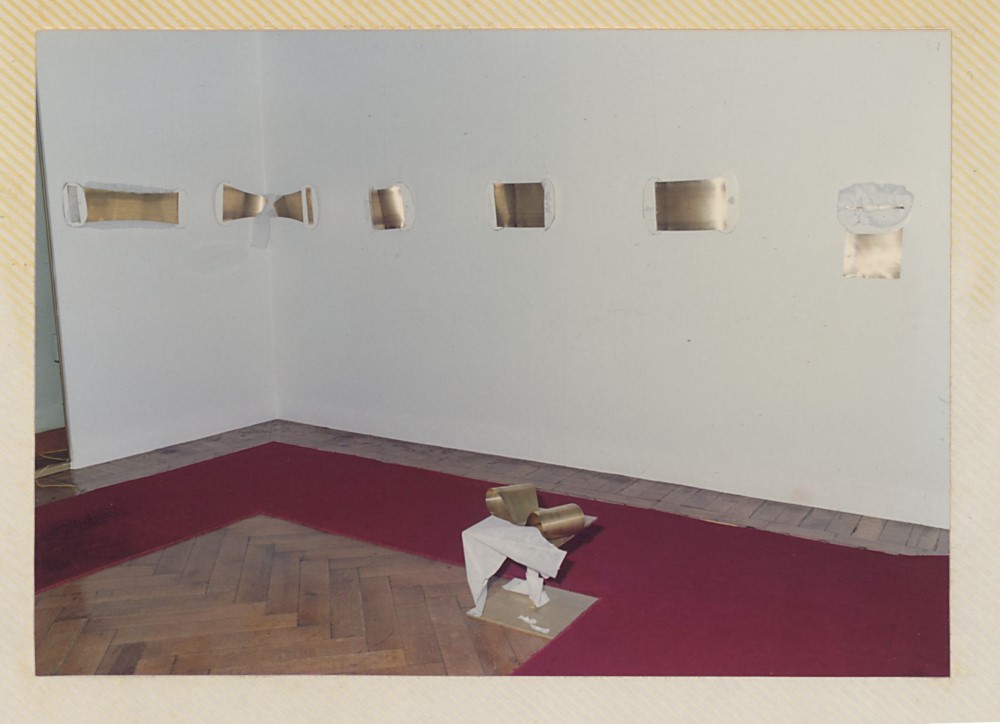
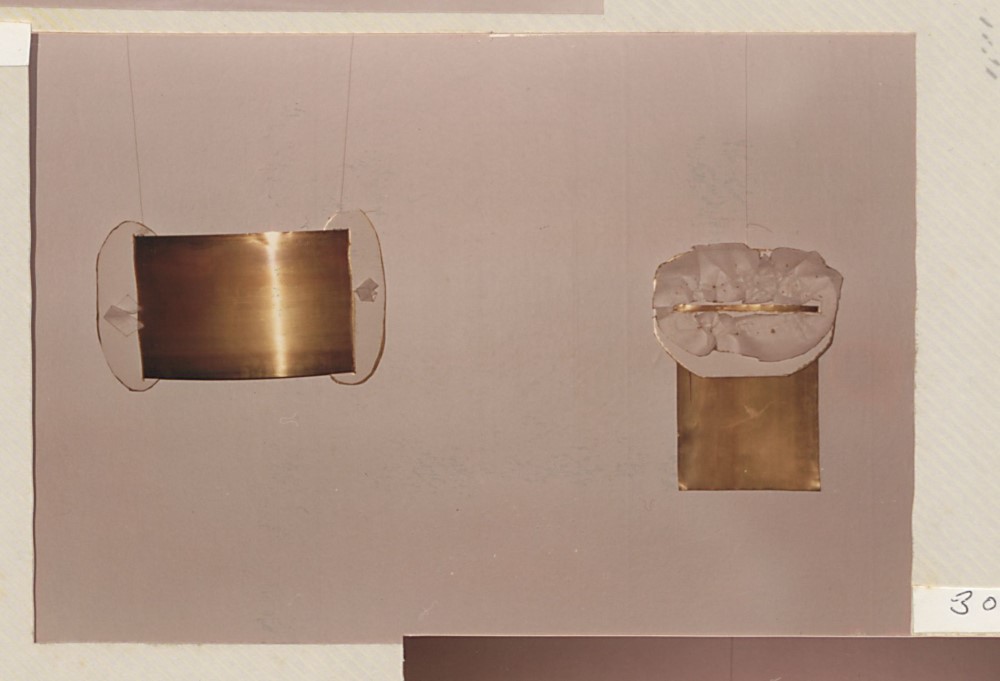
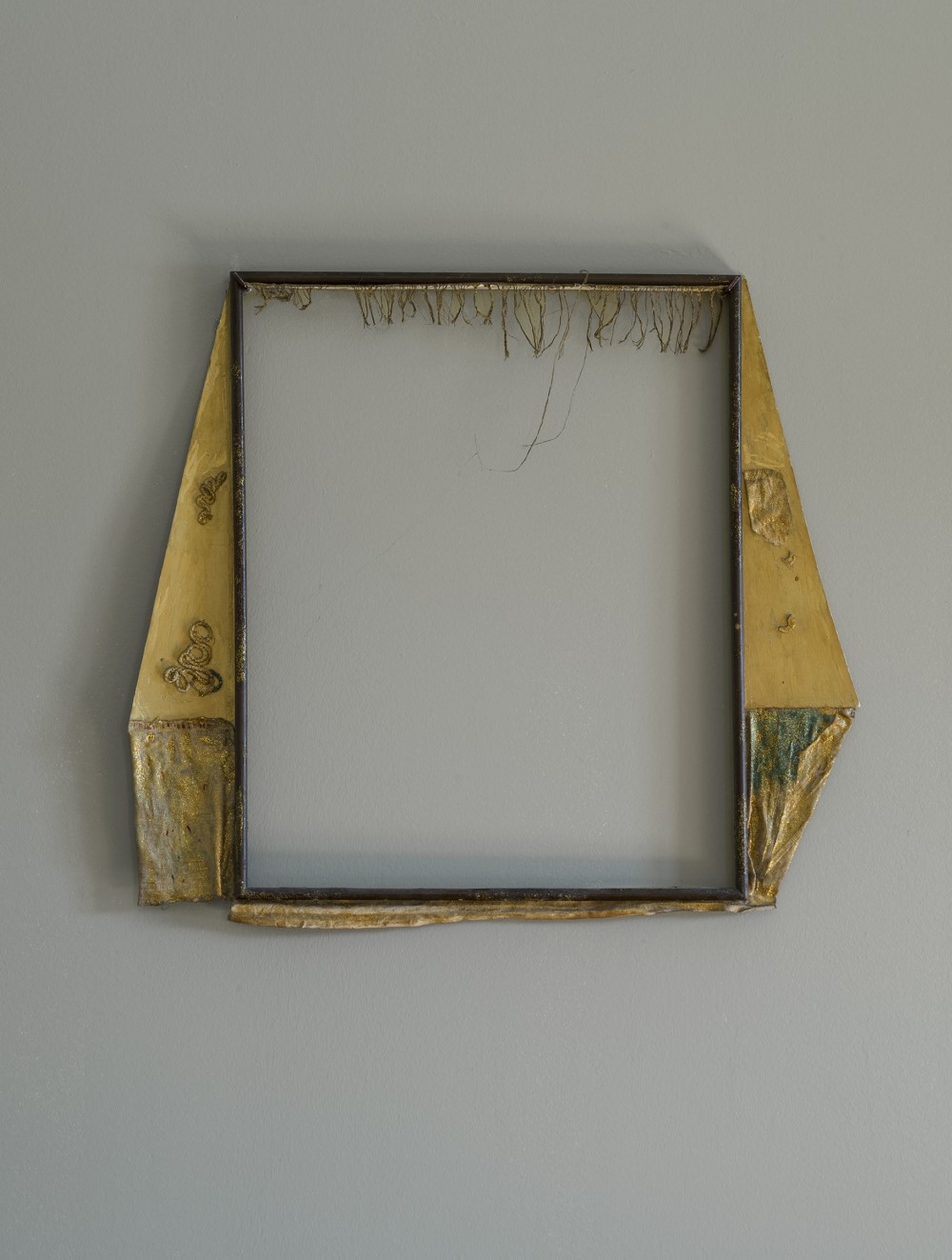
![]()
Icons of Time
by Defne Ayas
Which structures should be stripped bare to allow the possibility for broader meaning? What reductions can possibly capture the shadows of relations, hierarchies and values, as well as represent the cracks and gaps of this fragile world? What psychic and social constructs correspond to the unequal conditions of visibility and suffering? What artifacts constitute the lens of love?
In this work, one can sense how Onur probes these questions. Hers is a proposal for the experience of art as the experience of the human condition. And to express this overarching quest, she embarks on the bold pursuit of questioning what constitutes physicality, lovingly replacing cold formalism with tender poetry. She pushes the constraints of form, masterfully assembling organic materials in an ecology of intimacy and care. As such, in Icons of Time (1990), she creates an achingly beautiful work in a timeless dialogue with light and space. In a curative to the weariness of it all, exploring and exposing the strained nature of our dance around the question of life, she reminds us of the outdated abstractions that we humans have become.
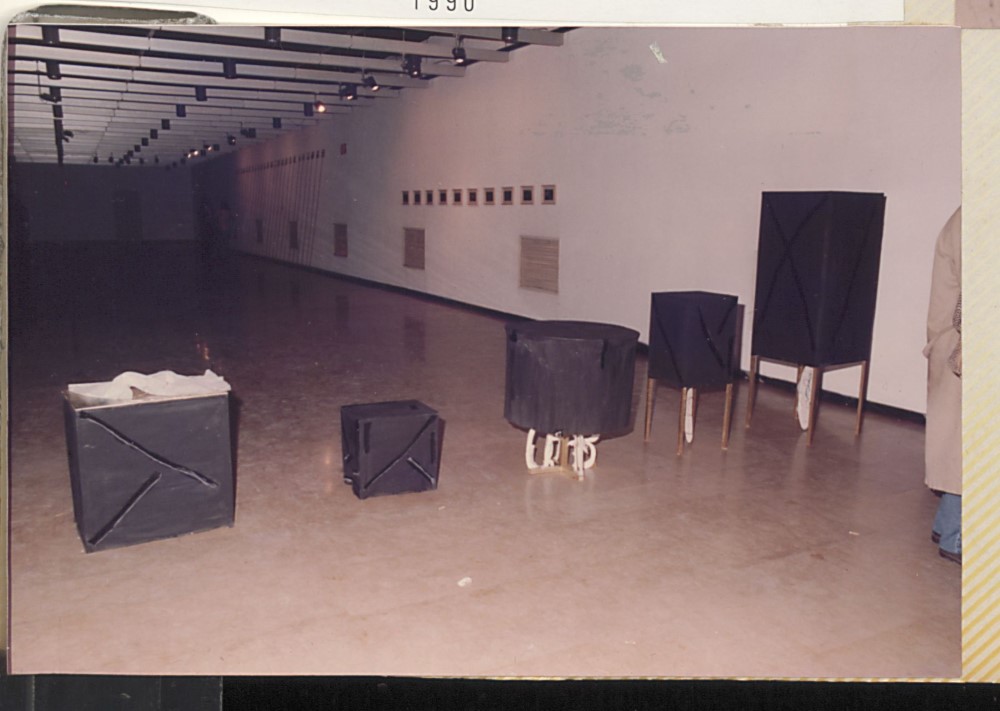
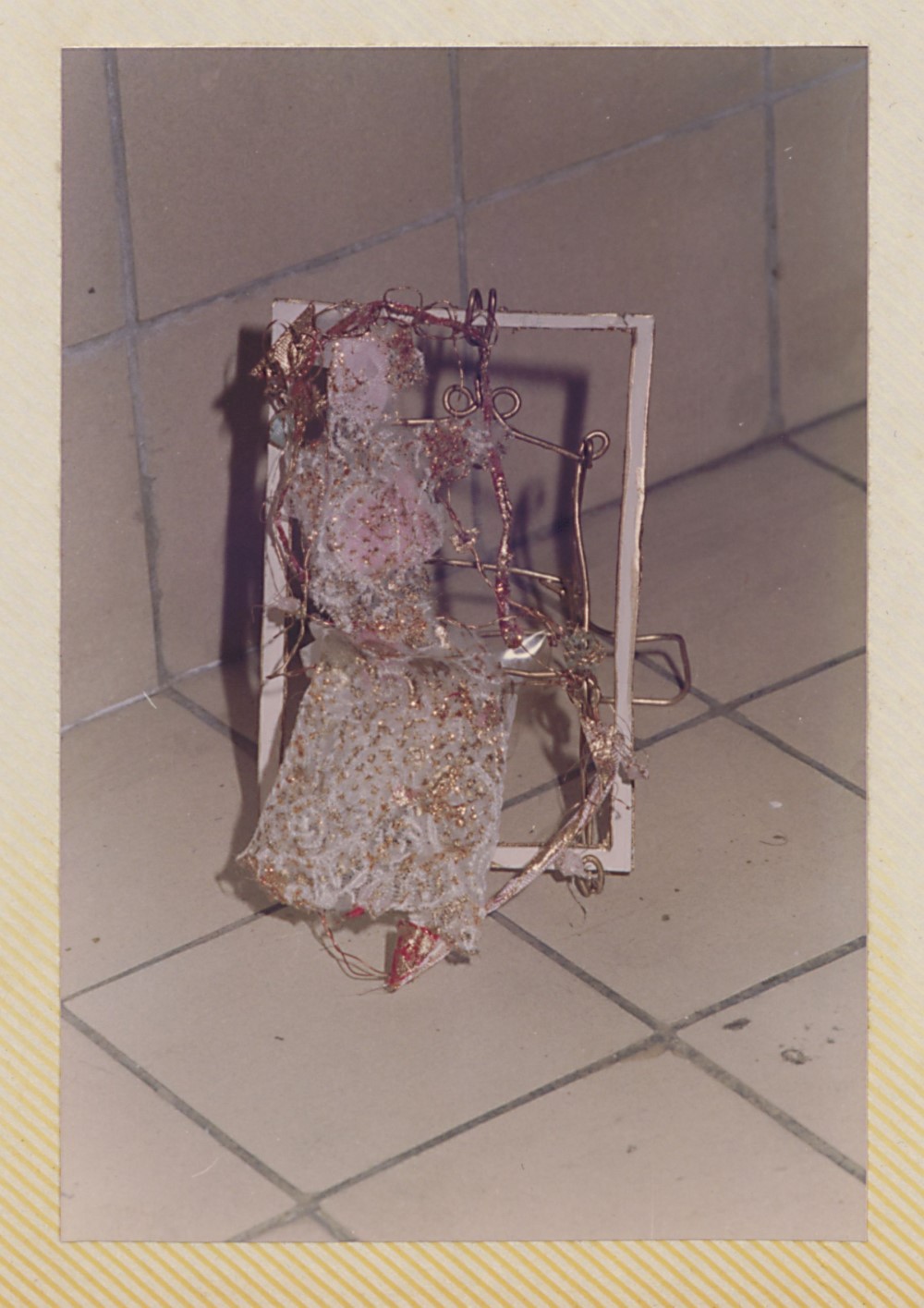
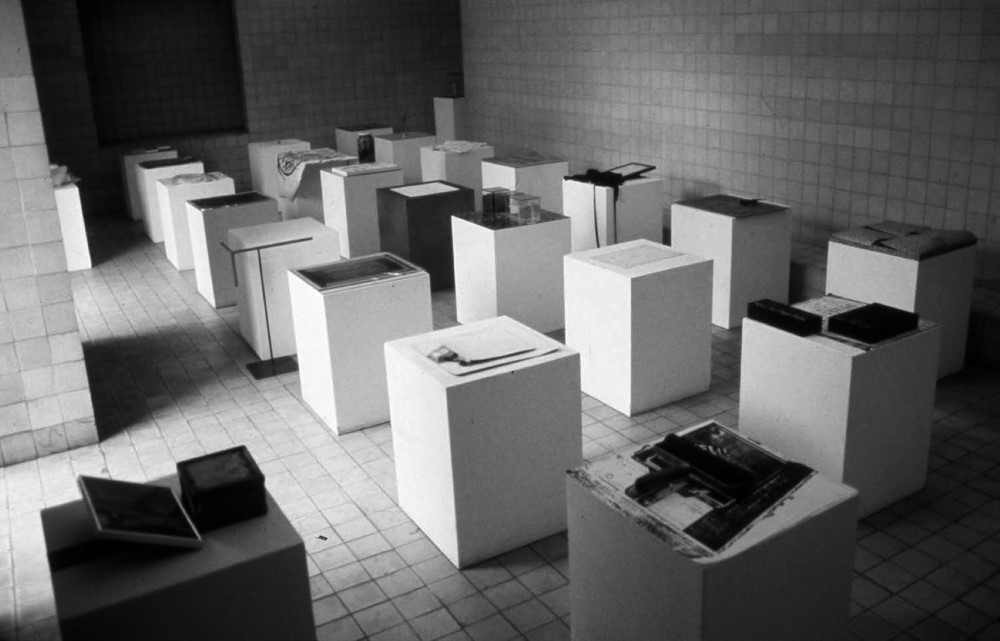
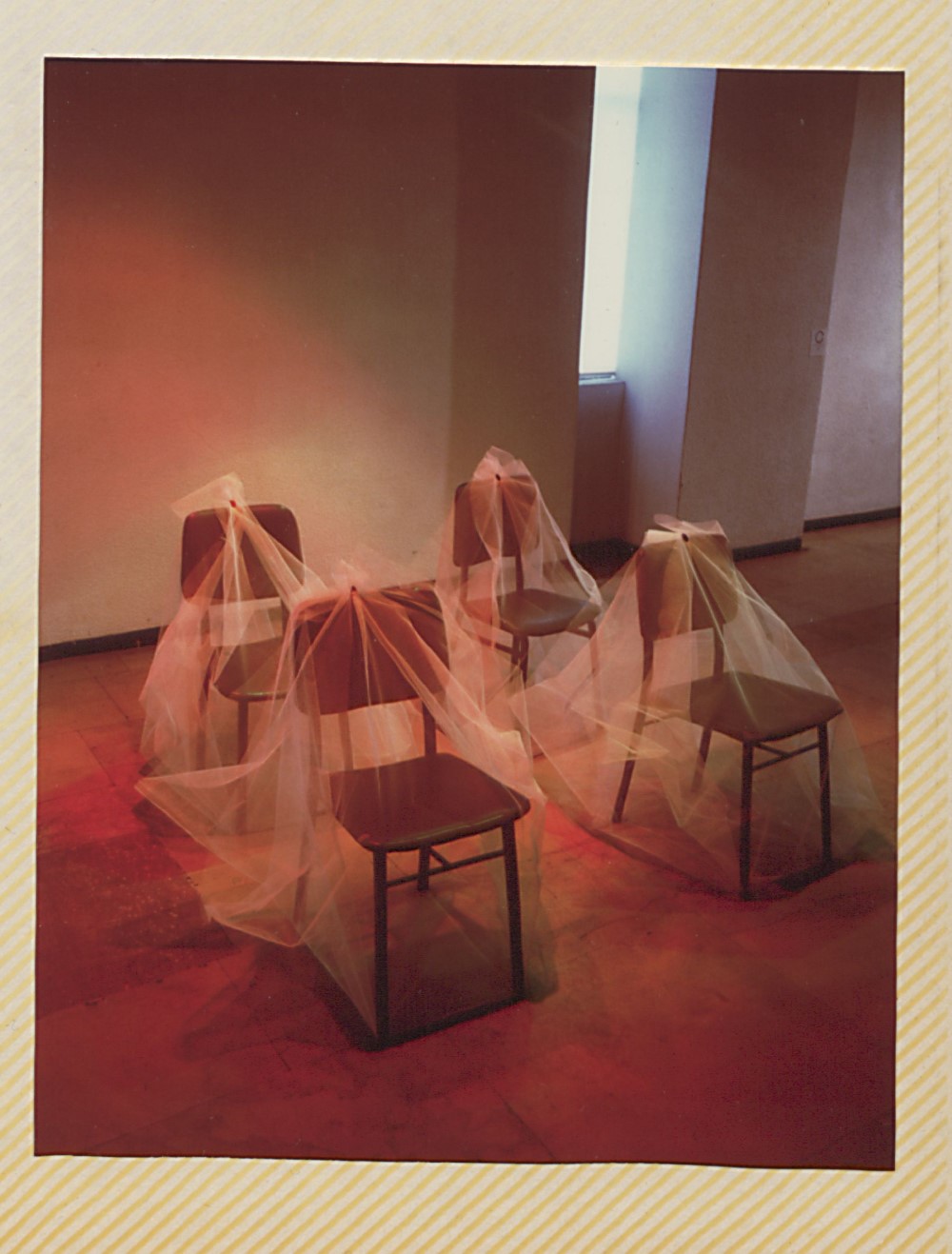
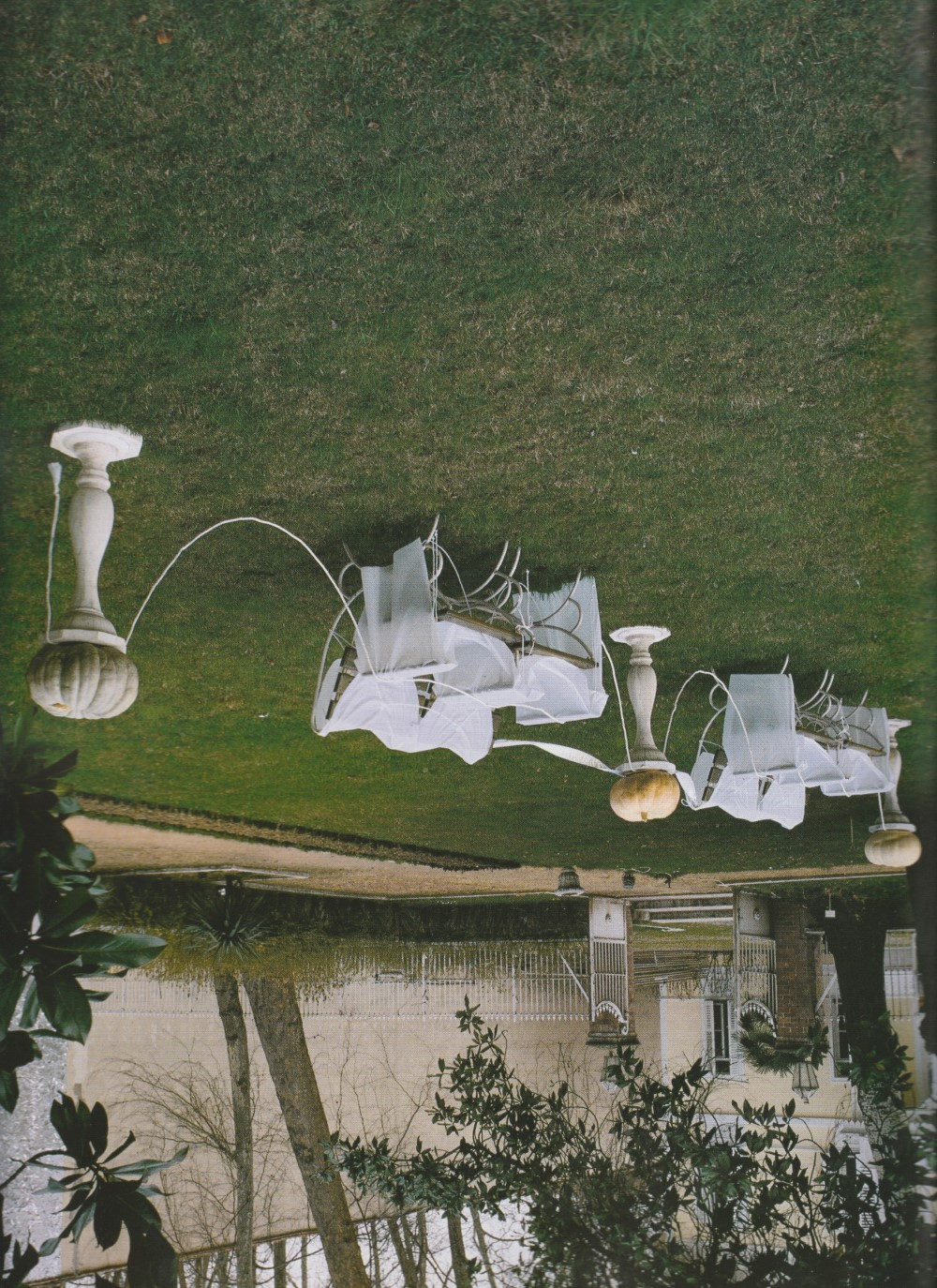
_.jpg)
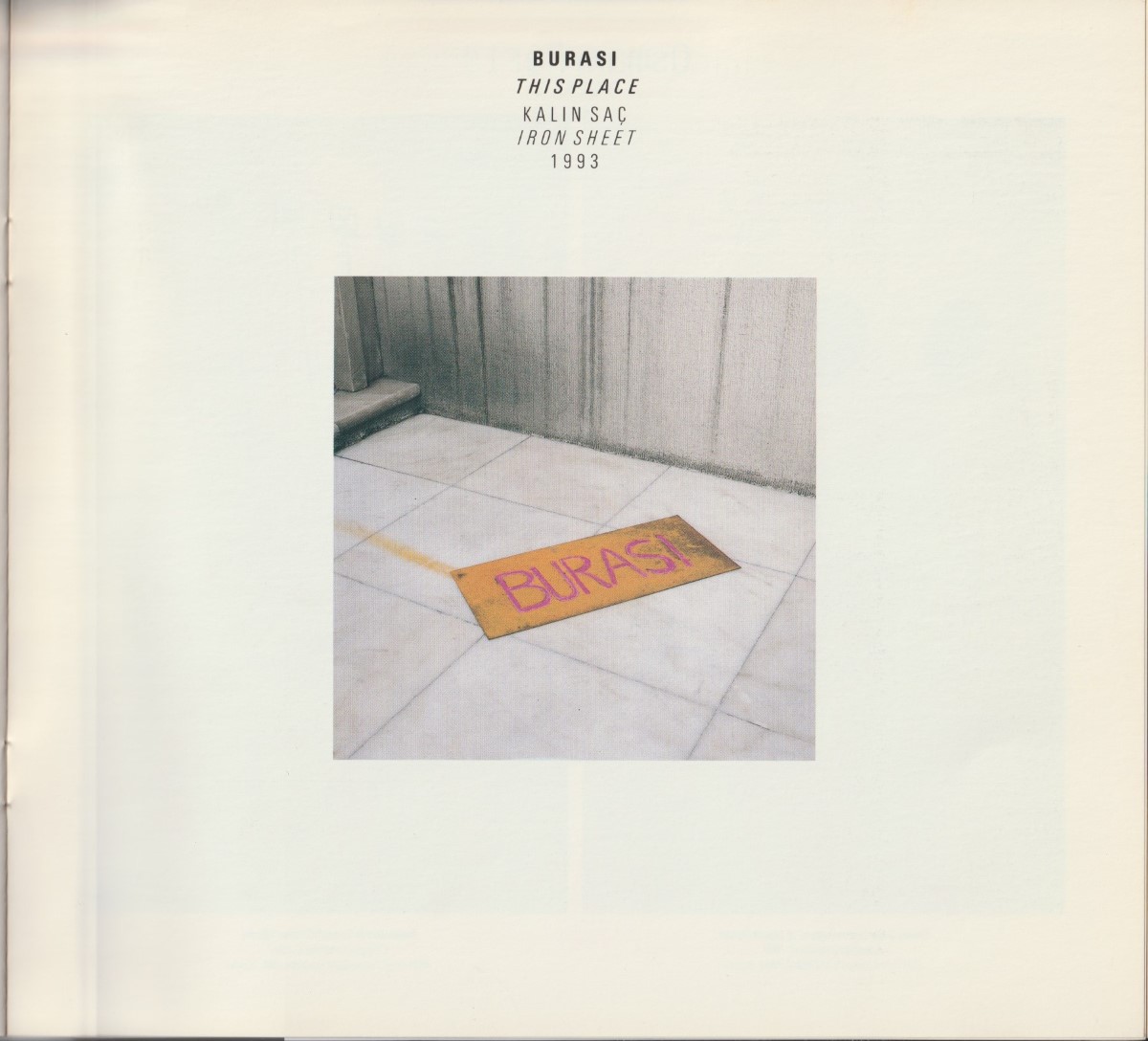
This Place
by Kevser Güler
Füsun Onur produced This Place in 1993 for the fourth and last of the group exhibitions A, B, C, D held from 1989–93. The exhibition, whose full title was 10 Artists 10 Works: D (1993) was realised in three different locations on Mim Kemal Öke Street in Maçka: No. 9 and No. 23, the site of the furniture shop Koleksiyon Mobilya, and No. 31, which hosts the Maçka Art Gallery. By distancing themselves from the use of traditional techniques and materials, the artists in the D edition of the exhibition series aimed to open a space for the then contemporary modes of production and expression such as installation, conceptual art and object art. In This Place, Onur explores the relationship of installation art with space. According to her, an installation is site-specific and proposes a spatial and temporal encounter that is possible only in the here and now. The work, which consists of a rusty metal plate with the word BURASI (THIS PLACE) written on it in red paint, questions the politics of sculpture’s traditional vertical relationship with space, highlighting its dialogue with the horizontal and existential conditions of space. Onur exhibited This Place, like a doormat, outside the store at No. 23. Here, it simultaneously points at Maçka, at Istanbul and at Turkey in the early 1990s, one of the dark periods of it history, and announces: ‘This is the place you have been searching for!’ The red paint also recalls the political graffiti of this period, marked by a violent crackdown on public space. By placing her writing on the floor rather than the wall, however, Onur transforms the image of propaganda into an image of bearing witness, of claiming responsibility and of action. The place where the subject, the action, the space and time can be reorganised, she suggests, is exactly where we are standing now; it is precisely ‘this place.’
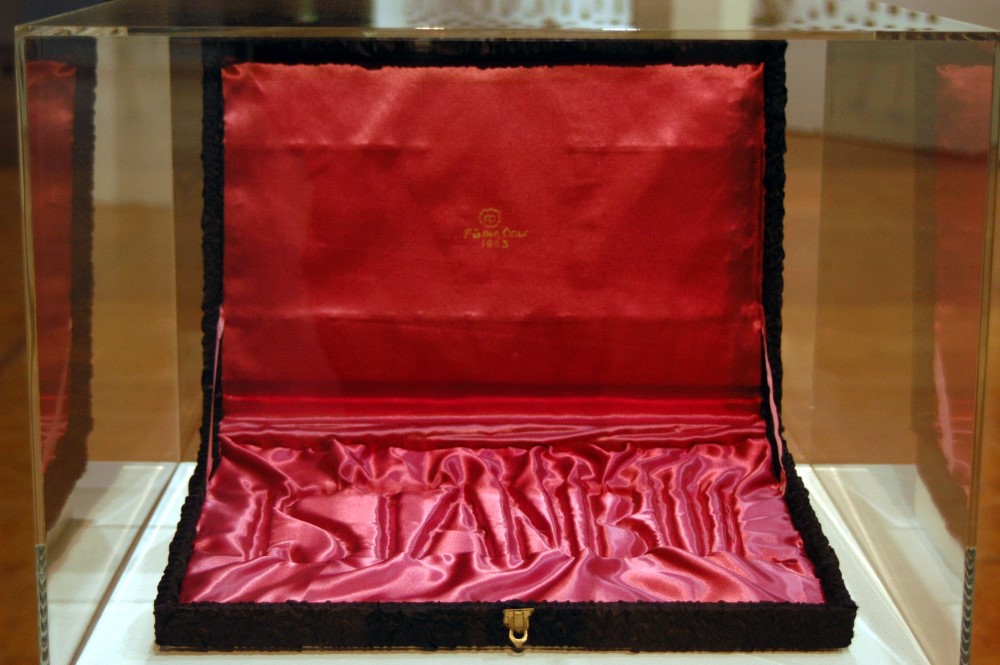
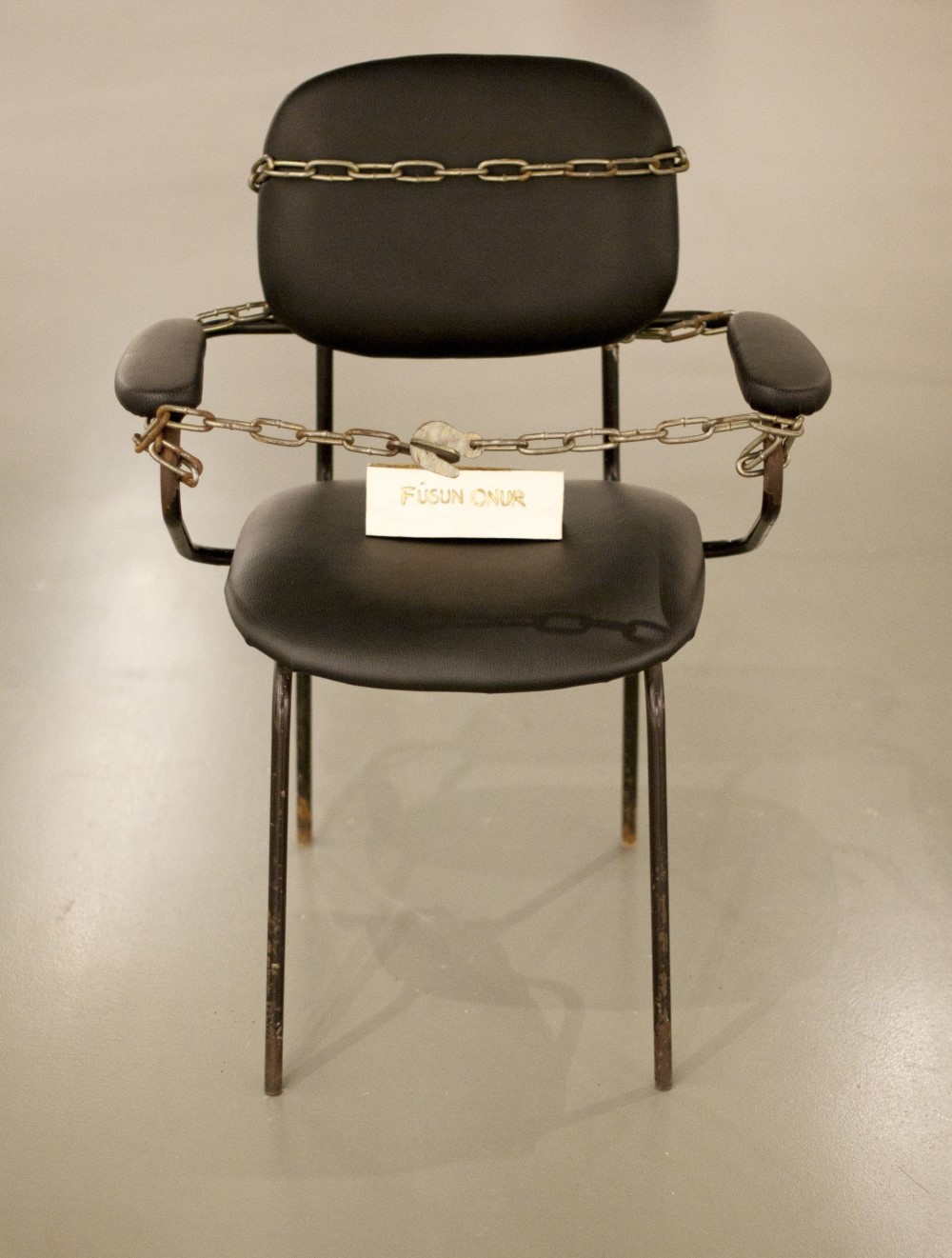
_PinkBoat.jpg)
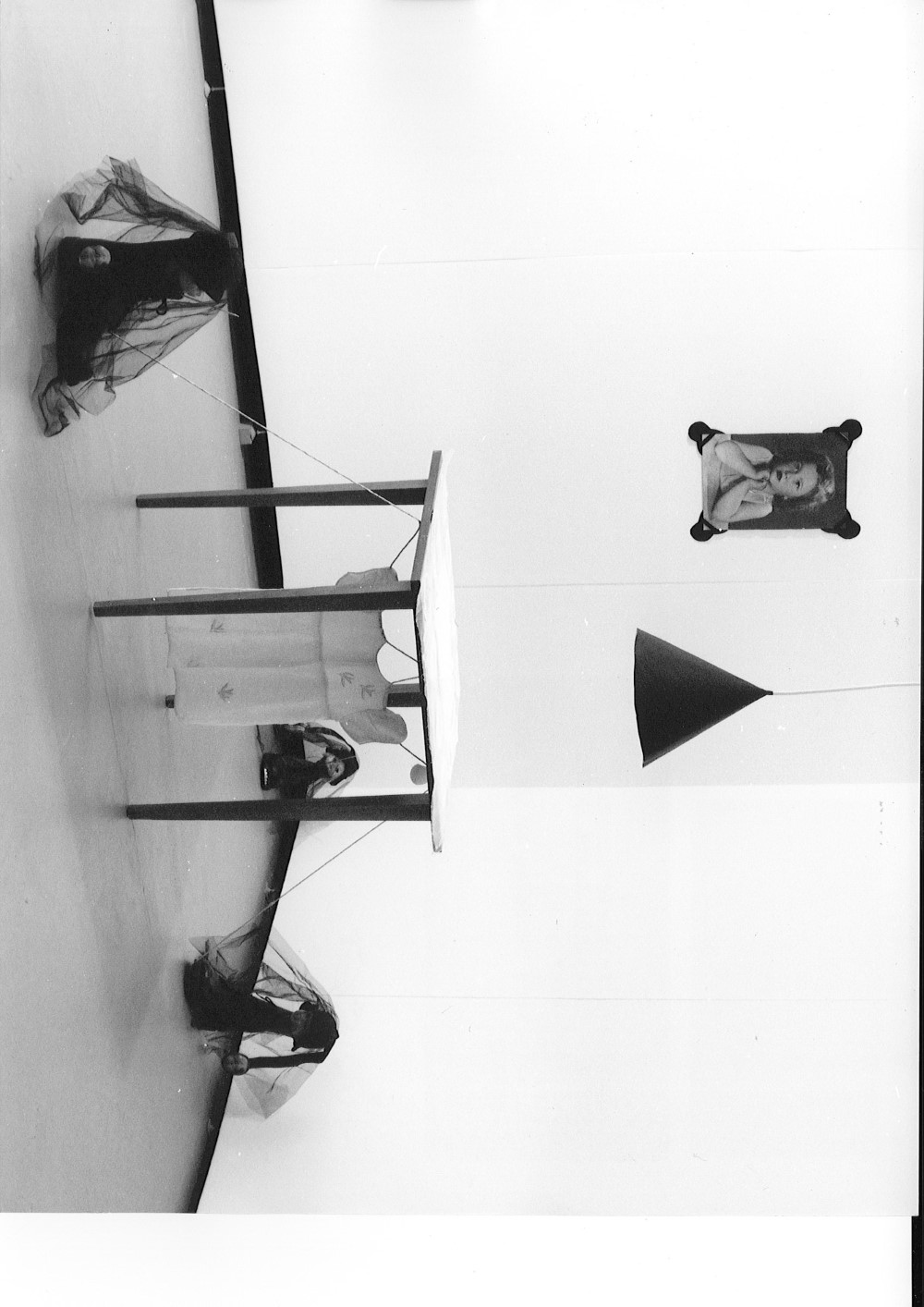
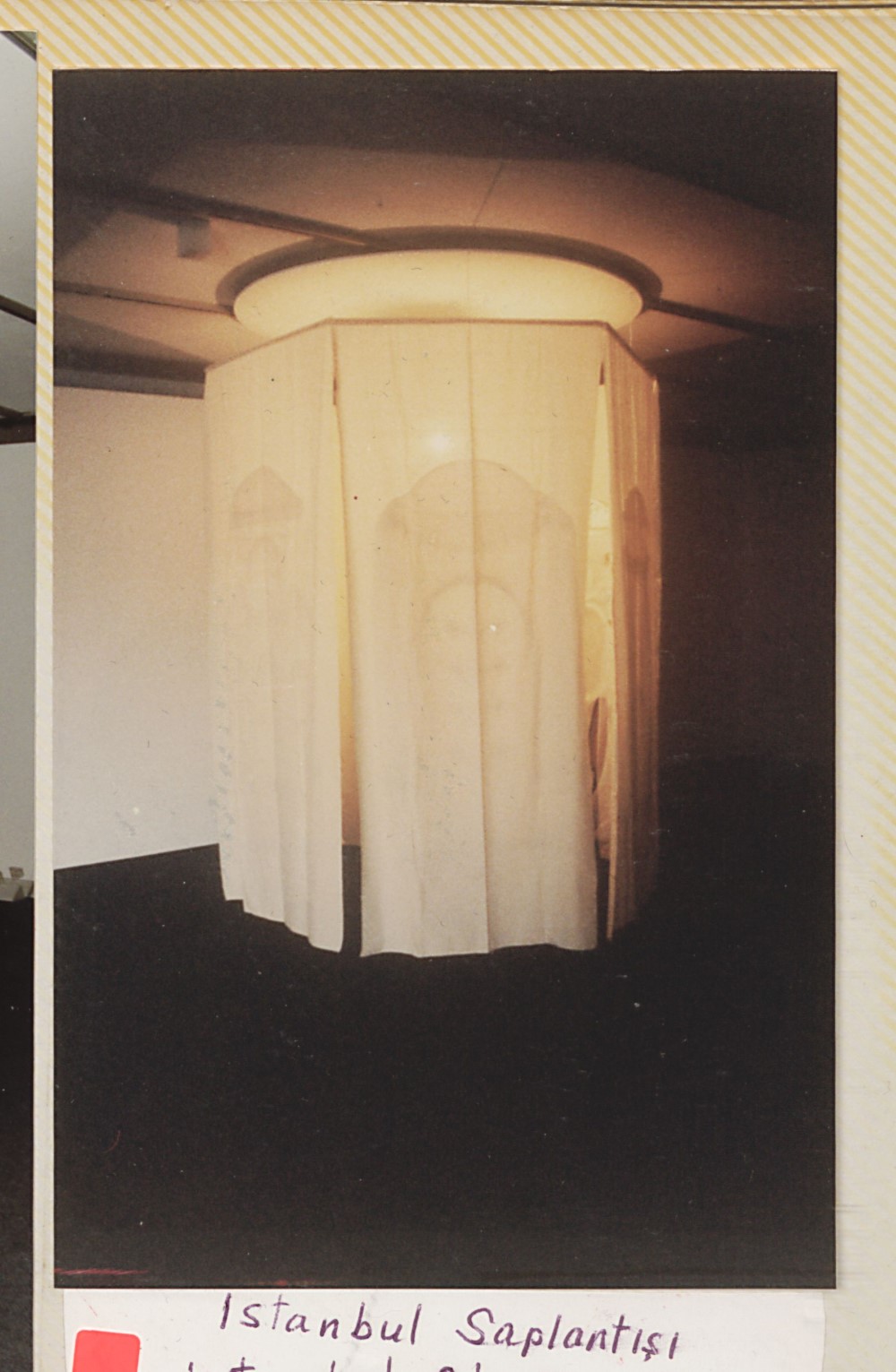
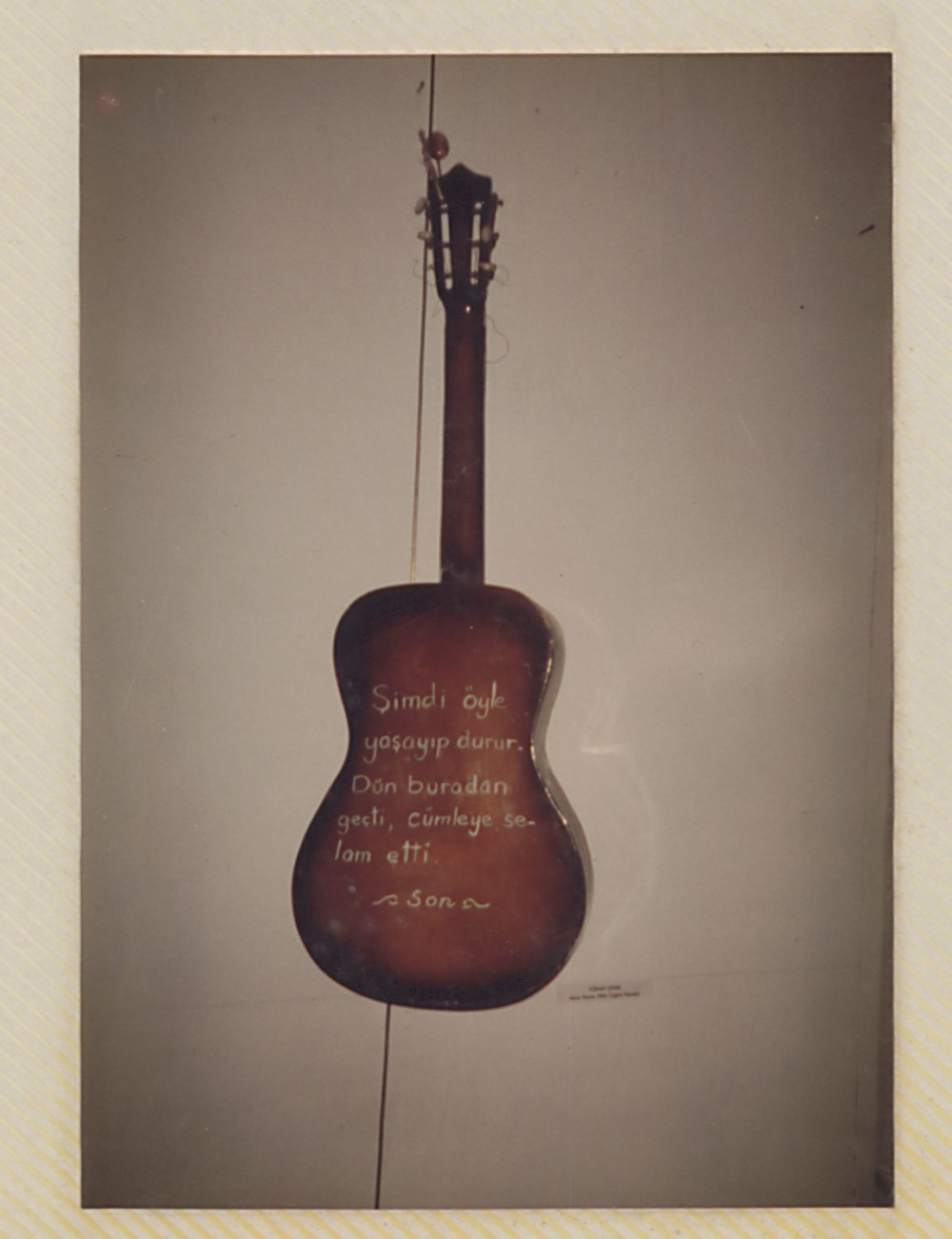
The Dream of a Current
by Hera Büyüktaşcıyan
A flighty line advancing according to its own undulating rhythm reconstructs a current that has passed, drawing fragile yet imposingly flexible curves, suspended in purgatory between earth and sky.
This line that unites the visible and the invisible eternalises the moment between the water’s contact with the body and its evaporation, and categorically transforms the tangible and intangible borders of the venue, once a hammam, through the abstract language it builds.
The formal components of Those Who Have Washed Here (1994) have a temporary physicality, yet with its linear structure it is also a mediator that traces the invisible. Like washing and purifying, the perpetual act of erasing and redrawing creates an intertemporal space, opening up the form and the venue with a movement from the inside out.
By transforming semi-visible, ephemeral objects, Füsun Onur brings into being once again the spirit of the water fused into the heavens of the venue in the moment of purification. Thus, with the projection of this current that defies gravity, she determines the linear and intuitive kinetic effects of water on no longer existent bodies. By activating an unfinished dream with the notation of the crystals and the refined curves of this blue tulle that preserves the time within, she virtually recalls the stagnant history of the venue.
The confluence of the blue tulle and crystals fastened on the wall with golden chains induces their serene silences to speak. Like the symphonic echo of an audible silence touching constantly flowing time, it starts at an unexpected place, glides through the venue and fades away, blending into space.
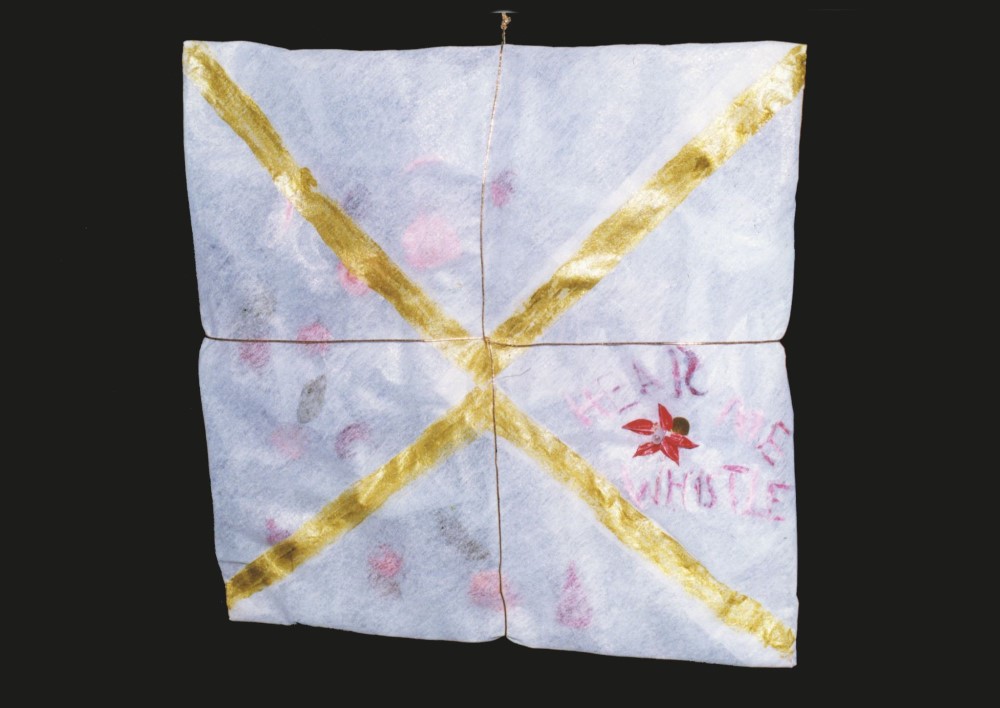
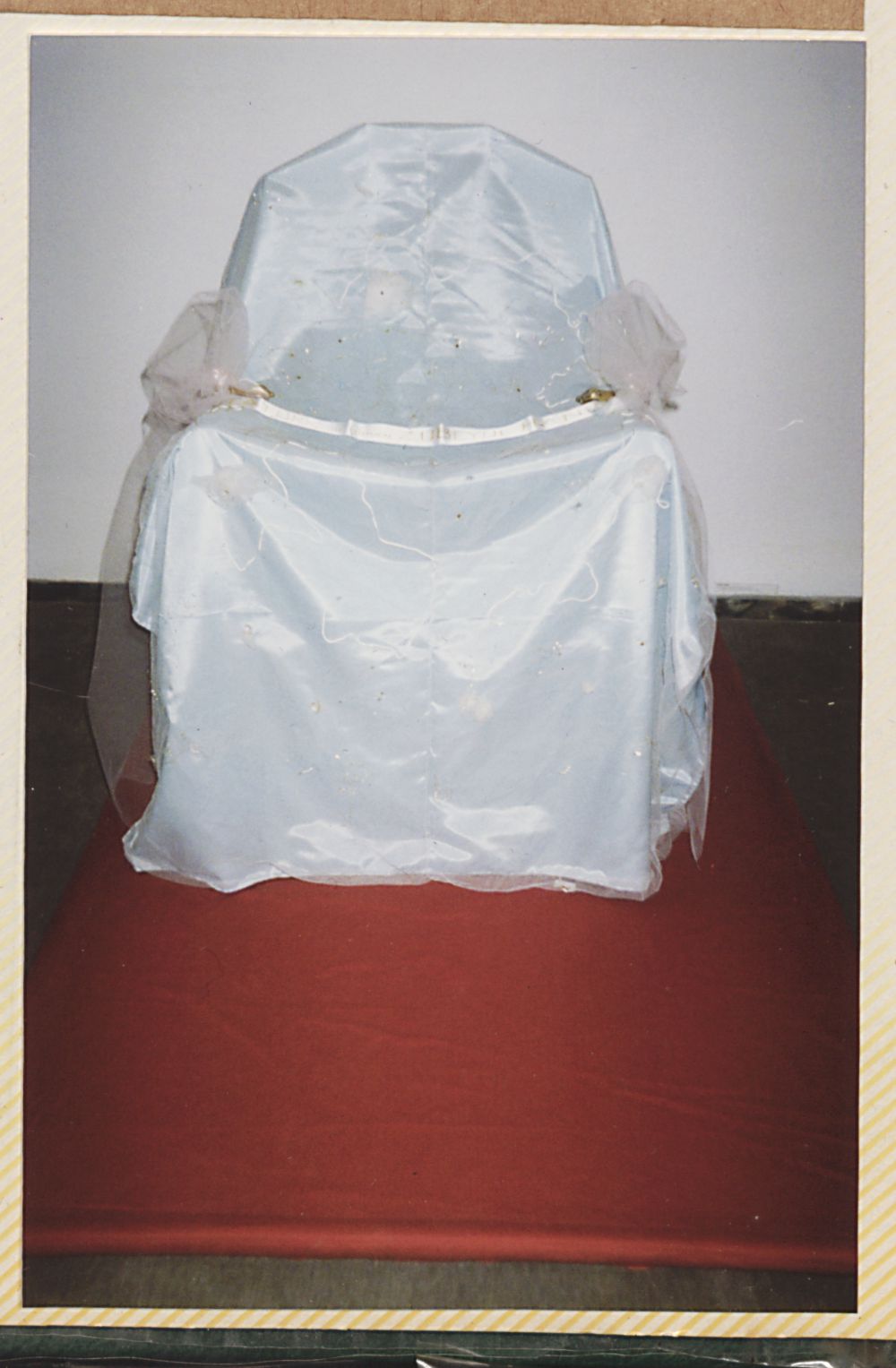
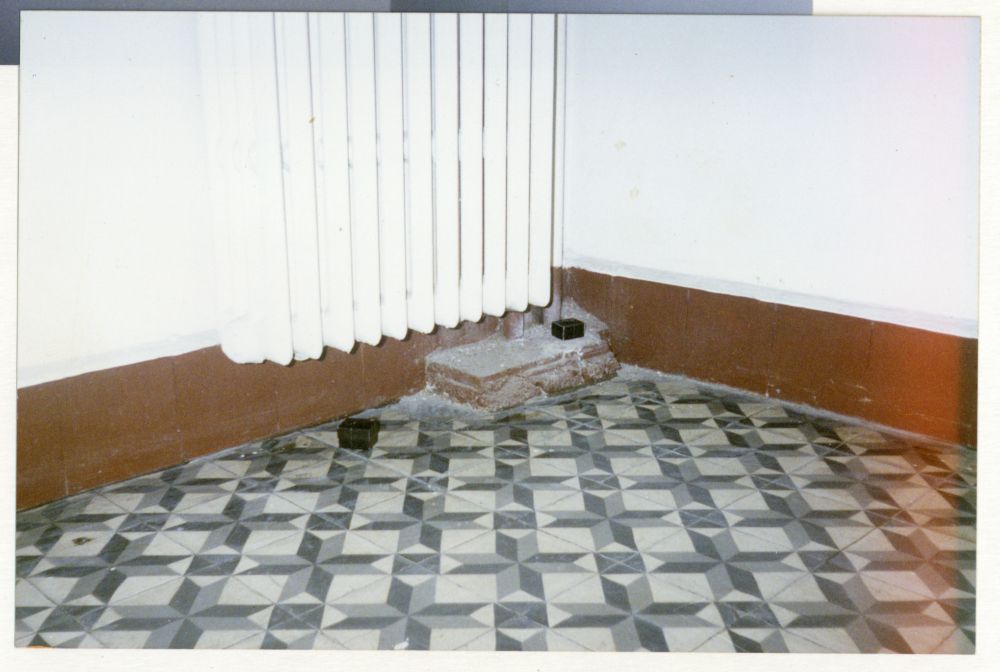
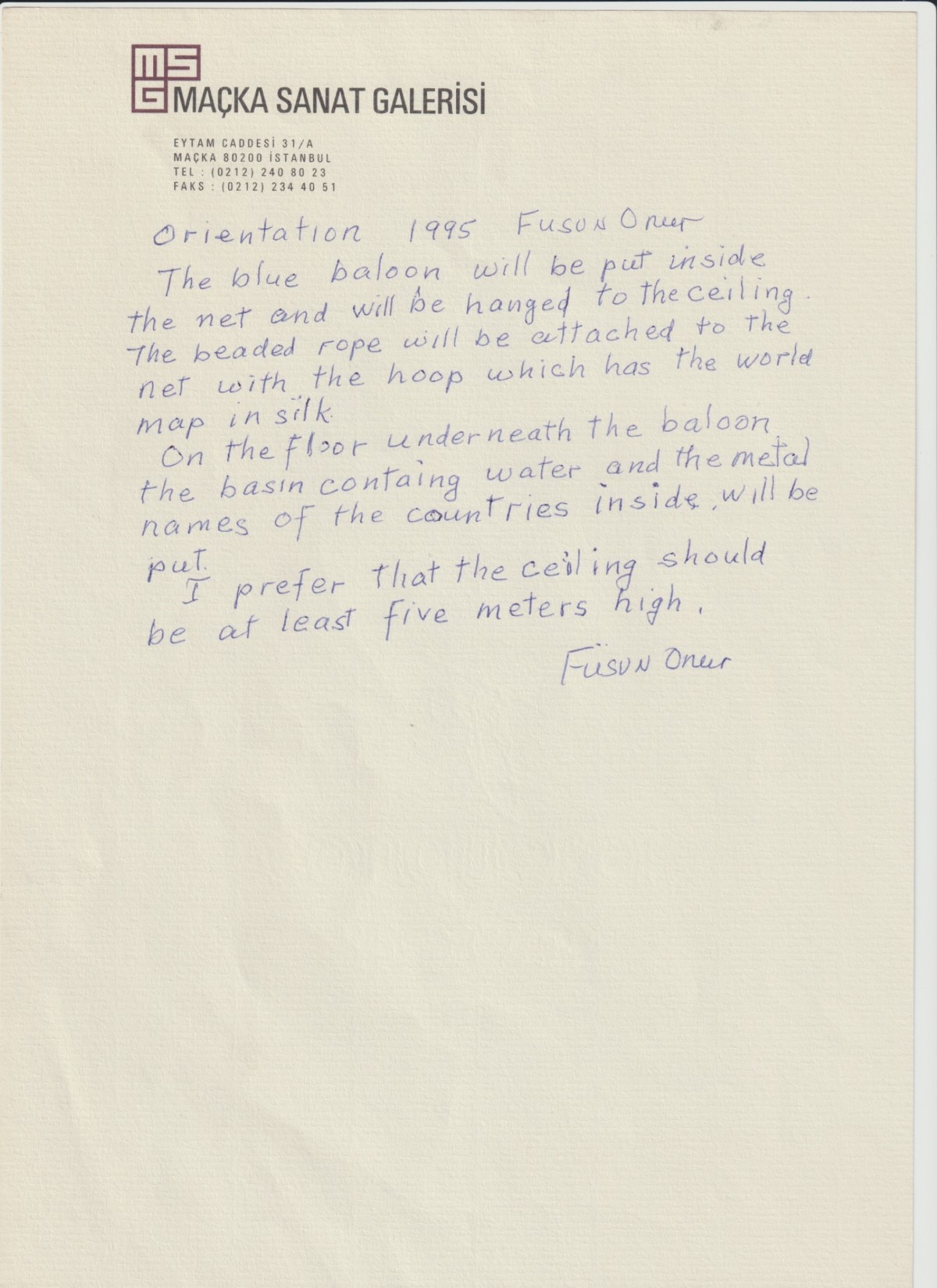
Then and Now
by Gregory Volk
Füsun Onur made her renowned installation Let’s Meet at the Orient (1995) for the visionary 4th Istanbul
Biennial, ORIENT/ATION, curated by René Block, where it was exhibited in the impressive Hagia Irene, an Eastern Orthodox church that dates to the fourth century. This ‘elemental and utopian’ (Onur’s term) work is as meaningful now as it was back then – perhaps even more so.
A sizable blue rubber balloon hanging overhead in a beaded net suggests a solitary party decoration, but also Earth seen from space – our gorgeous blue planet floating in the universe. Onur excels at imbuing commonplace objects and materials with driving ideas, and at giving them surprising connotations. An embroidery hoop dangles below; draped over it is a somewhat ragged silk swath, shaped like all the continents but without countries and borders – perhaps Earth as it was 200 million years ago before humans. It is the artist’s vision of a holistic world that has transcended virulent nationalism and endless conflicts. On the floor is a copper washtub filled with water. In raised brass letters on its bottom are the names of countries, as if they’ve fallen here to be cleansed.
Deftly combining diverse objects into an enthralling whole, Onur’s installation hints at huge world-shaping forces, including the formation of continents; domestic activities like washing and embroidery; the divisions and borders that we, as humans, have imposed on the world, and what it might be like to be freed from them. Her installation of twenty-seven years ago is still uncannily relevant now, with a pandemic requiring global cooperation, not antagonism and strife.
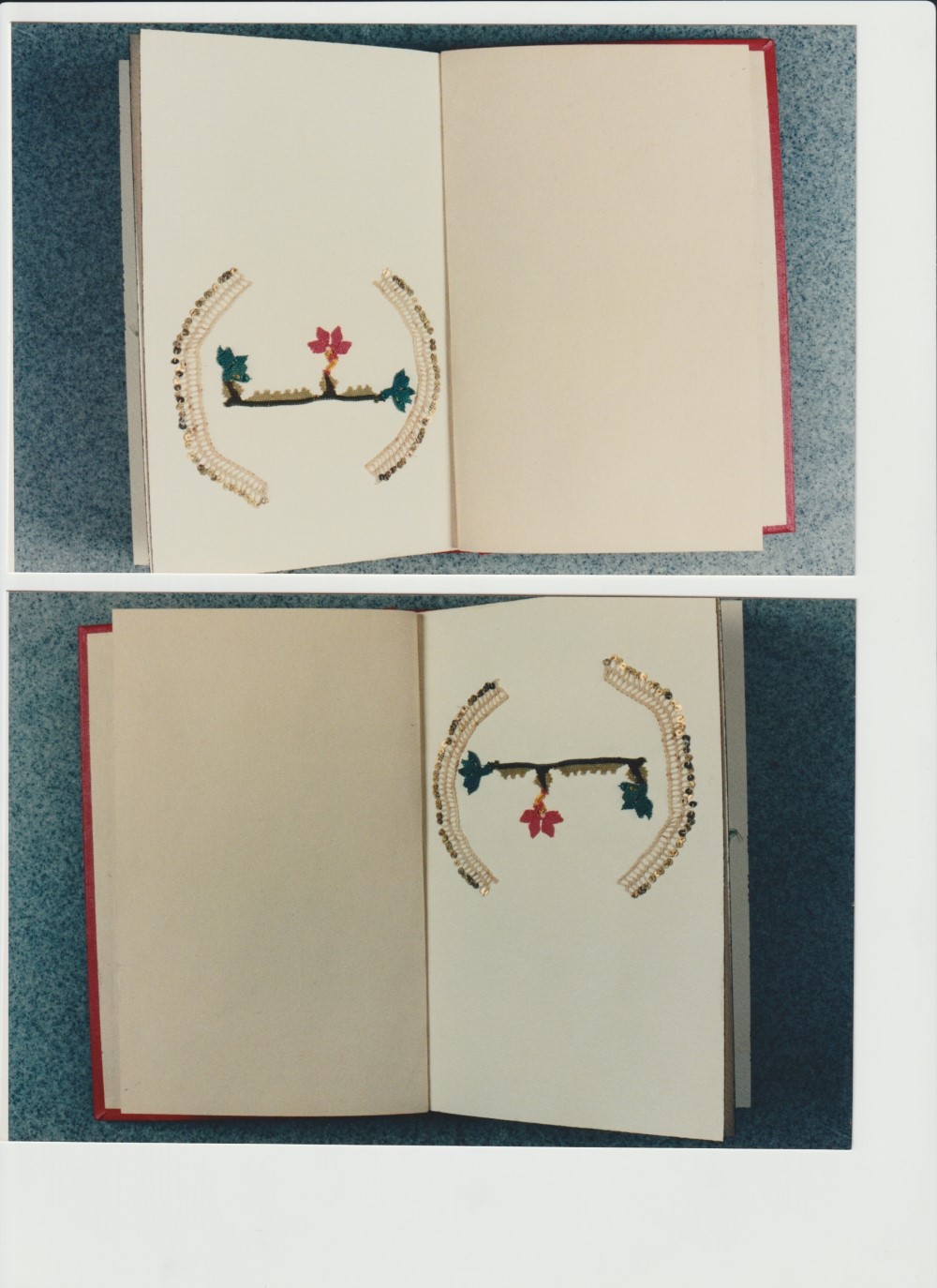
An Interdisciplinary Lesson
by Leyla Gediz
Cadence (1995) has left reflections in my mind like the shards of a shattered mirror. When it caught my eye in the 1990s, my twenty-year old self could see that it was no cute or playful work, but nor was it a stern critique of the institution. The artist had pinned a note to the work, saying that she wished us to ‘hear’ it.
I remember trying to solve the work’s relationship with its title. Perhaps the romantic connotations of the word were equivalent to the pieces of tulle, illuminated with a theatrical colour, gently covering the freestanding ashtray. There was a tension between the wooden stools of the art gallery, and the metal rods reclining on them – the mechanisms used for hanging paintings. One could hardly say that Onur took pleasure from the plain gallery stools. They simply served as a sort of pedestal, just as the tiled gallery space resembling a checkered page constituted a background. The focal point was the picture hanging rods and their hooks.
Cadence deconstructed and alienated these mechanisms for the display of paintings to such an extent that they no longer contributed anything. So was the word ‘cadence,’ which means the close of a musical phrase, alluding to the death of painting? I think not. Onur’s issue is not with painting, but with the elements that discipline it. It is difficult for the painting to breathe in such formal conditions. The fact that this critique came from a sculptor and not a painter indicates that profound lessons for painters are hidden in fields like sculpture, dance, music, theatre and film.
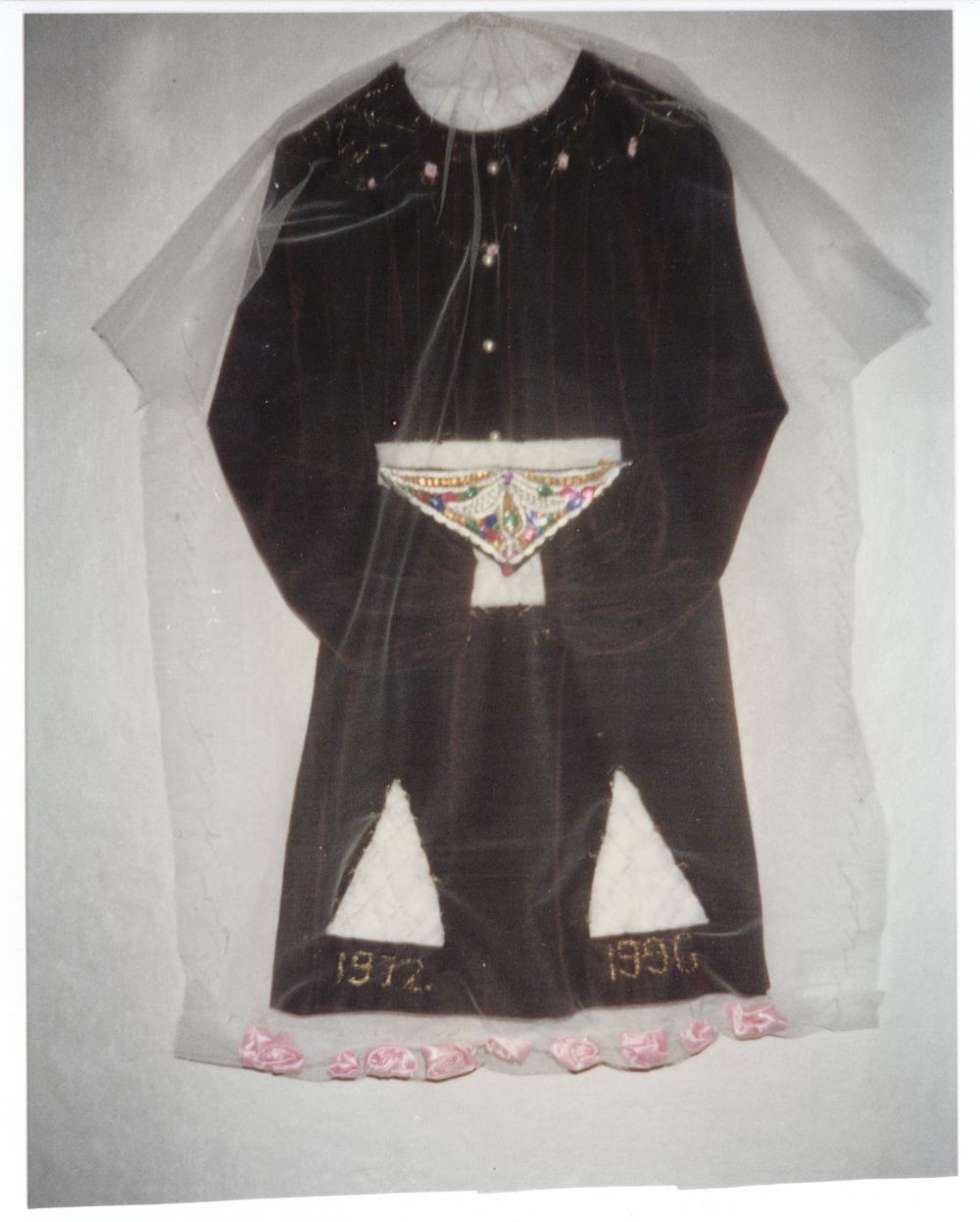
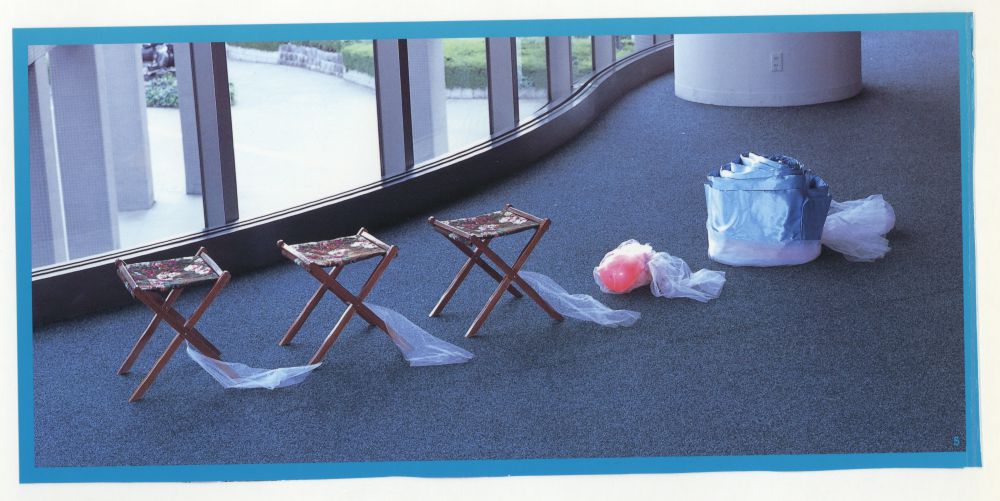
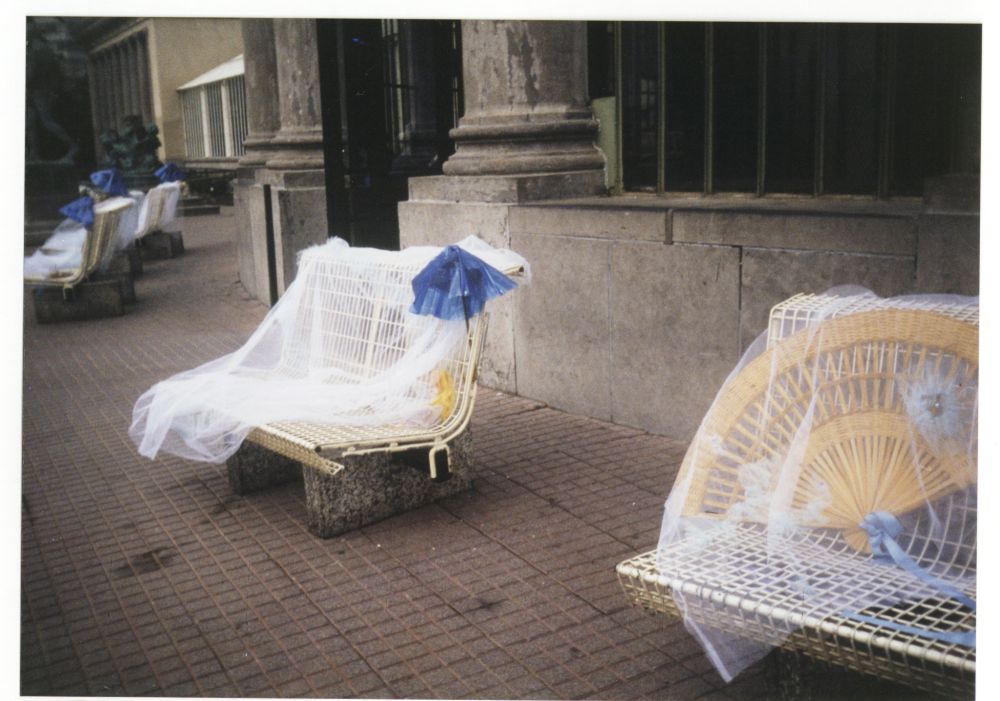
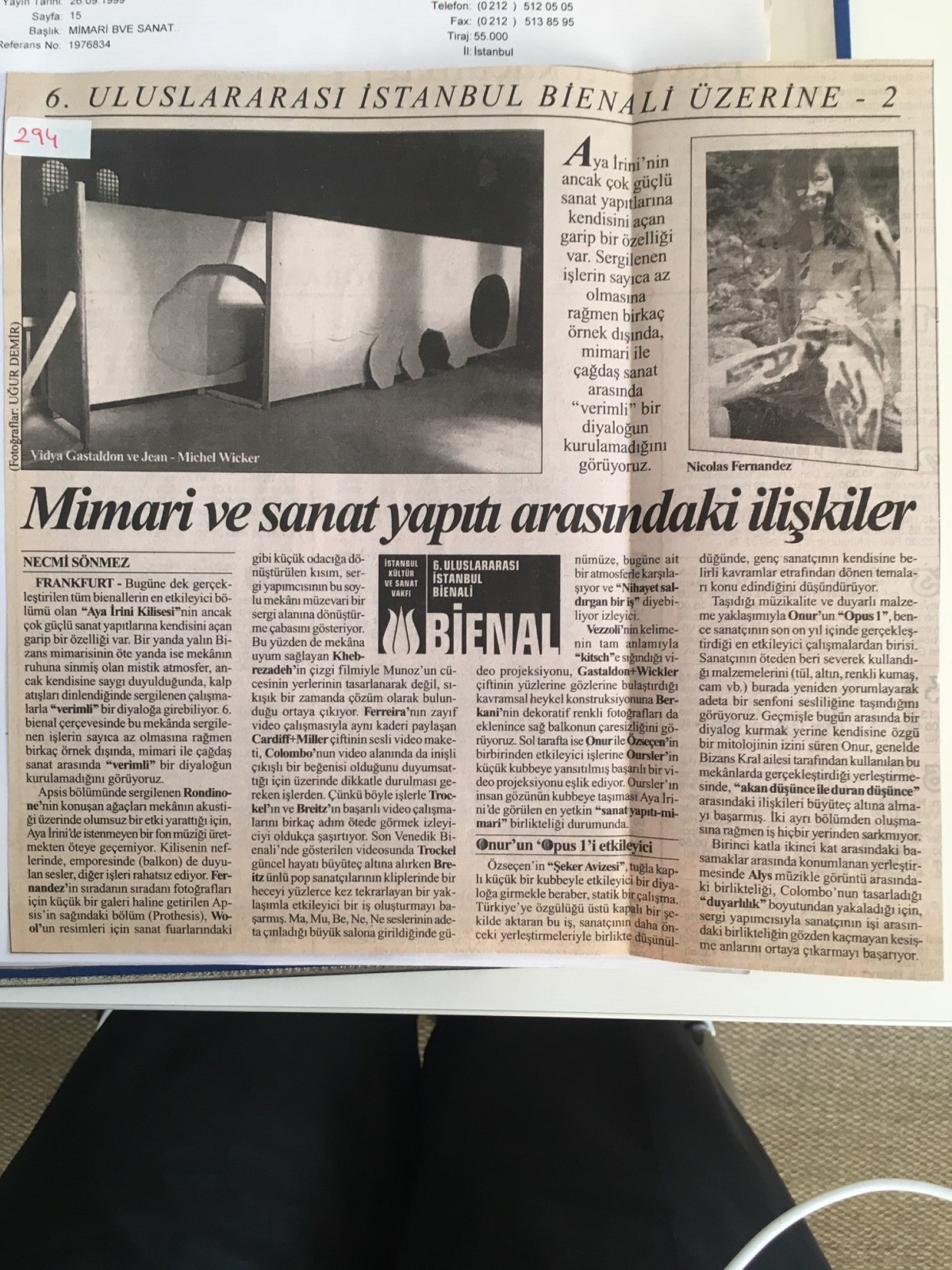
A Point in Füsun Onur’s Visual Coordinates: Opus I
by Necmi Sönmez
An artist who builds tightly knit formal relationships between her life and her art, which have each taken root in the other, Füsun Onur has a privileged position in contemporary Turkish art. One of the sharpest curves of her long and solitary art adventure was her site-specific installation titled Opus I (1999), which was shown at the 6th Istanbul Biennial, curated by Paolo Colombo. The abstract images we encounter in this work, displayed on the second floor of Hagia Irene Church, were shaped using materials that refer to Onur’s own world of mythology. Although they have a tantalising simplicity and essentiality, it is not possible to comprehend their qualities immediately, since they are based on subtle references. In Onur’s own words: ‘The artist builds a multilayered structure by processing it with his/her own inner dynamics, by responding to it and passing it through a complex filter. Yet, to its audience it might seem as simple as if it happened at the drop of a hat.’.
This site-specific installation made with ribbon shaped forms, bric-a-brac, gold-coloured cloth bows, glasses and tulle, whispers into the viewer’s ear while taking the risk of disappearing in the enormity of the venue. This approach, which can be likened to musical abstraction, heralds Onur’s post-2000 period, when she began to explore the relationship between sound and vision by concentrating on the constitutive elements of classical music.
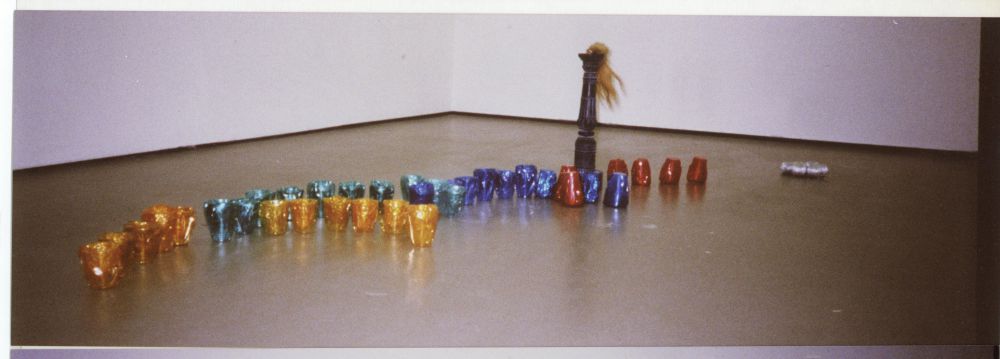
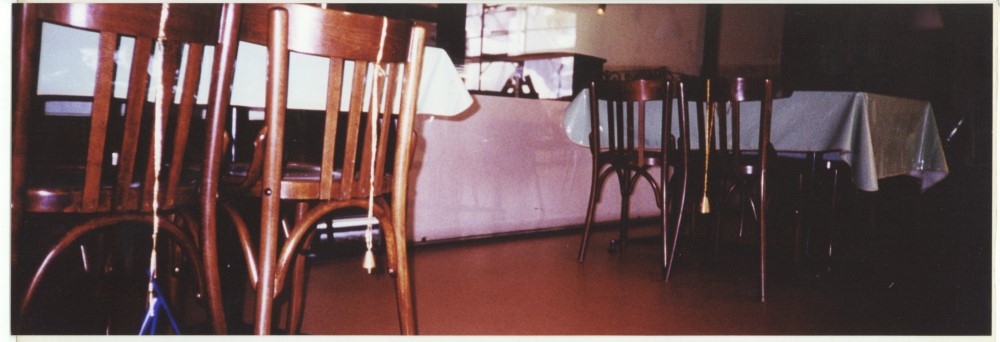
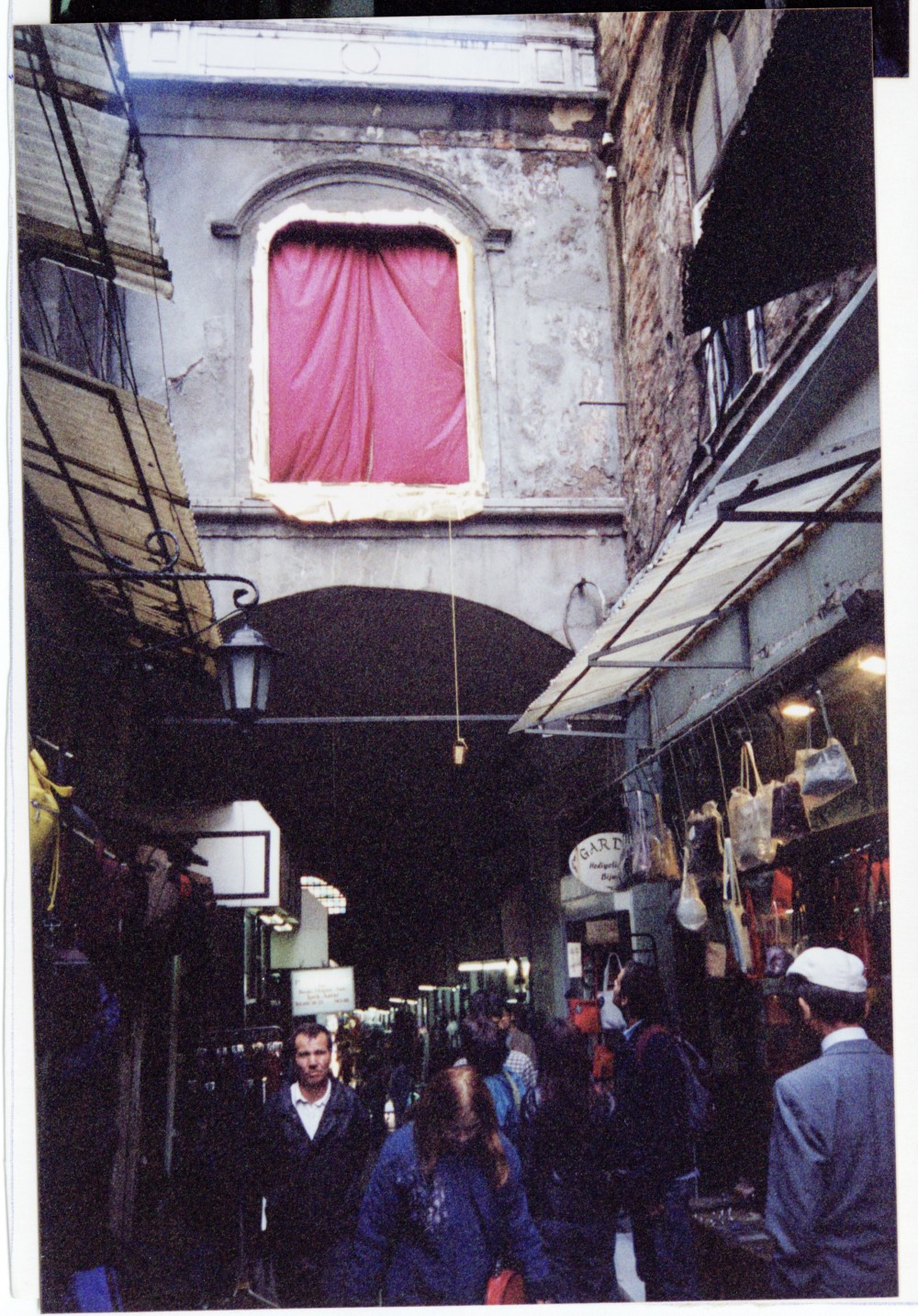
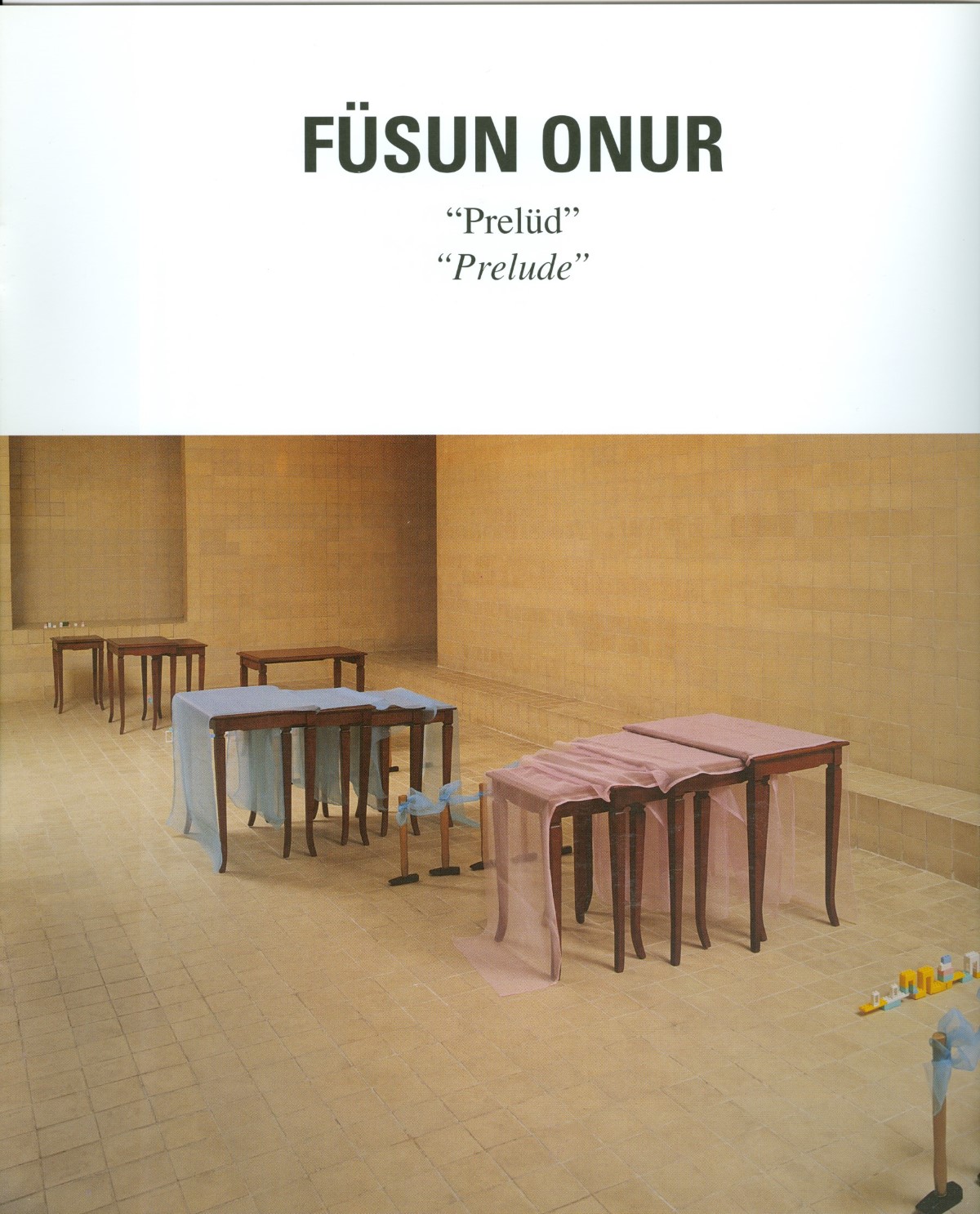
Prelude
by Prof Dr Tolga Tüzün
Füsun Onur is ‘thinking music.’ She perceives music not as some ‘thing’ that one listens to or thinks about, but as a state of thinking, a state of being; she talks about ‘silent music.’ When you remove the sound, that is, the fundamental object of music, from the equation, you are left with structure, space and form. These are what Füsun Onur is working with in Prelude (2000), as well as with intensities, textures, abundances, distances. When it comes to art, such concepts, which are essentially the determining aspects of every human endeavour, facilitate transitivity from one branch to another, allowing for breaches of the perimeter.
Historically, ‘prelude’ is the name given to a short introductory musical piece that precedes the main work, with which it is sometimes closely, sometimes remotely linked. That is, a prelude is a precursor; it points at that which will follow. Nineteenth century Romantism, especially Chopin, broke this historical unity, deactivating the prelude’s role of introduction. Henceforth, this musical form stood on its own legs without being the prelude to that which will follow.
Füsun Onur’s Prelude conveys this historicity and takes it even further. The technical terms she uses in the work’s description – motif, passage, small forms, expanded forms, themes, variations, duplications, counterpoints, repercussions etc. – are terms that we use in explaining the form known as fugue in music. Prelude can also be read as a modular spatial fugue in terms of the objects’ rhythmic relationships
in space.
Can Prelude be its own precursor? Such a self-contained prelude/fugue underlines the fact that Onur is thinking ‘music’ and not ‘about music.’
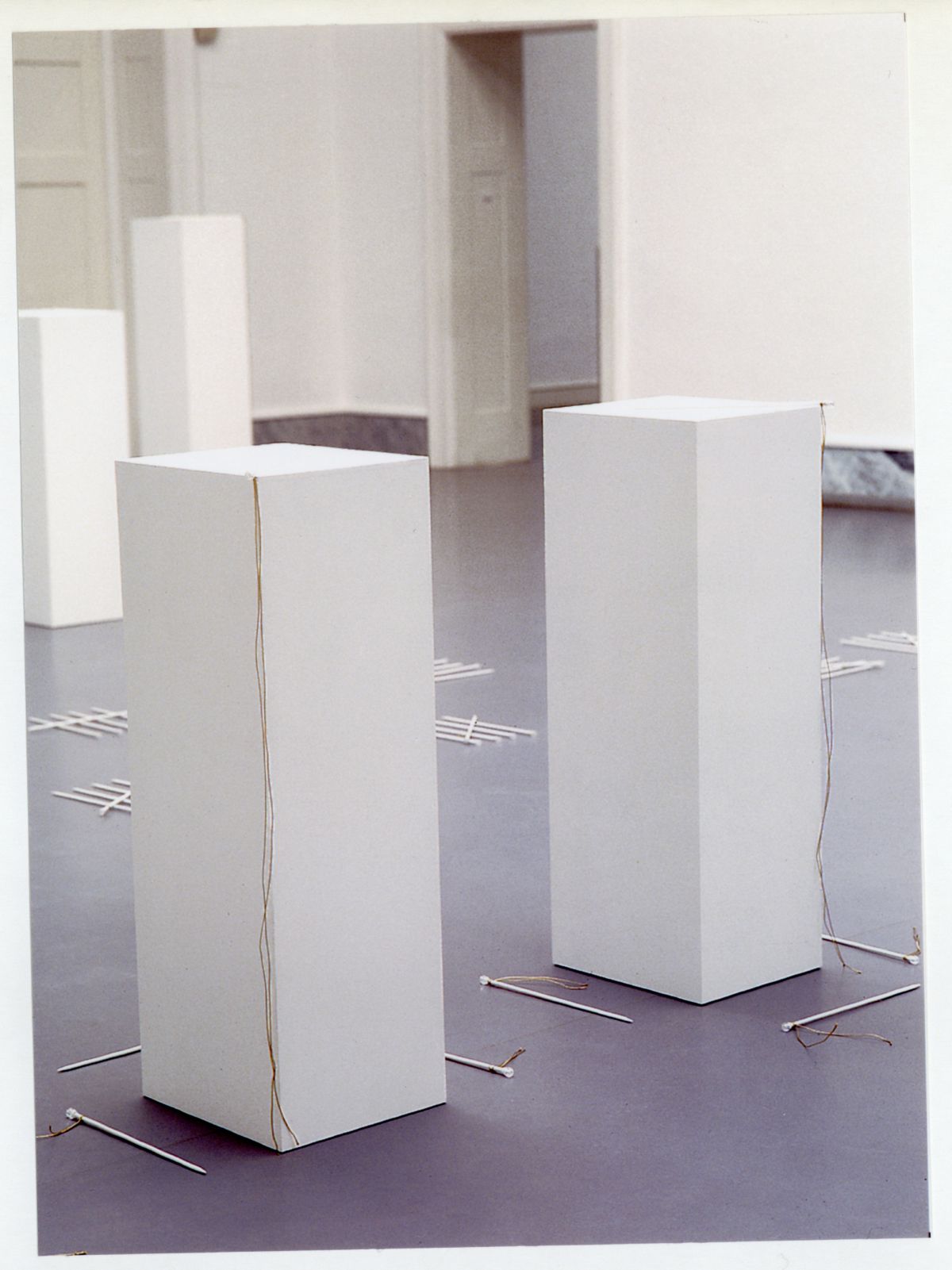
2001
Opus II – Fantasia
by Deniz Gül
Inside a room, it is only possible to imagine the whirlwind, the hurricane or the storm, yet the flow can be felt. The most sensitive part of a person’s skin, for instance, her neck, lower back, fingertips contact an invisible yet sensed stream of air. The work (the breeze)* on the window-door axis hits manifold surfaces, is swallowed by volumes. In the meantime, the person is a nod in the room, a multiplier.
The force is too disturbed to warrant condensation. Let us then imagine the escalation of gaps, directions and waves. Some queer flow! We deduce that we are still inside a room merely through the objects that keep us here and now, then and there.
Füsun Onur’s work titled Opus II – Fantasia: strings clumped up with gold thread, knitting needles, porcelain figures girded up for baroque or perhaps rococo, venturing pedestals… A setting clustered with various units and repetitions, stratified with sensory deviations and differences hardly discernible to the eye, wherein the waves fluidise the space. An assemblage whose creation inclines from material to incorporeality and will not be encapsulated in forms evoked by the words, system or construction, likewise the objects Füsun installs across the flows she has unpacked in time conjures multiple moves that are at times vectoral and at others cyclic.
The name of this experience is Opus, that is, work (breeze): the manifestation without beginning or end that comprises the making of the artist. The traced can be sought in the assortment of the acts of partition and multiplication. On the other hand, the movement that traces Füsun Onur’s work pertains to how the artist observes the gaps. Through their dispositional in situ (not alluding to any circumstance even if at rest), the objects – needles, pedestals – draw out ventilation spaces within the room. We are nearby the floor. The oscillations conceived in the mind through the absence of situs, which might be traced as deviations from gravity, can be read as waves mobilising the flow pervading the room. Meanwhile, in the visible space, there is an expedition to difference and repetition, to infinitesimals.
*The author points to the homonym root of the Turkish words ‘eser’ (work) and ‘esinti’ (breeze).
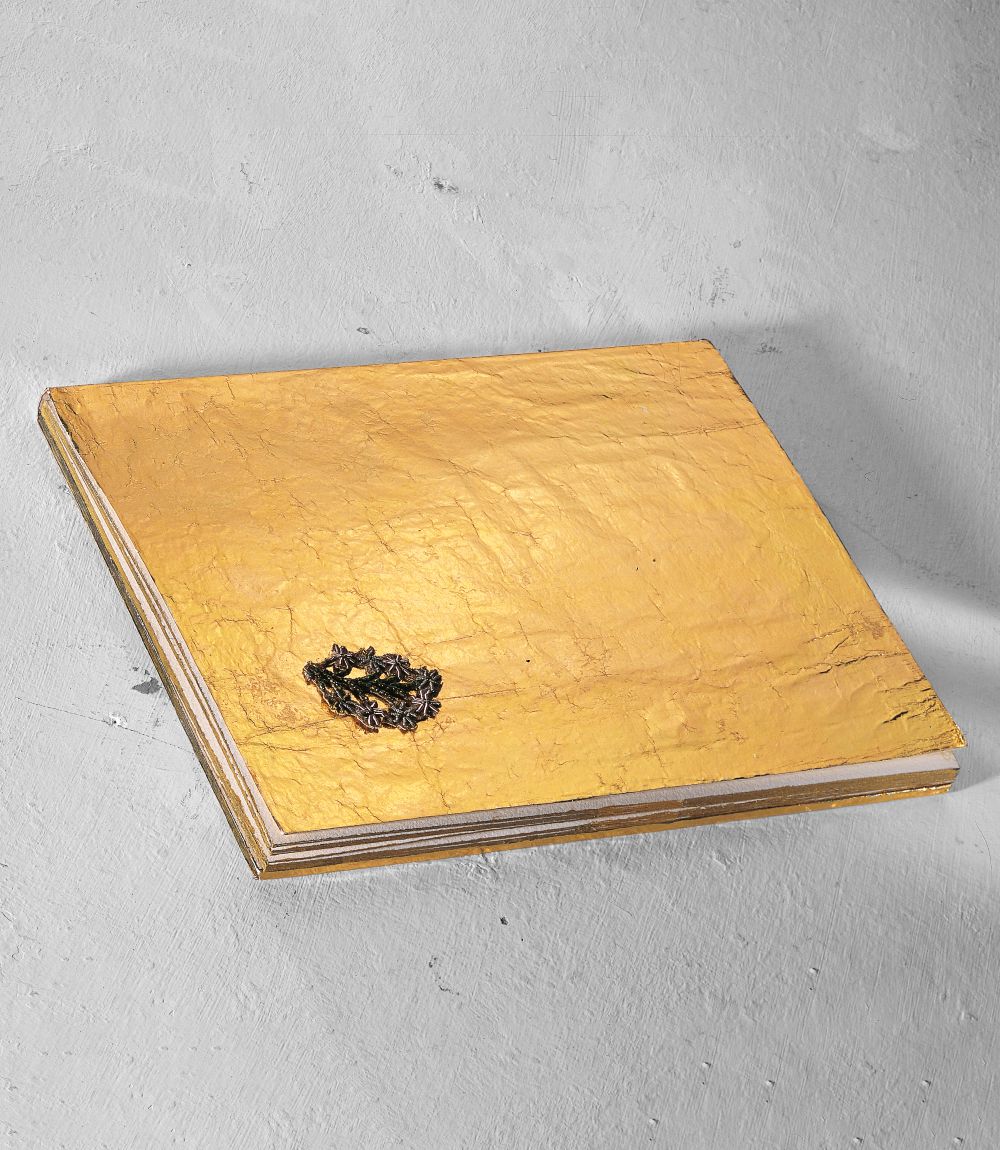
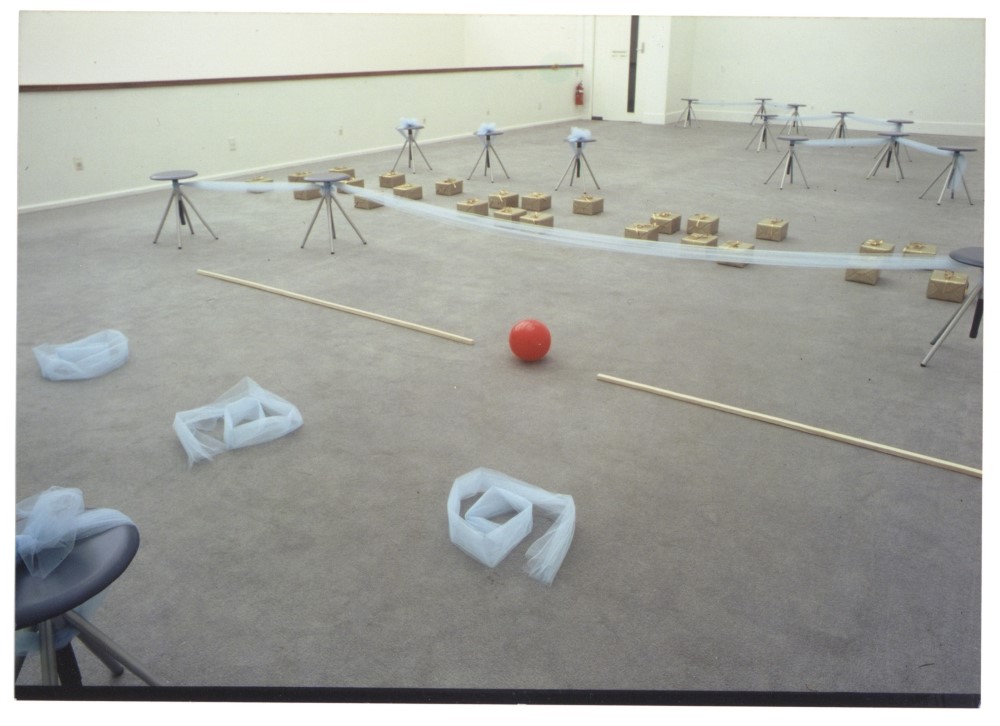
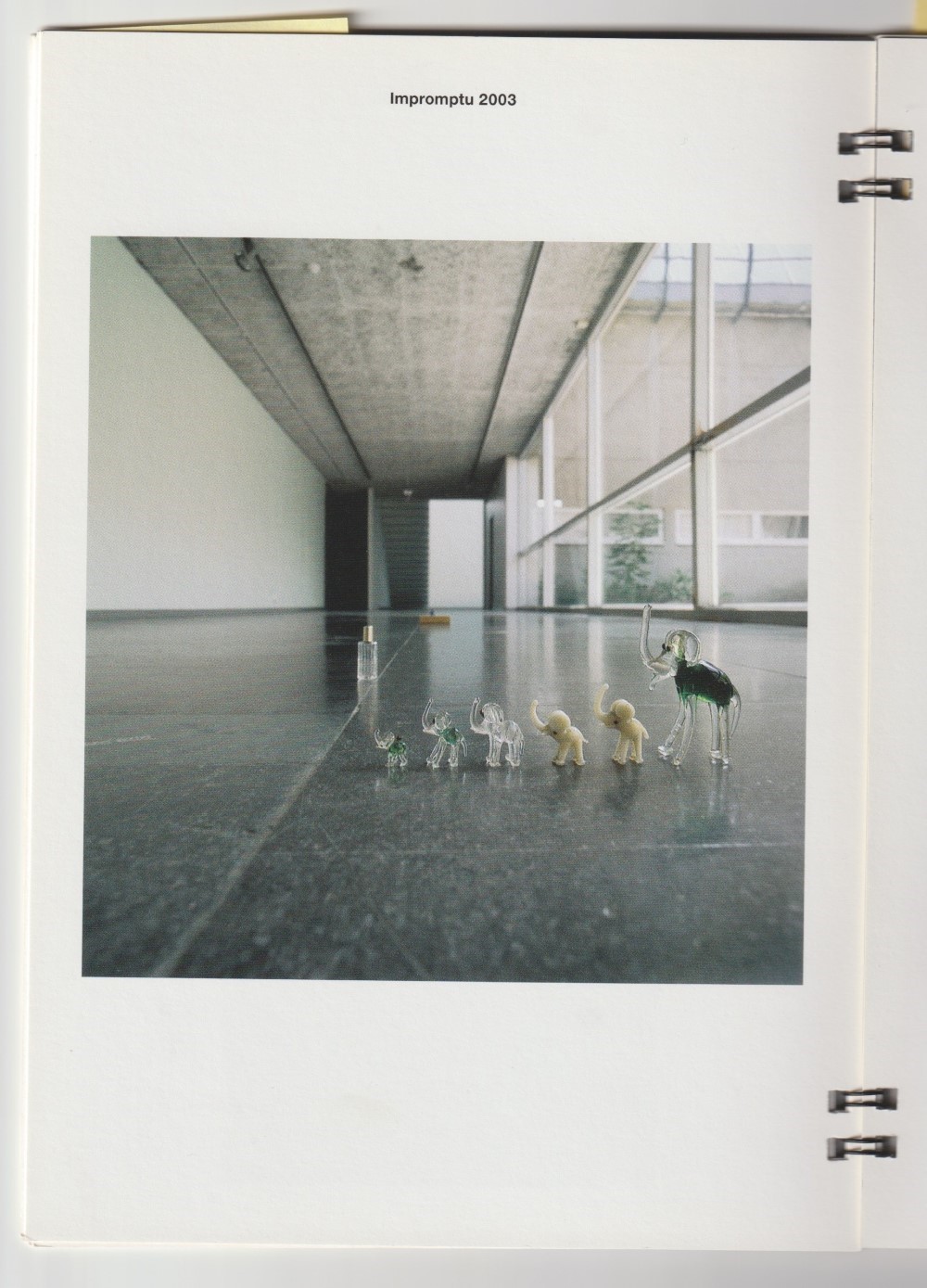
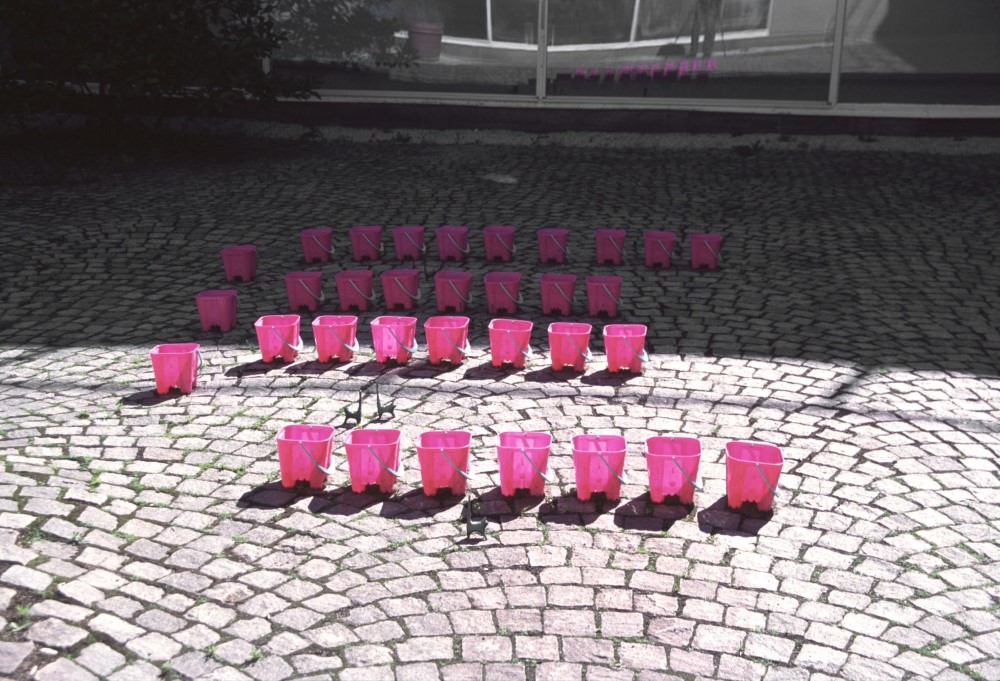
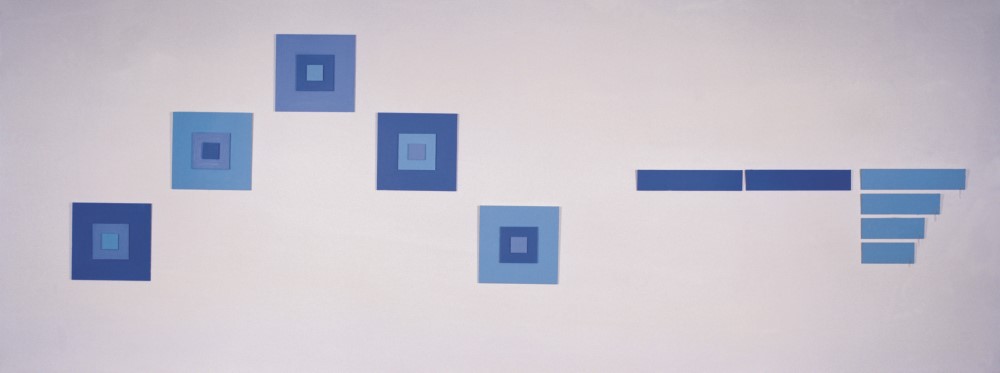
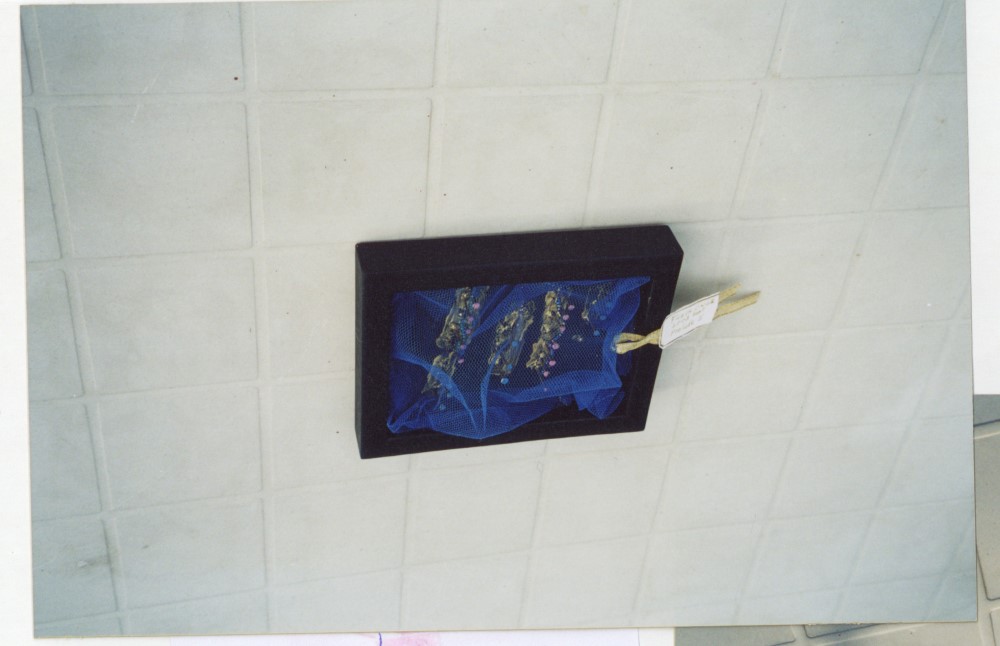
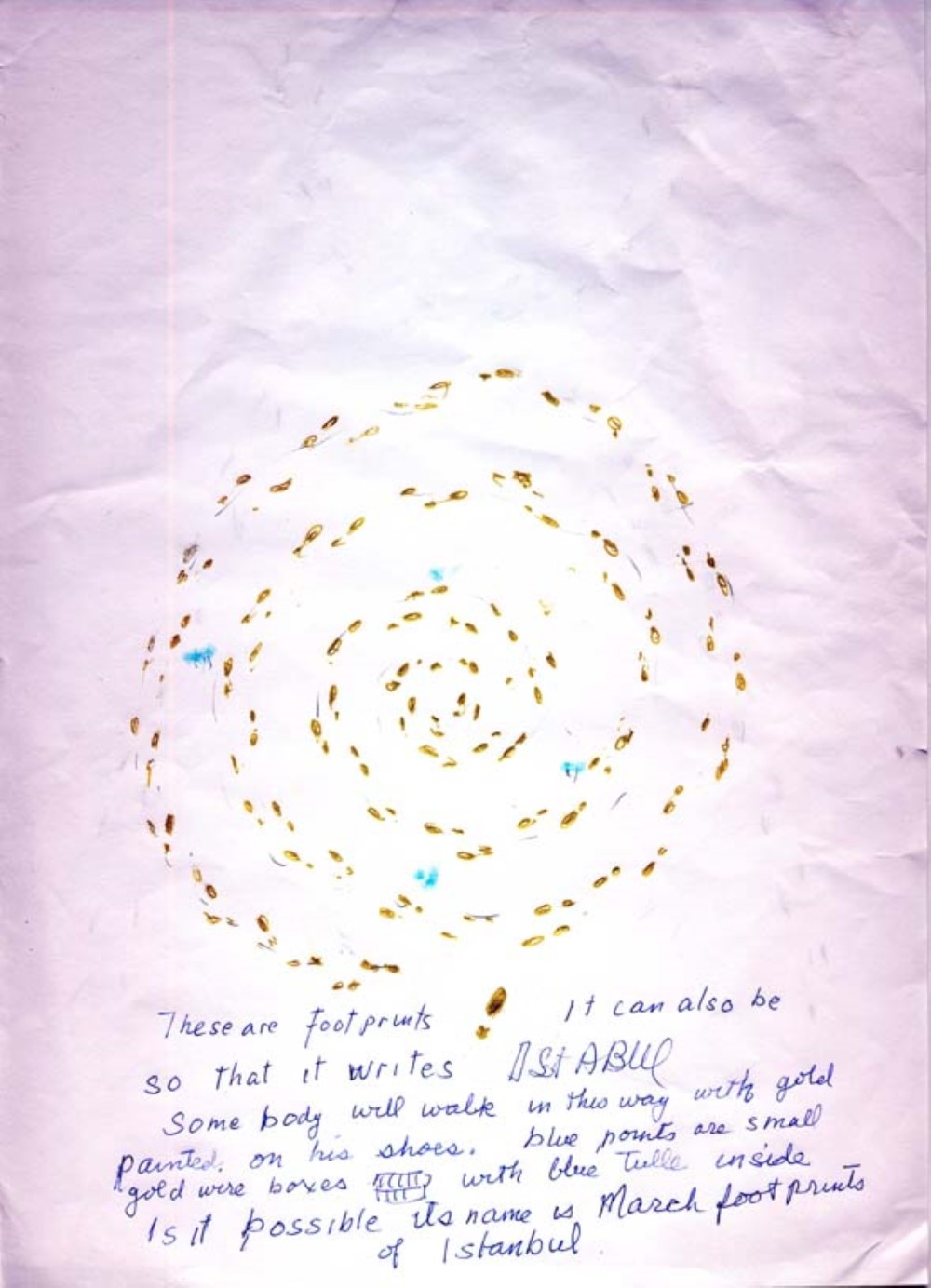
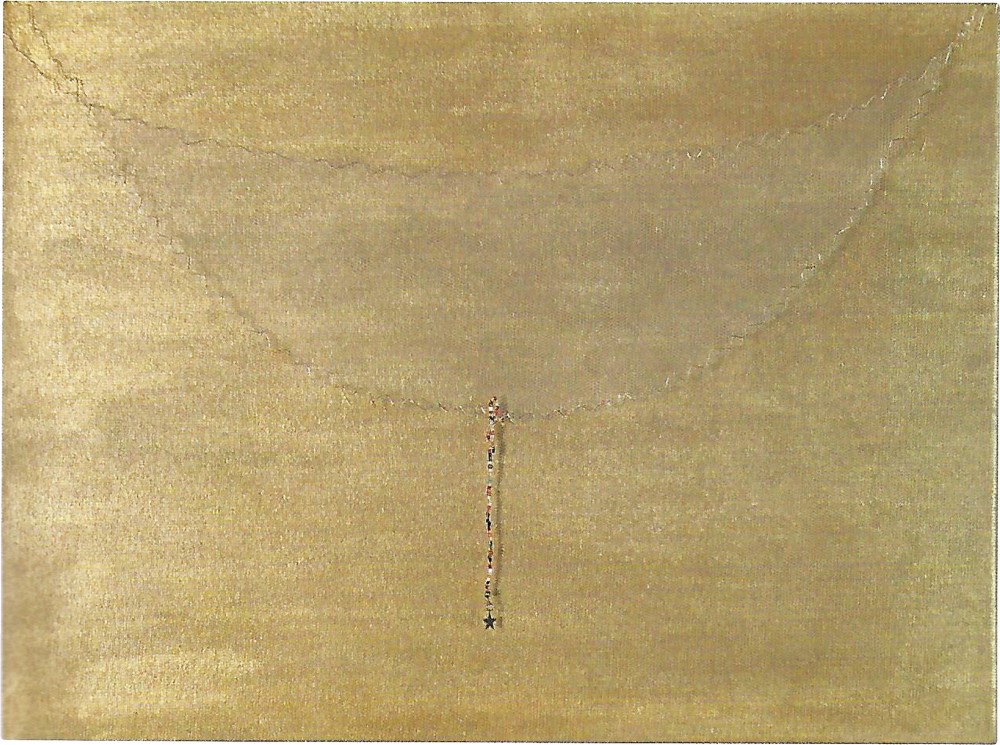

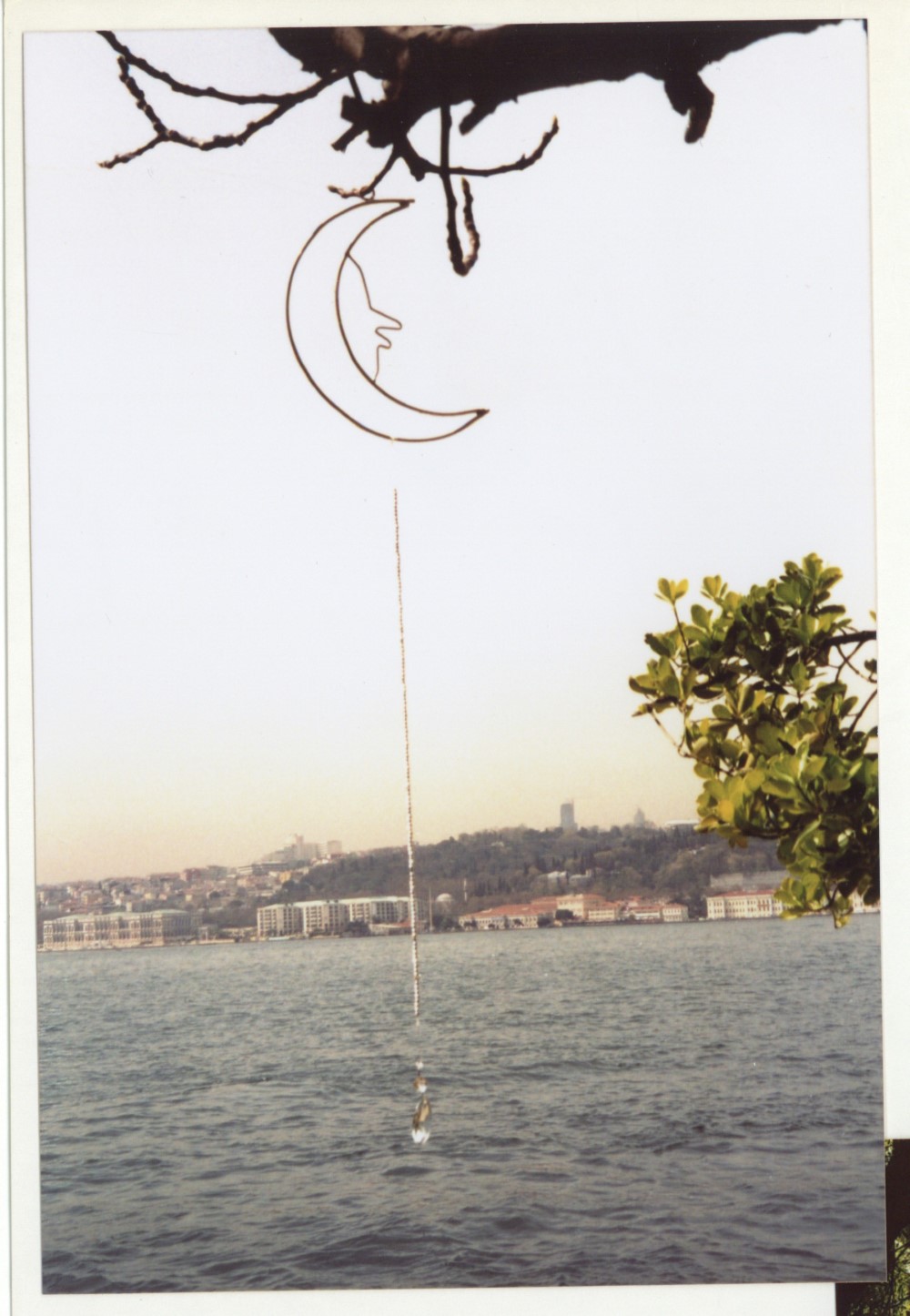
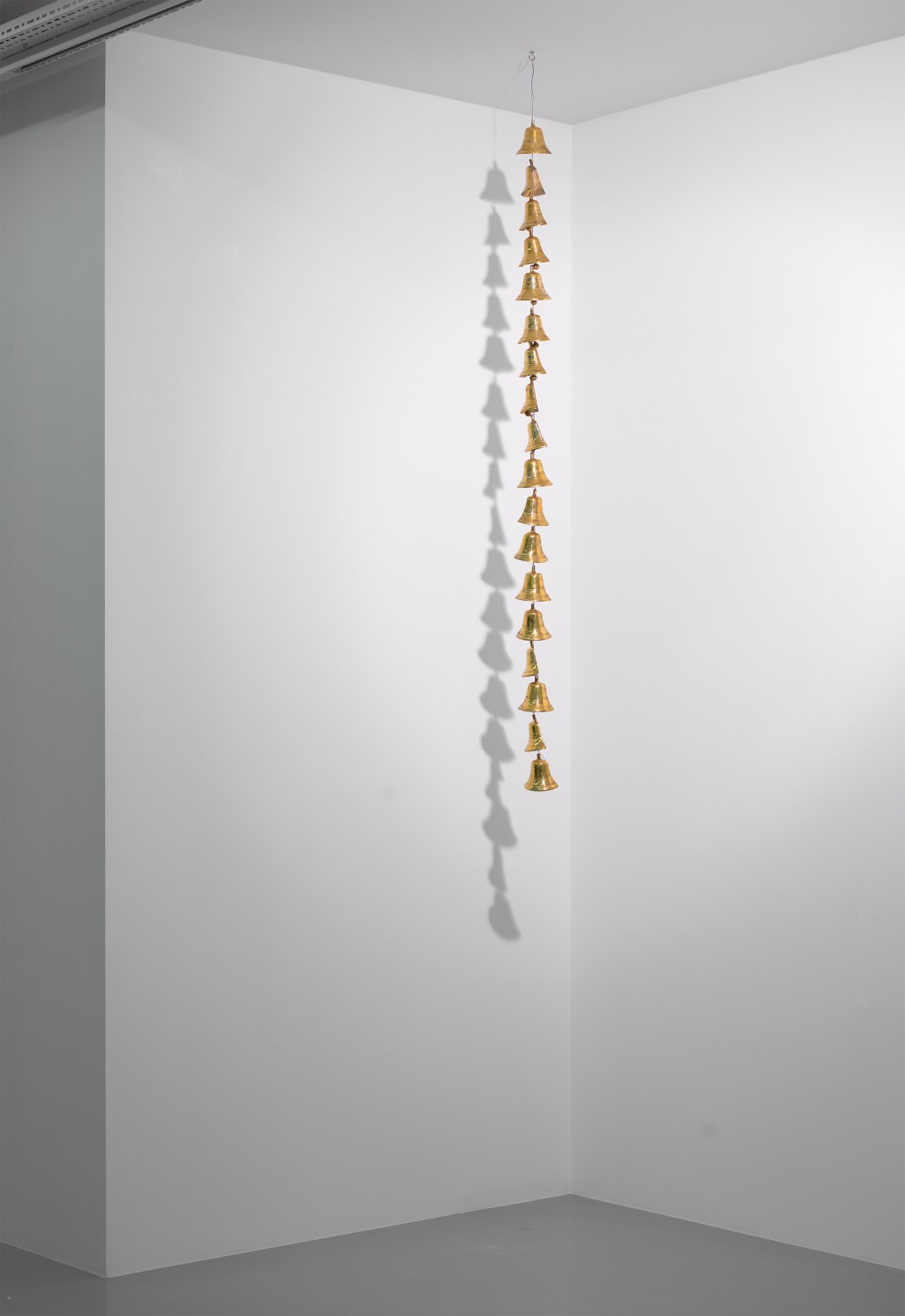
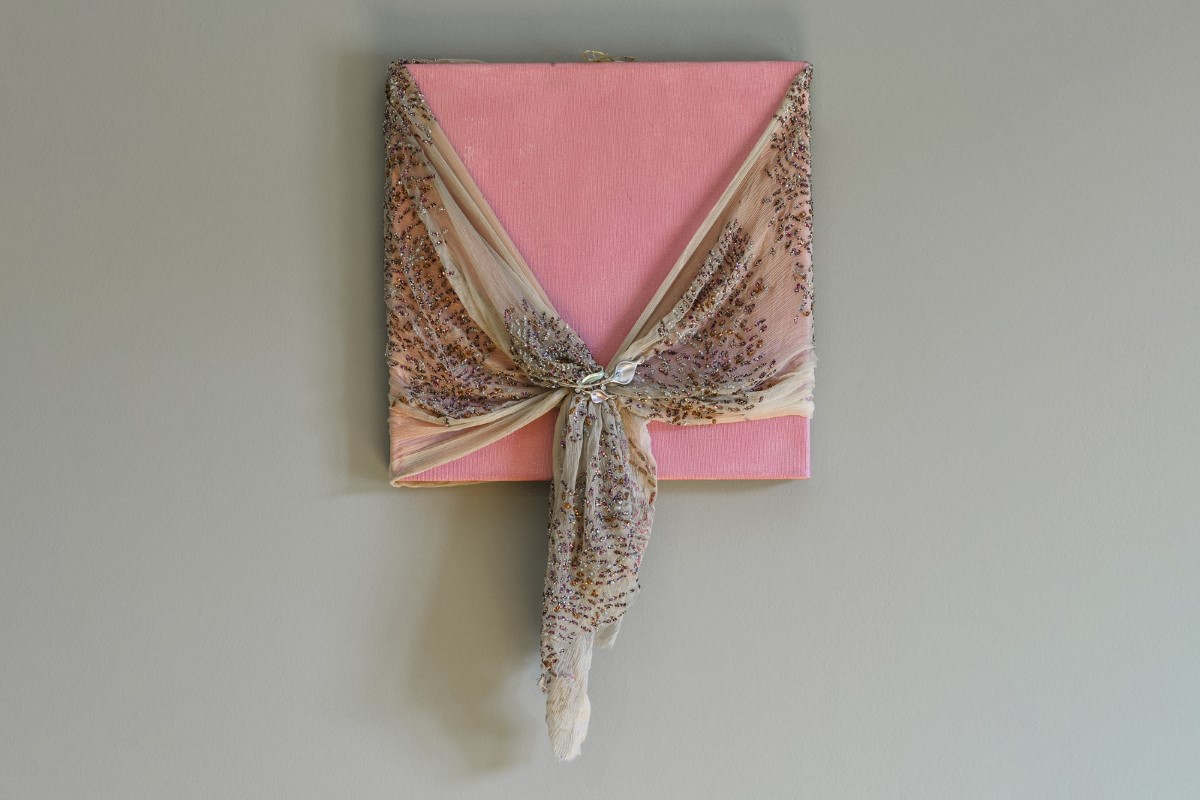
Flamboyant
by Anna Boghiguian
It is difficult to write about an artist whose work I’ve never actually seen, except virtually. Füsun and I are roughly from the same generation, and when we studied art, the art world was conservative, male-dominated both in the Middle East and elsewhere. Even in New York City, only one or two female artists were promoted.
I happened to visit Istanbul in the 1960s and eventually I travelled all over Turkey, where there was no organised art world in general. There were neither female artists nor international exhibitions like today’s Istanbul Biennial. The ambiance, as in Egypt, was traditional, although there was a movement towards Abstract Expressionism in Cairo, as well as an abstractionist trend in sculpture. However, Füsun was lucky enough to get a Fulbright Scholarship and go to the US to study sculpture. In 1967, she graduated from the Maryland Institute College of Art and at that period she started using dumped and discarded everyday objects in her works. Over time, these found objects began to dominate her sculptures, some of which were shown in the gardens of Dolmabahçe Palace and the Archaeology Museums.
Space, time and light worked together to create her minimal compositions, but at the same time, her strong statements resisted conventional norms. For example, in Icons of Time (1990), she uses materials like wood and skin. The mass is weightless and vibrant; light passes through the skin, suggesting violence, the breaking up of social, political and economic systems, the cruelty of the world. There is also a sense of light, transparency and space as immortal or infinite. These frames suggest that Füsun’s paintings have flowed like water out of the traditional frame, out of the accepted norms, and become three dimensional. Similarly in Flamboyant (2007), the frame contains not a painting, but a scarf, perhaps evoking protection from the wind or femininity. Both works demonstrate Füsun’s concise way of expressing herself using simple materials that say a lot about the world today.
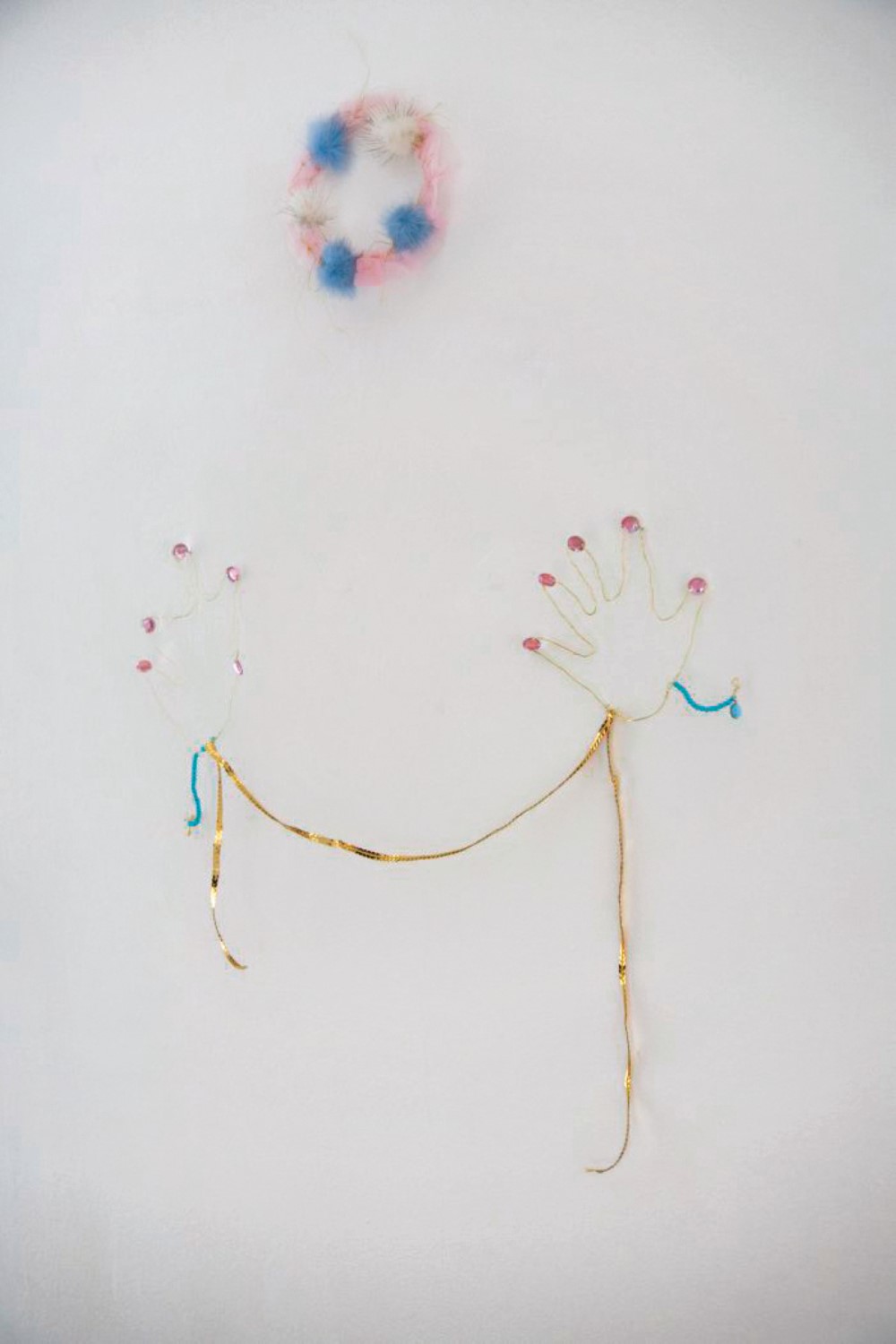
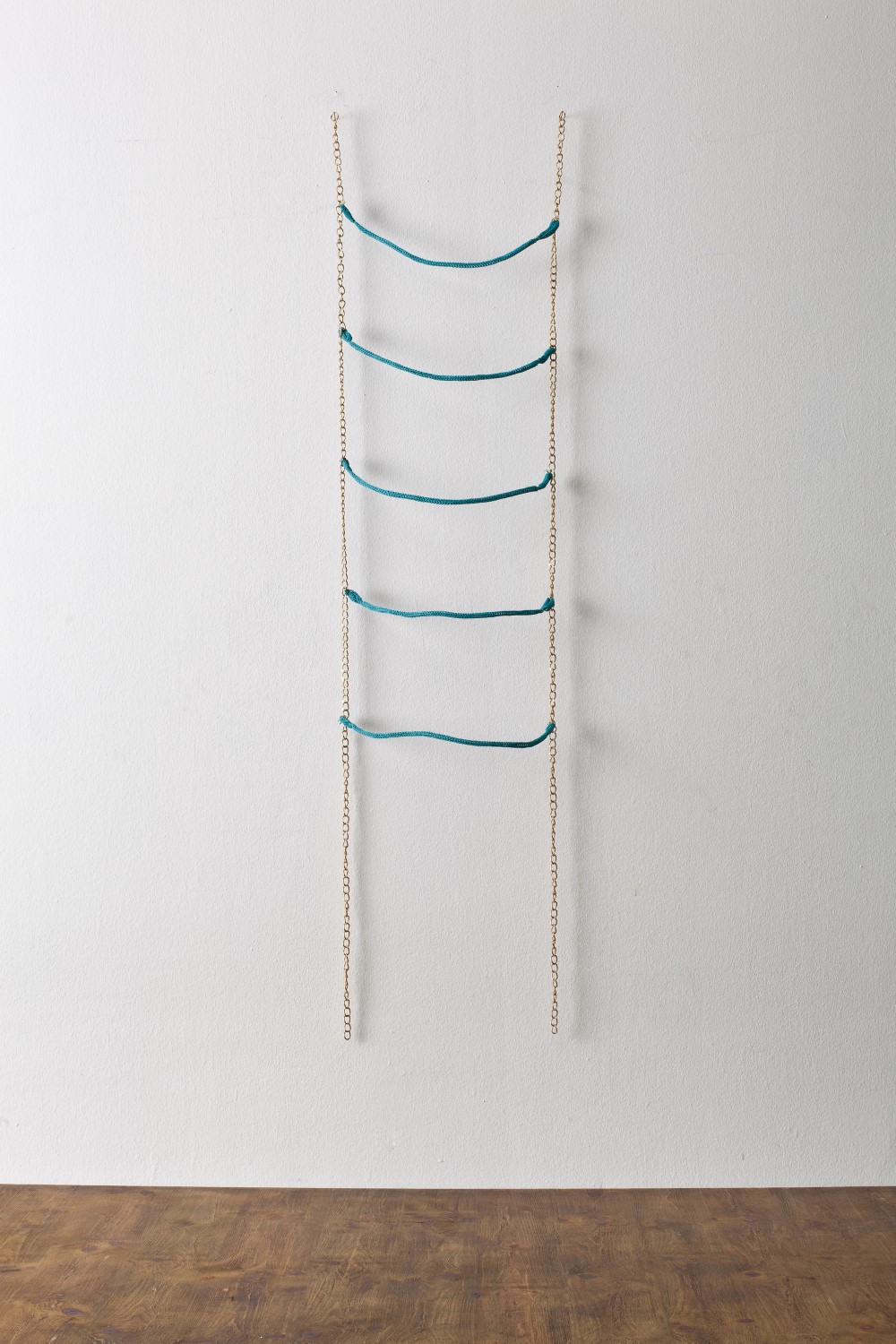

radiant absence*
by Alev Ersan
A particular conviction I had until I was about eight was that it was quite possible to grow into a dog during puberty. I didn’t imagine what the specifics of this future might hold, since a part of me already identified with K, the middle-aged, black cocker spaniel I grew up with. I didn’t appear to the world in dog form, but this wasn’t a concern, because of the tight knots of attachment I had formed interiorly, my adoration for K, which sat within the realm of eros. That space of longing between human, child and animal was preserved and encouraged by imagination, since it wasn’t mirrored, nor reciprocated as expected. Instead, fuelled by obscurity and nonsense, it grew expansive, becoming a central motif in my creative vocabulary long after K’s death.
An attachment of this kind, once made, has an afterlife of its own. The reflexive pulse of mourning means that anima treads back and forth on the threads woven through the lifetime of the deceased – catching its paw now, showing a tip of a tail then – in some half-lit space, sending surprise tremors through the path of the lover-survivor-artist. The blown-up shadows of the scattered minutiae and the central, caught figures of Tekir (Old Persian tigra, Greek tigris) on the walls evoke such spheres of intimacy, longing and play. The five-piece installation stirs the viewer’s visceral memory through images of the momentary, familiar postures of the cat Tekir amid household textures. We remember what is lost through the way in which its absence resonates and tickles. In the silent, spectral rise and fall of the textile, the apostrophe becomes audible, not a composition in full, as explored in many of Onur’s silent, musical installations, but another kind of accumulation: twists and turns of limber, non-human spines and fragments of the human companion quietly humming the impossibility of mourning, an impossibility in translation.
*Anne Carson, Eros The Bittersweet: An Essay, (1986 Princeton University Press), 37.
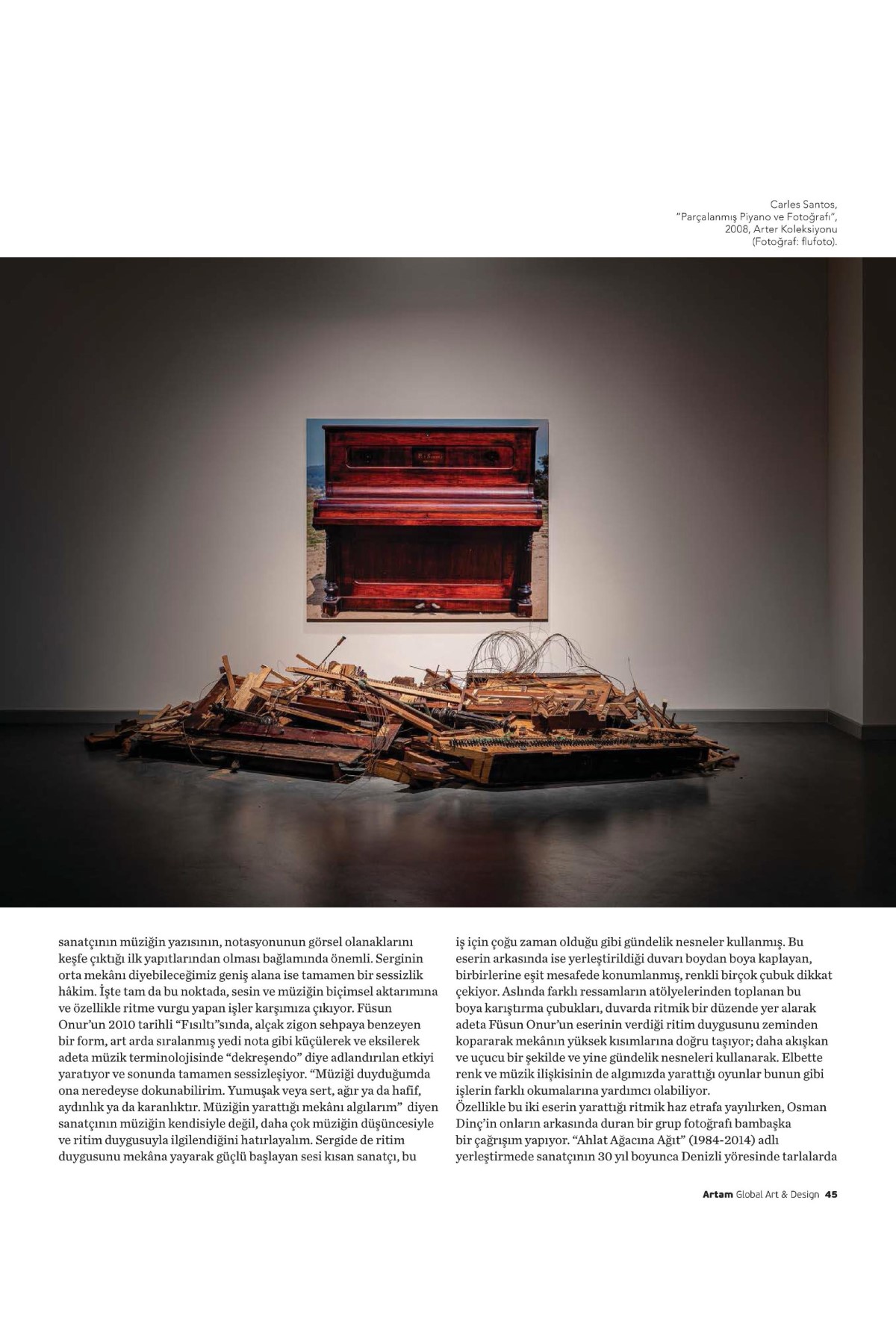
Whisper
by Misal Adnan Yıldız
Meeting audiences for the first time in 2010 at Port Izmir 2: International Triennial of Contemporary Art, titled Silence_Storm, the installation Whisper (2010) is comprised of seven pieces lined up in succession. It is as if a wooden stool or coffee table is being gradually reduced from its original design and abstracted into a visual poem that I look at and imagine the flow of water, the rhythm of the sea, the sound of the waves.
A whisper is the lowest frequency the human ear can hear; to whisper is to utter what you wish to be known, but do not wish to be its utterer. This word, which evokes the feeling of mystery, secrecy, intimacy and privacy, has a depth of meaning that is fitting for Füsun Onur’s installation. The elders say, ‘What two people know is no longer a secret.’ And this form, repeated seven times, is like the gradual diffusion of sound, of word, of utterance; like the undulating rings of water ever receding from the centre and disappearing.
Istanbulites know best how words and water travel.
Wherever it may be exhibited – the Tütün Deposu at Port Izmir, or the Antrepo building in the 12th Istanbul Biennial; the exhibition halls of Arter, or the terrace overlooking the Bosphorus in Onur’s home in Kuzguncuk – Whisper will titillate its viewers’ instinct to listen and hear. The sound of the poem within will never be silenced. The melody of this installation is a song with a refrain that will be forever echoed.
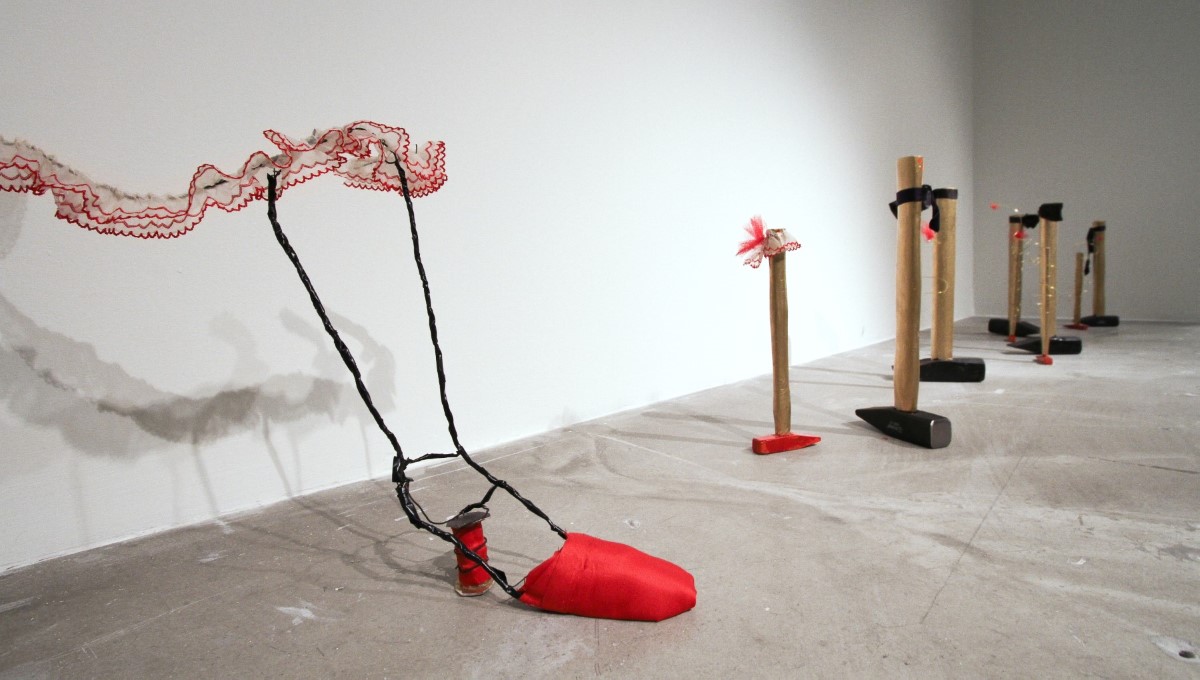
Flamenco
by Murat Alat
If we concur that every existing thing is in motion, we can say that every thing has a sound. In as much as every moving object vibrates, each material harbours many a sound at its core. Certain motions, such as the internal motion of a stone, are small-scale and very slow. The sounds emitted cannot be heard by the human ear. Other motions are mighty; their sounds pulsate throughout the human body like thunder, jarring every bone. What, then, happens to the sounds after the vibrations strike our body like a flash and leave? Where do these sounds congregate? The memory, which keeps a record of the world in motion, is a plate on which the sounds are engraved. But the sounds are not kept in an isolated state in the memory; they are entwined with other sensory particles, thoughts, states of mind. When you summon a sound, a whole universe comes along with it.
Füsun Onur’s Flamenco, which she produced in 2011, is a composition constructed from the latent sounds of objects. Some of these sounds are born from the momentary, minimal vibrations of objects. Others are memory-soaked high-frequency undulations, spilling over the depths of the viewer’s mind. Like notes on a stave, hammers, ribbons and wires line up side by side and form a composition. The execution of the composition, meanwhile, falls to the audience. Each viewer interprets what their eyes see through their own personal baggage, hearing all manner of sounds. Each execution is different and unique, since it is the performer’s own story. The sound of Flamenco (2011) does not echo off the walls of the exhibition hall; it fills the halls of the performer’s inner world, therefore it is inaudible to another performer. Trails open up at each note, pinning the past to the present, travelling through different bodies in different geographies; and on these trails, one comes across the stories and sounds of various objects, plants, animals, people. This orchestra, which at first you think will create a cacophony, gradually synchronises, achieving a humble harmony.
Flamenco loosely knots together the pieces of the material world discerned by the helpless organ called the eye, which is dominated by the despotic power systems that have laid siege to the world. With delicate touches, it arranges the vibrations whose hazy origins would take a lifetime to enumerate, and releases them back into the universe to be reinterpreted anew by those who seek a music to listen to in life.
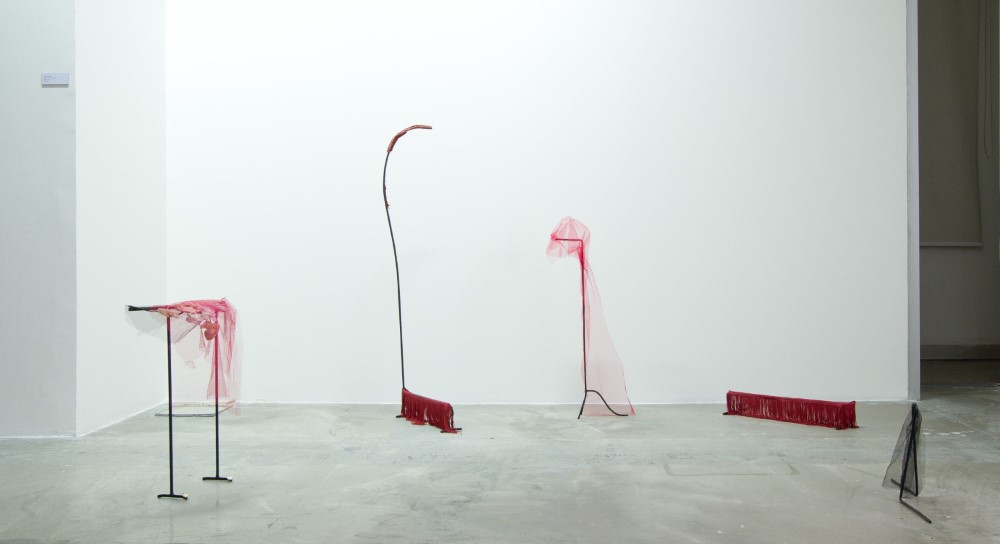
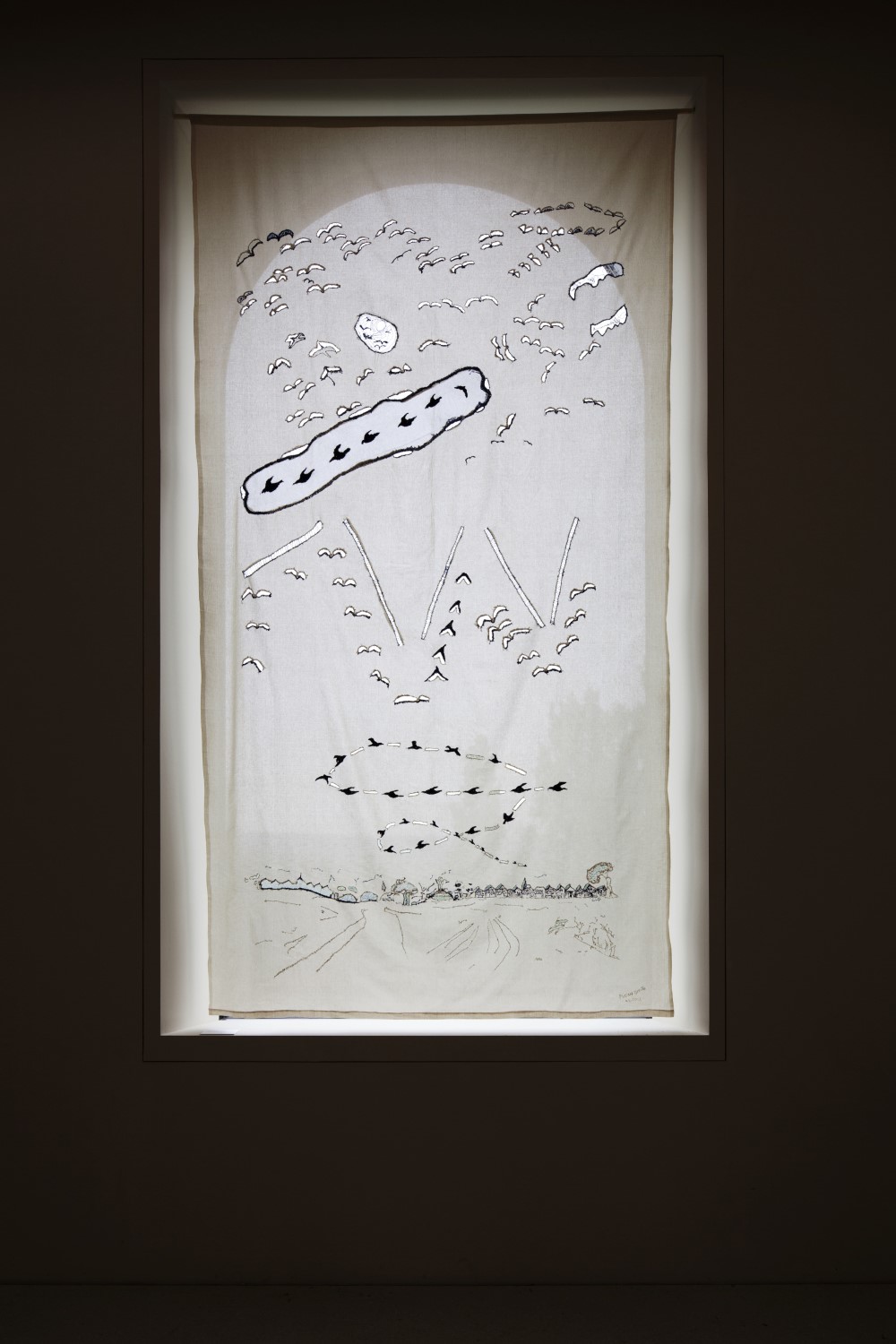
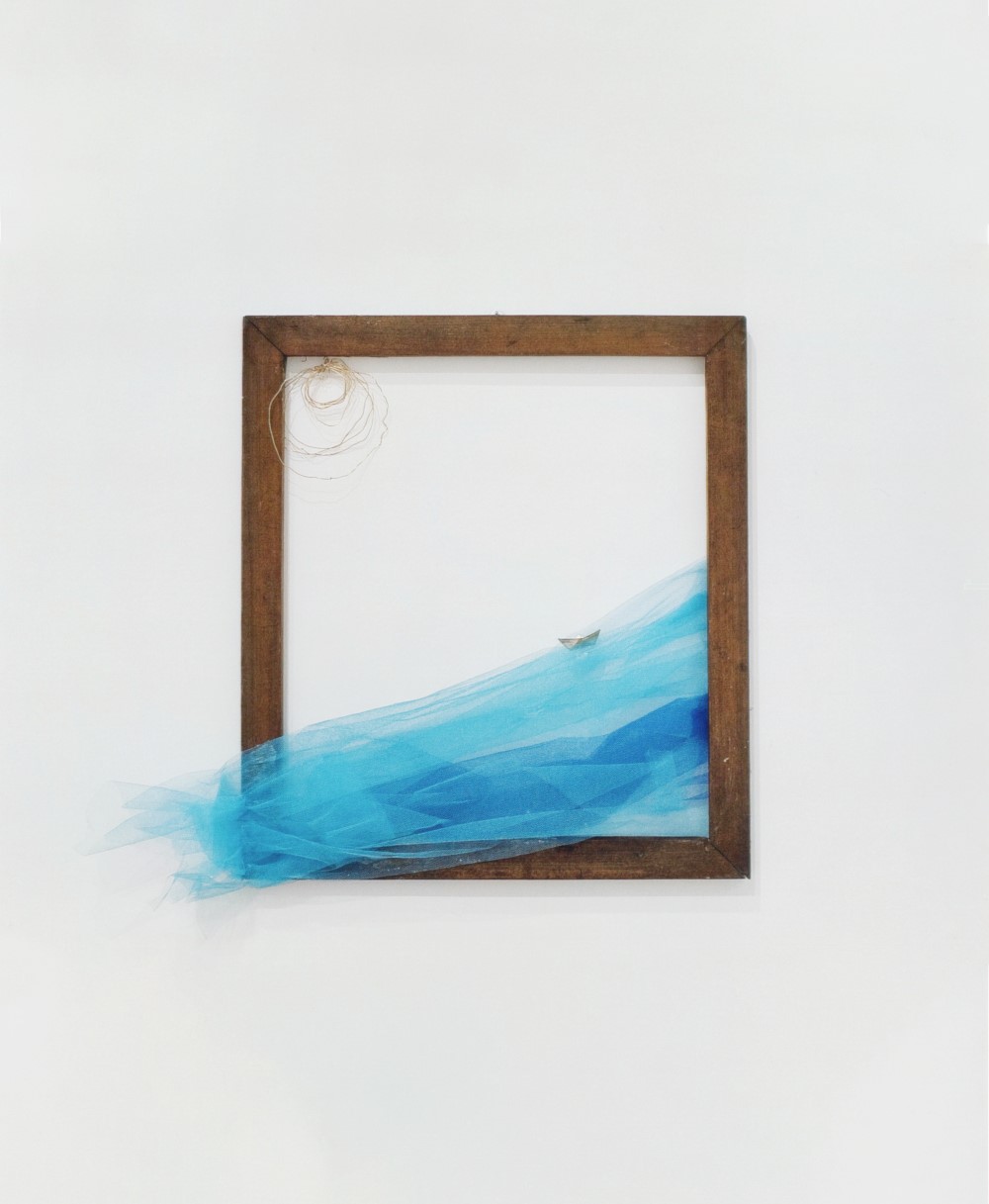
_MAK_Vienna_MAK_Katrin_Wißkirchen.jpg)
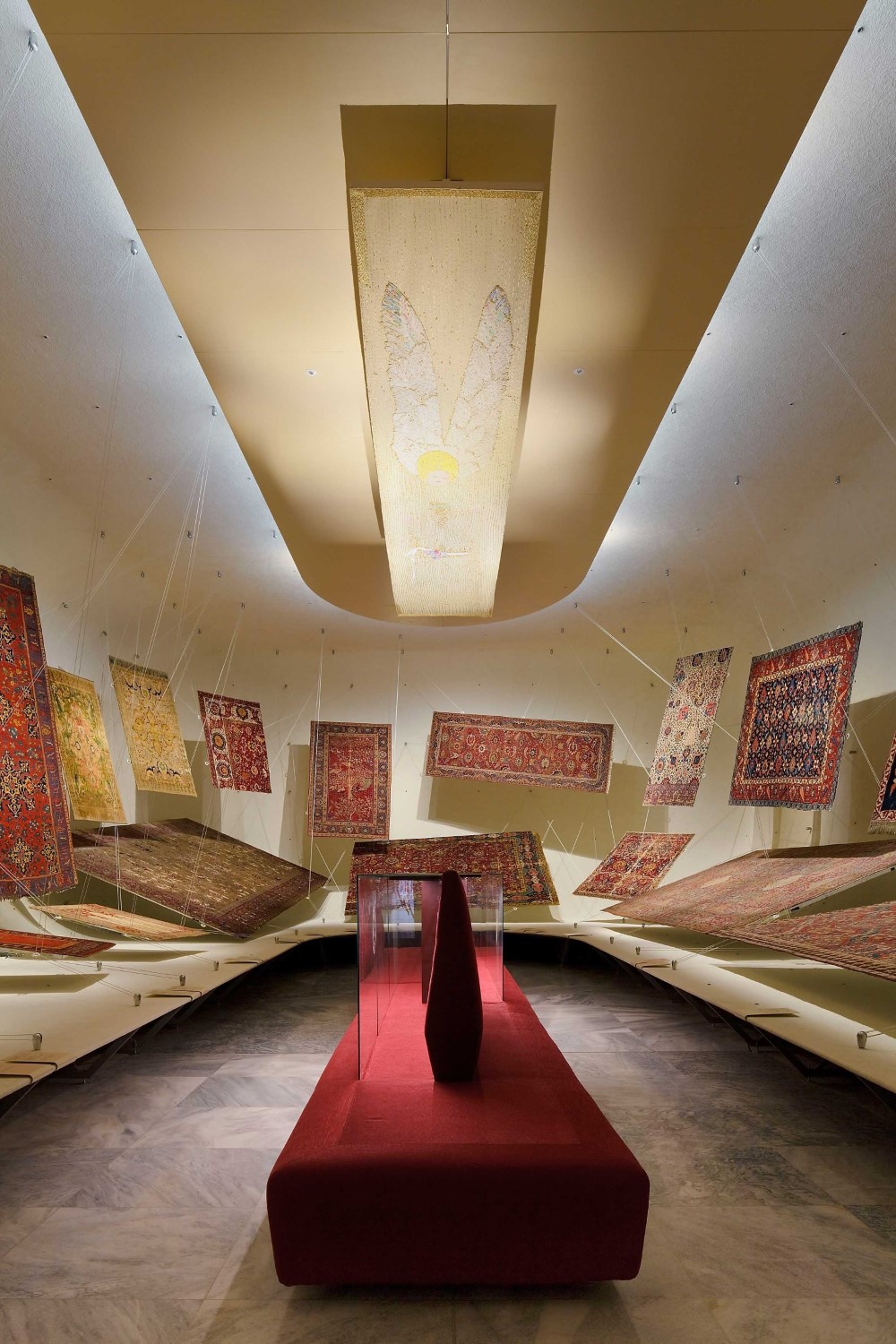
MirroredLabirynth_ArterizniyleFotomurat-germen.jpg)
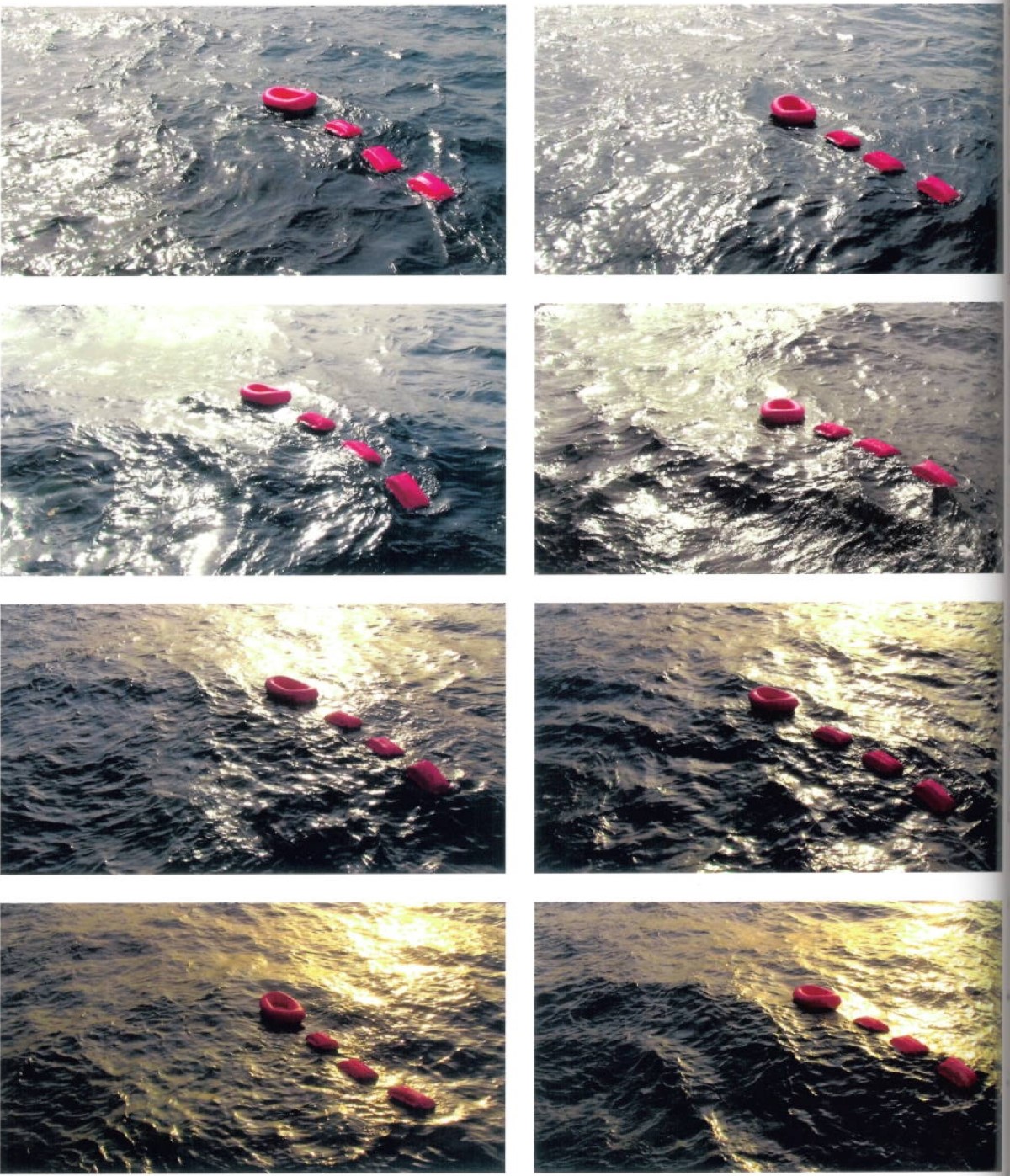
On Füsun Onur’s Pink Boat
by Ayşe Erek
(I am watching the Pink Boat.) The other day, during one of our usual swims at daybreak, the coast guard approached our group of swimmers and told us, ‘It is forbidden to swim here. We are in international waters.’ I have spent a large part of my life looking at this sea, hearing of its past, dreaming about the geography where the Cyrillic alphabet – which I learned from the passing ships – was written, about Odessa and the Eastern Black Sea, about the Mediterranean and Gibraltar. It neither belonged here nor anywhere else: this sea belonged everywhere. As my father once said, it is an organic living being. The Pink Boat, which Onur dreamt of putting to sea in 1992, the year of the great fire on the Galata Bridge, revives the traces of that time when the Galata Bridge, along with its stories, broke away from Istanbul’s daily life. It recalls the traces of the decisions required in its aftermath, which somehow could not be taken, and of the waves and dilemmas. I am thinking about how this old structure by the sea has been ravaged and abandoned by a new ongoing urban renewal project, which I read of in the news this morning; about the century-old glass bottles, produced in long-gone workshops, that came from the bottom of the sea, which I heard of on the radio yesterday; and about the whisper forever oozing from above ground and underground. I am turning back to the Pink Boat. Unable to get away from the sea, it surrenders itself to the unexpected rhythms and oscillations of the waves; it changes colour with the light, becomes dark, glitters, falters, dances. Does it create a dark image? No. As Onur says, it is not nostalgic either. She does not like nostalgia. To me the Pink Boat evokes coolness and lightness, much like what Onur says about the sea she sees from her home in Kuzguncuk: a momentary sense of ease about the future. Life goes on with the unpredictable rhythms of the sea.
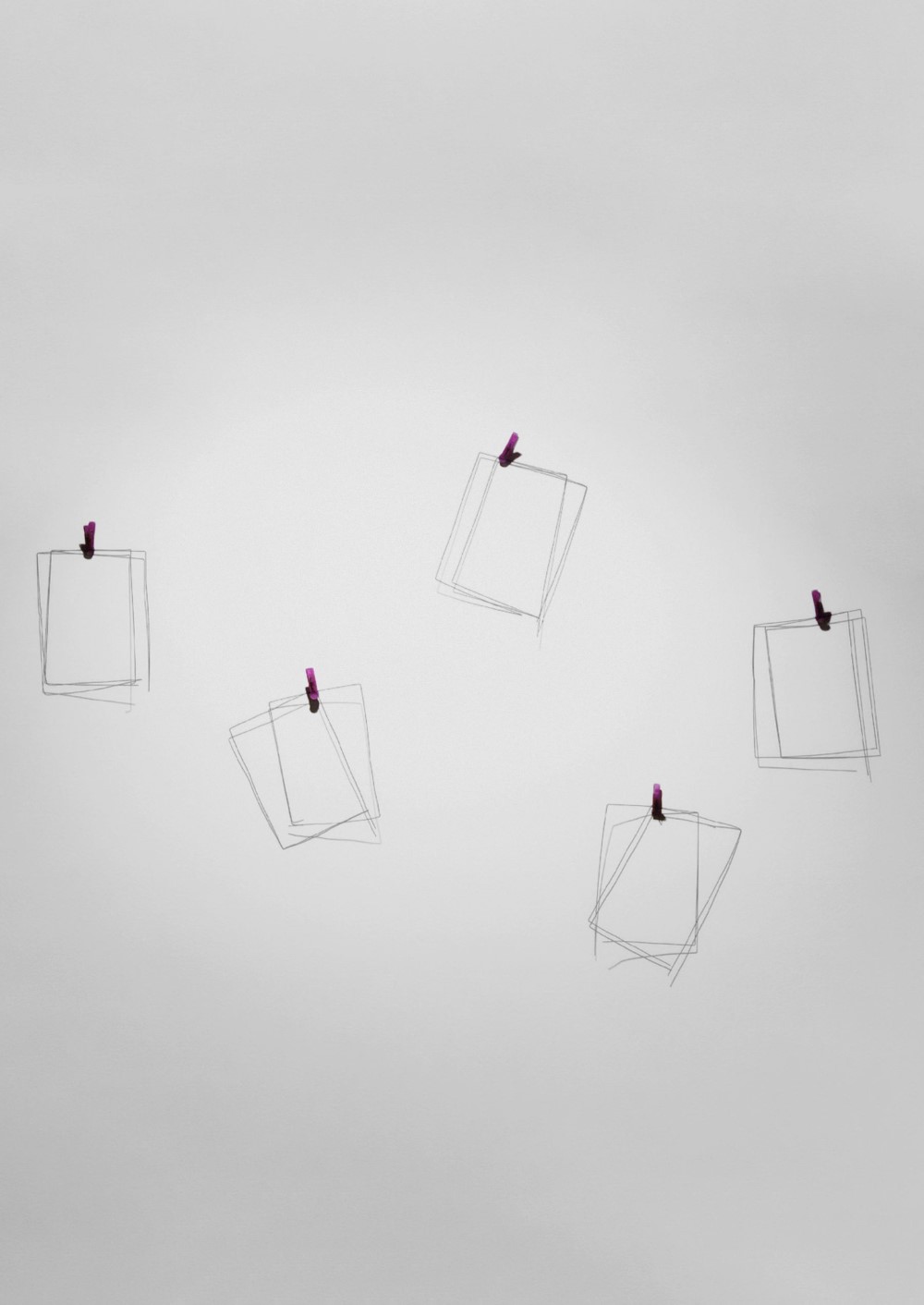
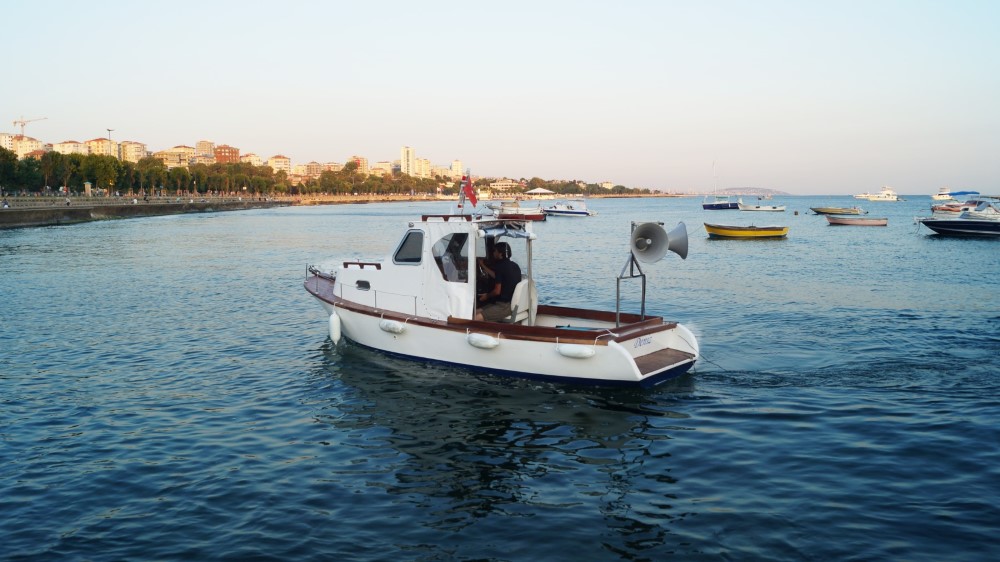
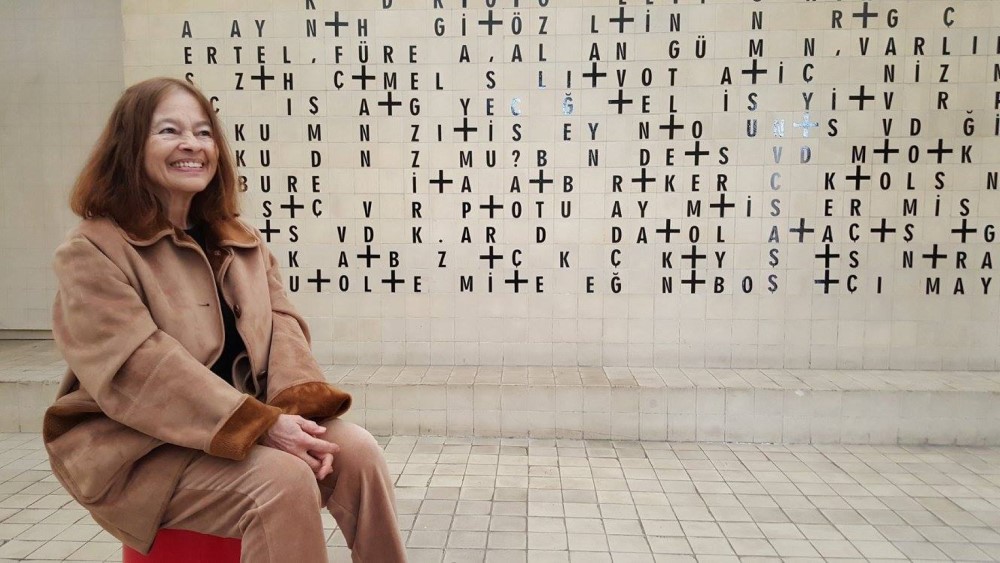
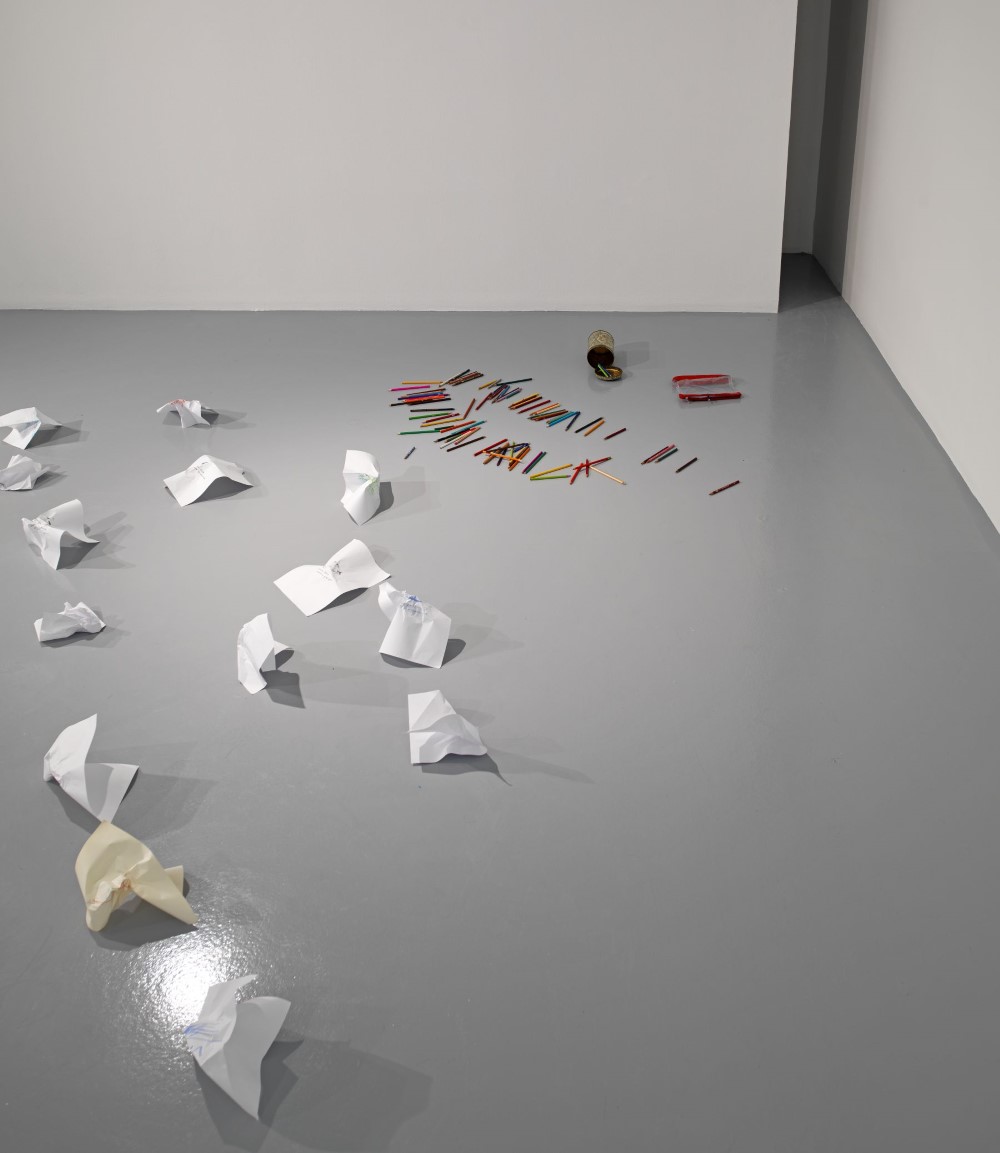
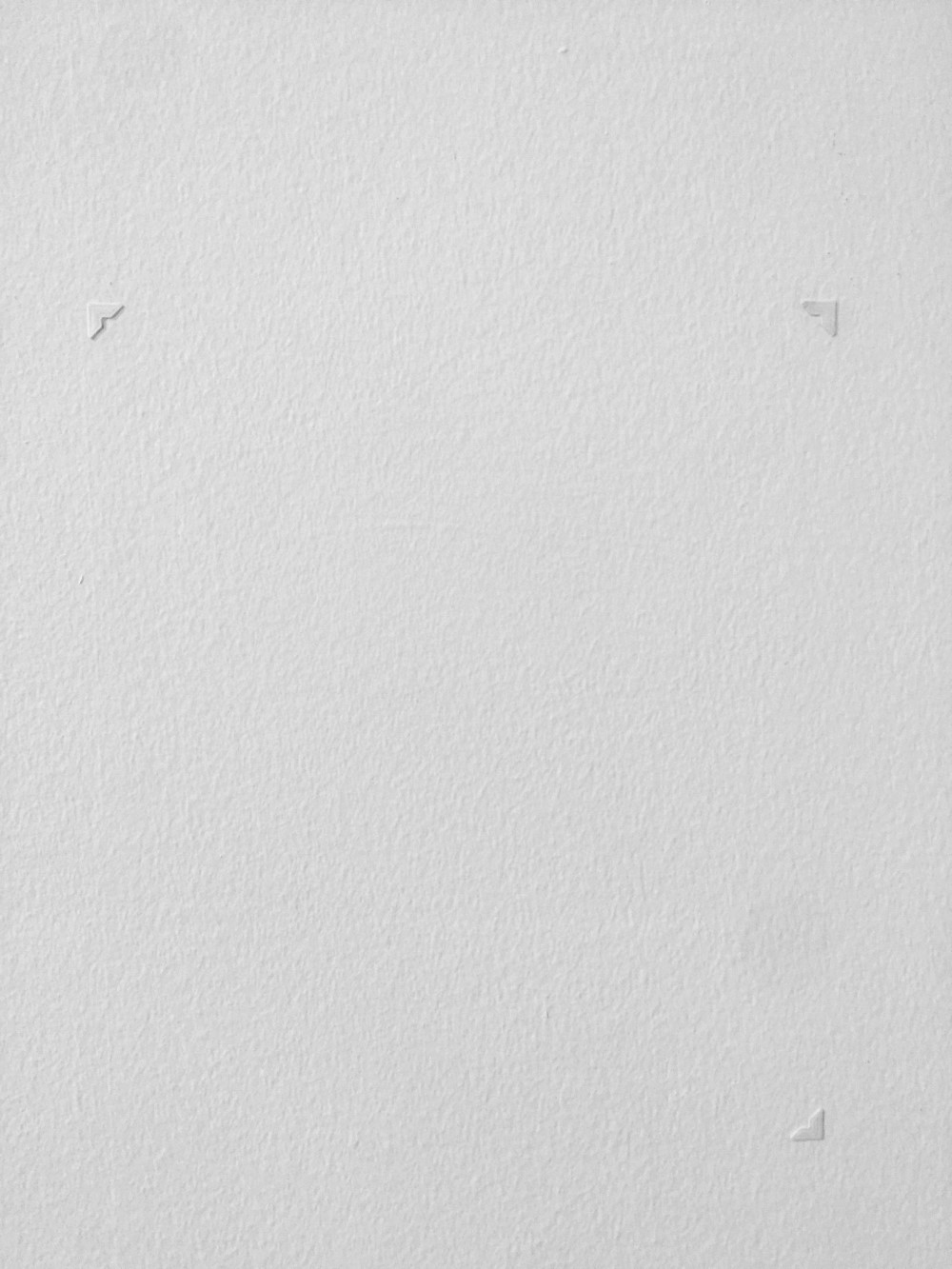
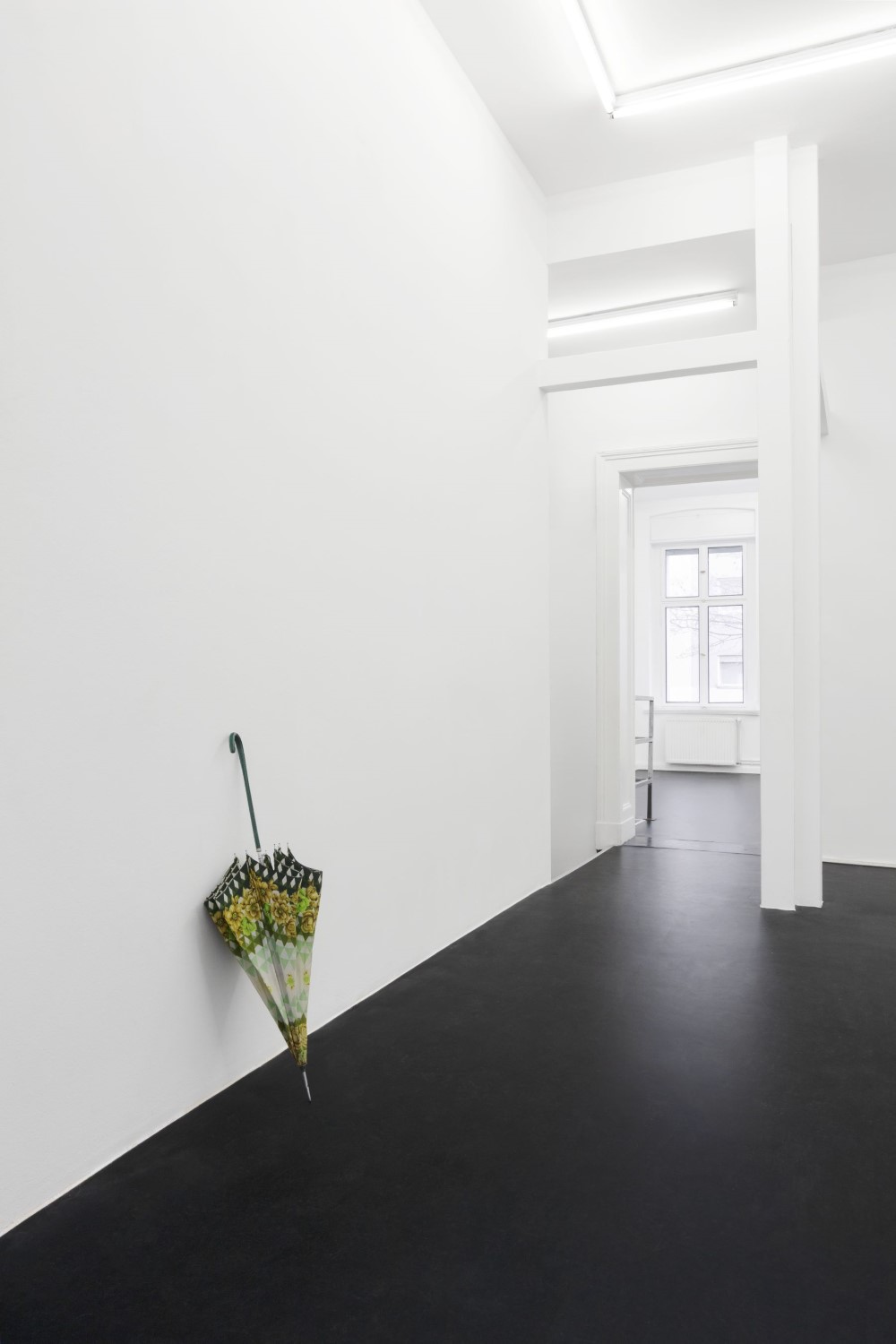
MONOGRAPHY
A companion to the exhibition, this book is the most comprehensive monograph ever published on the artist. It details almost all of her works, and includes twenty-six new essays by leading figures in the international art world as well as archival fragments and interviews.
Co-editors
Bige Örer & Nilüfer Şaşmazer
Co-published by the Istanbul Foundation for Culture and Arts (İKSV) with Mousse Publishing for the English edition, and Yapı Kredi Publications (YKY) for the Turkish edition.
ISBN 978-88-6749-513-9
Available through
Mousse Publishing, Milan
moussemagazine.it
DAP|Distributed Art Publishers, New York
artbook.com
Les presses du réel, Dijon
lespressesdureel.com
Antenne Books, London
antennebooks.com
Idea Books, Amsterdam
ideabooks.nl
VISITING HOURS
59th International Art Exhibition
La Biennale di Venezia
Pavilion of Turkey
Once upon a time...
Füsun Onur
23 April–27 November 2022
Sale d’Armi, Arsenale
Venice, Italy
Open every day between 10.00 and 18.00 except Sundays and national holidays in Italy.
COLOPHON
Füsun Onur, Once upon a time..., 2022
Mixed media installation (metal wire, crepe paper, ping-pong balls, various materials), variable dimensions.
Photography © Hadiye Cangökçe
Curator
Bige Örer
Exhibition and Project Manager
Selen Erkal
Business Development and Project Coordinator
Duygu Şengünler
Co-Editors
Bige Örer, Nilüfer Şaşmazer
Visual Identity and Book Design
Marcello Jacopo Biffi
Exhibition Designer
Yelta Köm
Lighting Consultant
Erinç Tepetaş
Assistant
Aslı Esra Kocamaz
International PR Agency
Polskin Arts & Communications Counselors
Web Developer
Kayhan Yalınkılıç
Advisory Board
Serhan Ada, Özalp Birol, İnci Eviner, Milovan Farronato, Fisun Yalçınkaya
-
Commissioner
Istanbul Foundation for Culture and Arts (İKSV)
General Director
Görgün Taner
Deputy Director General
Dr. Yeşim Gürer Oymak
Deputy Director General (Finance and Administration)
Mustafa Yegen
Director of İKSV Contemporary Art Projects
Bige Örer
Assistant to General Director
Nilay Kartal
Communications Group Director
Ayşe Bulutgil
Editorial Manager
Erim Şerifoğlu
Media Relations
Ayşegül Öneren, Talin Gidici, Coşku Atalay, Gizem Güngör
Archive
Esra Çankaya
Sales and Business Development
Dilan Beyhan, Erim Pala, Begüm Çavuşoğlu
Sponsorship Programme
Zeynep Pekgöz, Zeynep Karaman, Elif Doğan
Salon İKSV
Deniz Kuzuoğlu, Ufuk Şakar
Finance and Administration
Ahmet Buruk, Başak Sucu Yıldız, Kadir Altoprak, Deniz Yılmaz, Özlem, Can Yaşar
Human Resources
Beste Kayacan
Services
Aydın Kaya, Şerif Kocaman
ACKNOWLEDGEMENTS
The Istanbul Foundation for Culture and Arts would like to thank the supporters of the Pavilion of Turkey at the 59th International Art Exhibition, La Biennale di Venezia.
Ali Akay
Angelika Stepken
Aslıhan Altuğ
Ayşe Canan Atlığ
Ayşe Emek
Ayşen Ergene
Behiye Bobaroğlu
Beral Madra
Bilge Uğurlar
Burak Güç
Burcu Pelvanoğlu
Büke Akşehirli
Bülent Erkmen
Cem İleri
Ceyla & Timuçin Okdelen
Christian Oxenius
Çelenk Bafra
Derya Aydoğdu
Derya Bozcuk
Dilara Sezgin
Elif Kamışlı
Emil Nilsson
Emre Baykal
Evrim Altuğ
Ezgi Bakçay
Fulya Erdemci
Füsun Ertuğ
Gamze Öztürk
Goran Risteski
Göksu Aydoğan
Güler Demir
Hadiye Cangökçe
Hasan Karakaya
Helin Soruklu
Ilgın Erarslan Yanmaz
Iris Lenz
Itaru Hirano
İlhan Onur
İpek Elif Milli
Jane Quinn
Jennifer Chert
Katherine Cowan
Kıymet Daştan
Kurulay Ateş
Larissa Araz
Laurence Le Poupon
Leyla Bayrı
Luca Racchini
Margrit Brehm
Marina Verhoeven
Merve Çağlar
Merve Ünsal
Micol Saleri
Monica Fritz
Muammer Yanmaz
Nevzat Sayın
Noyan Ayturan
Nur Koçak
Onur Öztürk
Özge Araslı Yardım
Özge Uzunyayla
Rahmi Eyüboğlu
Rabia Çapa
Sarah-Neel Smith
Serap Kaçmaz
Sevim Sancaktar
Sezin Romi
Silvia Dall’Oca
Simonetta Gorreri
Suzana Milevska
Tamara Chalabi
Thomas Heyden
Tomur Atagök
Tuna Ortaylı
Ümit Mesci
Zeynep Arınç
Archives de la critique d’art
Akbank Sanat
Arter
Artlife for the World
Benice Logistics
Beykoz Kundura
Bursa Nilüfer Municipality
ChertLüdde, Berlin
documenta
Elgiz Museum
Galeri Nev Istanbul
Galerist
Govett Brewster Art Gallery
Istanbul Modern
Istanbul Painting and Sculpture Museum
Karşı Sanat
Kunsthalle Baden-Baden
Lunds Konsthall
Maçka Art Gallery
MAK Vienna
Maryland Institute College of Art, Decker Library
Middelheim Museum Library, Antwerpen
Modern Art Museum Saitama
Musée d’Art et d’Histoire Cholet
Neues Museum Nürnberg
Österreichische Galerie Belvedere
Prilep, Center for Contemporary Arts
Proje 4L
Rodeo London
Ruya Maps
SAHA Association
SALT Research
Städtische Galerie Rastatt
Texte zur Kunst
The Turkish Fulbright Commission
Üsküdar American Academy
Van Abbemuseum
Visual Arts Department, ifa Gallery Stuttgart
Yapı Kredi Culture and Arts
Women’s Works Library and Information Centre Foundation, Istanbul
ZKM, Karlsruhe
COMMISSIONER
The Pavilion of Turkey at la Biennale di Venezia is organised by the Istanbul Foundation for Culture and Arts (İKSV).
Istanbul Foundation for Culture and Arts (İKSV) is a non-profit cultural institution. Since 1973, the Foundation continues its efforts to enrich Istanbul’s cultural and artistic life. İKSV regularly organises the Istanbul Festivals of Music, Film, Theatre and Jazz, the Istanbul Biennial, the Istanbul Design Biennial, Leyla Gencer Voice Competition, autumn film week Filmekimi and realises one-off events throughout the year. The Foundation hosts cultural and artistic events from various disciplines at its performance venue Salon İKSV, located at the Nejat Eczacıbaşı Building, and offers creative events programme for children and youngsters at İKSV Alt Kat.
İKSV organises the Pavilion of Turkey at the International Art and Architecture Exhibitions of la Biennale di Venezia, conducts studies and drafts reports with the aim of contributing to cultural policy development, and supports artistic and cultural production through presenting awards at its festivals, commissioning works, taking part in international and local co-productions and coordinating an artist residency programme at Cité Internationale des Arts in France, as well as the annual Aydın Gün Encouragement, Talât Sait Halman Translation, and Gülriz Sururi-Engin Cezzar Theatre Encouragement Awards.
İKSV celebrates its 50th anniversary in 2022.
SUPPORTERS
With the Contribution of
Under the Auspices of
Production and Publication Support
Airline Partner
The Istanbul Foundation for Culture and Arts would like to thank the following individuals and institutions for their contribution towards a long-term venue for the Pavilion of Turkey for the period 2014-2034.
Akbank
Mehveş-Dalınç Arıburnu
Berrak-Nezih Barut
Ali Raif Dinçkök
Vuslat Doğan Sabancı & Ali Sabancı
Füsun-Faruk Eczacıbaşı
Oya-Bülent Eczacıbaşı
Nesrin Esirtgen
Eti Gıda San. ve Tic. AŞ
Garanti BBVA
Ahu-Can Has
Öner Kocabeyoğlu
MAÇAKIZI
Tansa Mermerci Ekşioğlu
Rana-Erol Tabanca
SAHA Derneği
Taha Tatlıcı
Sinan Tara
Vehbi Koç Vakfı
Zafer Yıldırım
Yıldız Holding AŞ
The Istanbul Foundation for Culture and Arts would like to thank the supporters of the Pavilion of Turkey at the 59th International Art Exhibition, La Biennale di Venezia.
Abdi İbrahim
Akbank
Akfen Holding
Mey | Diageo
Sevil Dolmacı
Füsun & Faruk Eczacıbaşı
Oya & Bülent Eczacıbaşı
Ahu & Can Has
Emin Hitay
Vuslat Doğan Sabancı & Ali Sabancı
Rana & Erol Tabanca
Sinan Tara
Z. Yıldırım Family
PRESS
For press inquiries please contact:
İKSV Media Relations
media@iksv.org
Click here for the press release.
